


FREE Vol. 19 No. 11 (1) • AUGUST (1) 2012 • www.indianlink.com.au • FORTNIGHTLY SYDNEY Level 24/44 Market St, Sydney 2000 • GPO Box 108, Sydney 2001 • Ph: 18000 15 8 47 • email: info@indianlink.com.au Sydney • Melbourne • Adelaide • Brisbane • Perth • Canberra INTRODUCING THE NEW INDIAN LINK RADIo App foR IphoNE, IpAD AND ANDRoID Star diplomat G Parthasarathy speaks candidly on the India-Australia relationship Forging a future

2 AUGUST (1) 2012 www.indianlink.com.au

AUGUST (1) 2012 3 NATIONAL EDITION
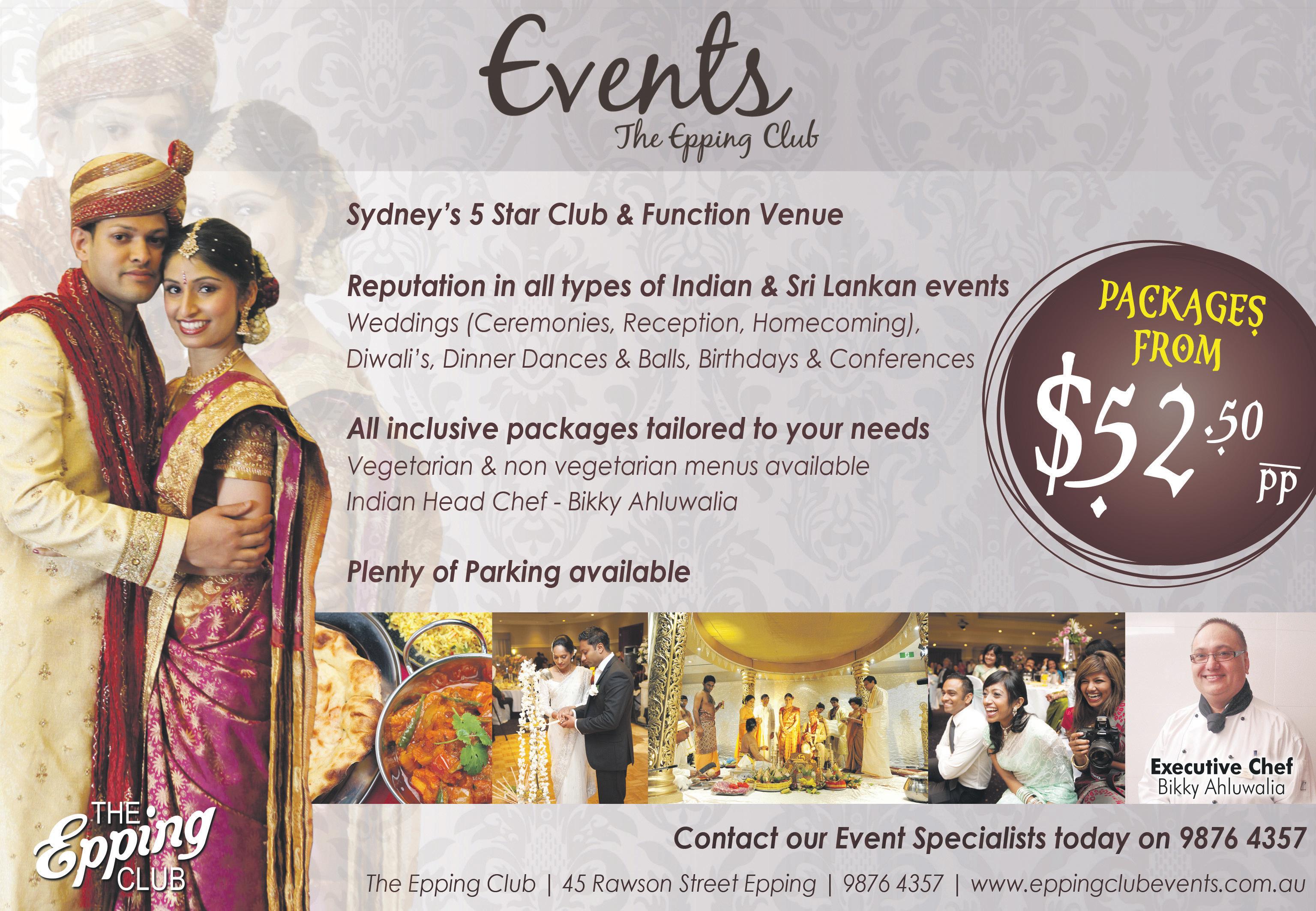
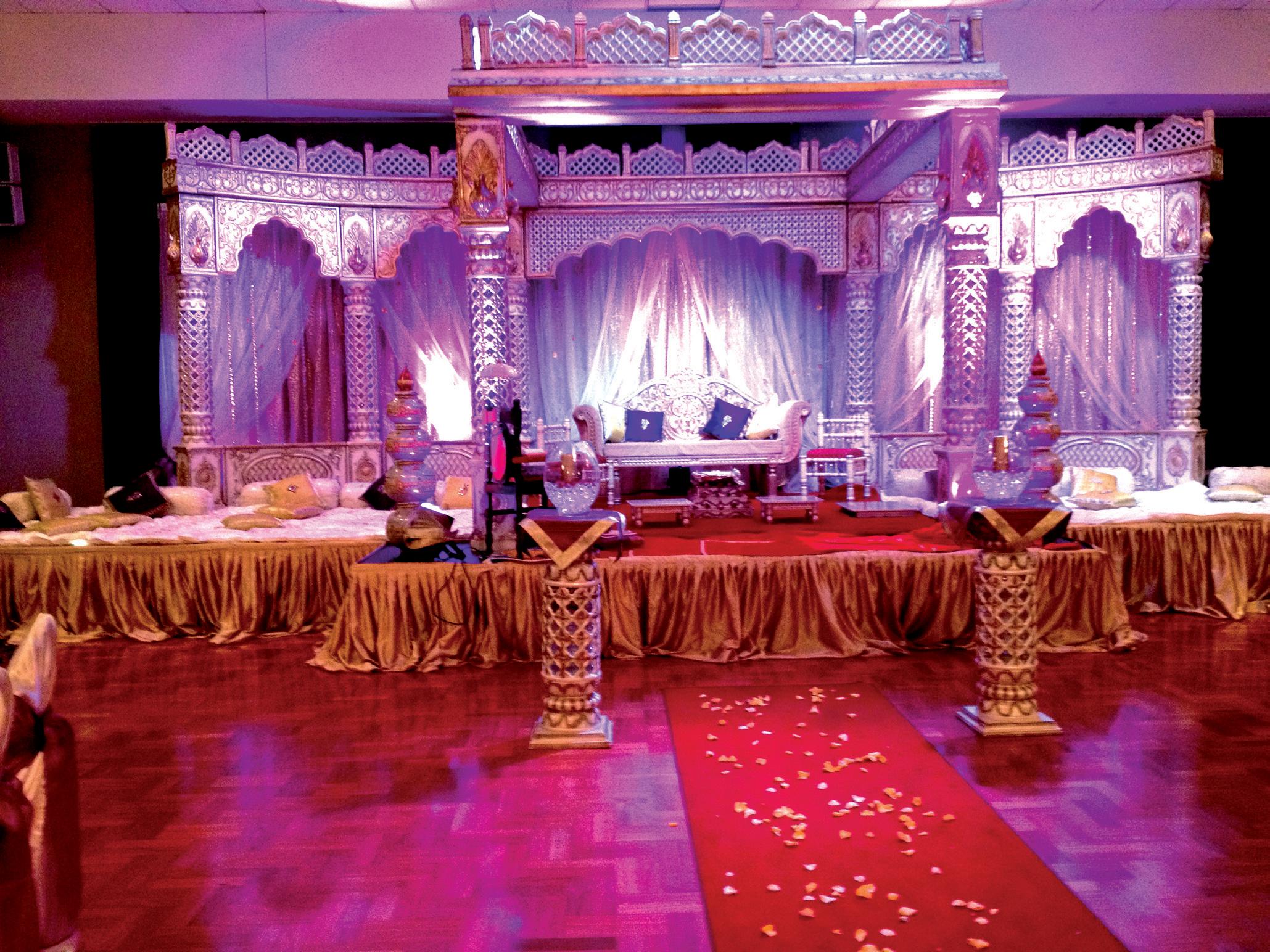

4 AUGUST (1) 2012 www.indianlink.com.au Please ask us about specials and new Mandaps arriving soon !!! Extra Special As featured on masterchef episode 40 2012 0411 280 533 02 9873 4390 www.decor-a-shaan.com.au facebook.com/decorashan are proud official media partners of masterchef 2012 Decor-A-Shaan We also look after your: Catering, Henna, Floral, Marquee & Photography needs Providing you with breathtaking event decorations, to make your special moment extra special !!!
PUBLISHER
Pawan Luthra
EDITOR
Rajni Anand Luthra
ASSISTANT EDITOR
Sheryl Dixit
MELBOURNE
Preeti Jabbal
CONTRIBUTORS
Priyadarshini Chidambaranathan, Anusha Menon, Chitra Sudarshan, Sydney Srinivas, Usha Ramanujam Arvind, Dolly Singh Miranda, Noel G deSouza, Darshak Mehta, Ritam Mitra, Leanne Woodward, Petra O’Neill, Geeta Khurana, Mital Parekh, Rani Jhala, Talia Kaur, Nancy Althea
ADVERTISING MANAGER
Vivek Trivedi 02 9262 1766
ADVERTISING ASSISTANT
Nitika Sondhi 02 9279 2004
DESIGN
Danielle Cairis
Indian Link is a fortnightly newspaper published in English. No material, including advertisements designed by Indian Link, maybe reproduced in part or in whole without the written consent of the editor. Opinions carried in Indian Link are those of the writers and not necessarily endorsed by Indian Link. All correspondence should be addressed to Indian Link
Level 24/44 Market St, Sydney 2000 or GPO Box 108, Sydney 2001 Ph: 02 9279-2004 Fax: 02 9279-2005
Email: info@indianlink.com.au

Masterchef to the rescue of the India-Australia relationship?

that dinner on our pages).
Contemporary Australian offerings seem to have stuck a chord in the Indian psyche. Move over, cricket – it’s cuisine!
An old friend from India visited Australia for the first time recently with his wife and two teenage kids. All four had their list of ‘things to do in Australia’. The items on the youngsters’ lists simply blew me away.
OK, so they wanted to pat a kangaroo and cuddle a koala. What else? See a show at the Sydney Opera House? No. Climb the Sydney Harbour Bridge? No. Go snorkelling in the Great Barrier Reef? No! Believe it or not, they wanted to visit the Masterchef Australia kitchen at its Sydney studios, and dine at celebrity chef Kylie Kwong’s restaurant in Surry Hills, Billy Kwong.
Sadly, my young guests were disappointed as they were able to do neither: Masterchef was not filming, and Billy Kwong was booked out for a private function.
When India’s leading actress Vidya Balan visited last year, one of the things she wanted to do on her only night in Sydney, was meet her “favourite TV personality” Matt Preston. Her hosts, obviously better connected than me, pulled it off for her (although we did get the chance to splash the photos from
A recently released report by the Australia India Institute entitled Beyond the Lost Decade, attempts to analyse the fractured relationship between the two countries, and makes recommendations for closer connections. Over 30 recommendations are listed: some, if adopted can have an immediate positive effect on the relationship; others seem rather ambitious in their scope but it is good to see them on paper.
One immediate action recommended was the extension of the visas of Indian students who were in Australia on Feb 8, 2010 and were affected by changes in the immigration regulations. Adjusting these students in some other visa category, allowing them to extend their stay, will be a welcome gesture by the Australian government. While this can be a short term solution, the report does suggest that Australia must promote quality education for Indian students. However, the report falls short on recommending actions on some of the basic problems which aggravated the student crisis of 2009, those of subsidised travel options for overseas students and low cost housing. Subsidised travel concessions will give the option to overseas students to use public transport rather than cutting corners and while saving a few
dollars on travel, expose themselves to unnecessary risk of walking through the streets at night. Not giving these concessions is rather petty compared to the enormous financial gain these students bring to their place of residence in Australia.
What is noted in the report is the decline in student numbers from the peak of 120,000 in 2009 to 37,500 in March 2012, a fall of 82,500. These declining numbers have cost the industry close to $3 billion. Putting this in context, in the May budget the government cut defence spending by $5.5 billion over the next four years in order to return to the surplus forecast of $1.5bn for 2012-13. Connecting the dots gives us a clear indication of the strong link between the loss in Indian student numbers and its impact on the Australian economy.
It is noteworthy that a major report such as this commissioned by the Australia India Institute had limited ground-based community consultation. If the 400,000 plus Indian-origin Australians are going to be ambassadors between the two countries, a greater involvement from them could have been expected in the preparation of the report. Perhaps supplementing this report should be a program to get George Colambaris, Gary Mehigan and Matt Preston to get on a plane and film a series of Masterchef in India. There will be a free flow of goodwill!
AUGUST (1) 2012 5 NATIONAL EDITION
EDITORIAL
INDIAN LINK
PAWAN LUTHRA
www.indianlink.com.au
SPIRITUAL
Chinmaya Mission events
Starting Fri 17 Aug 9.30am to 11.00am at Chinmaya Sannidhi Ashram, 38 Carrington Road, Castle Hill.
New program at Shishu Vihar: Bonding of Parent and Child
Starting Sun 29 July 5-week program for parents and children aged 2 – 4 ½. Topic will be “Lord Krishna” and “Managing Stress/Art of Parenting”.
Sanskrit lessons
Chinmaya Mission Australia’s Beginners’ Sanskrit Course is held weekly on Thursday nights, 6.30 pm to 7.30 pm. It involves Alphabet, Vocabulary, Basic Reading, Basic Grammar, Basic Conversation lessons.
Krishna Janmashtami celebrations
Fri 10 Aug 6.00pm to midnight at Baulkham Hills Council Function Room Details Br Gopal Chaitanya 02 8850-7400 or 0416 482 149

Krishnajanmashtami at Ramakrishna Sarada
Vedanta Society
Sun 12 Aug Celebration of Sri Krishna’s Birthday: Come and learn about and be inspired by this all important figure who has influenced the history, culture and philosophy of countries
from India to Indonesia.
Program: Group chanting of the Sanskrit and reading of the English translation of Chapter 9 of the Gita. Two talks including one by Pravrajika Gayatriprana. Distribution of offered sweets and savouries. 10.40am to 12 noon. Venue: Vedanta Hall, 15 Liverpool Road, Croydon. Details 02 9745 4320 or visit www. saradavedanta.org
Children’s classes at GOD
The Global Organisation for Divinity announces the start of Gopakuteeram, spiritual educational classes for children aged 4 - 12 years.4.00 pm - 5.30 pm at the Crestwood Community Centre, Cnr Crestwood Drive & Chapel Lane, Baulkham Hills. Classes are free for all participating children. Parents can join in the devotional lecture by Sri Deepak Vinodji, kirtans and prayers in another room within the centre during the Gopakuteeram classes.
Details Jayashree 02 9620 4676
MISC
Personal and Home Protection
Sun 22 July The NSW Police Force is presenting a Forum on Personal and Home Protection to be hosted by India Club, 2.00pm – 5.30pm, at the Hills Shire Council Function Room,
129 Showground Road Castle Hill, (Cnr. of Showground and Carrington Road). Details Shubha Kumar 02 9873-1207 / 0402 257 588.
Health seminar: Ready Steady Get Healthy
Sat 25 Aug SEVA’s SAHELI Project presents an evening of information and activities to increase the awareness of the importance of a healthy lifestyle and to promote the active participation of the Indian community in the free Get Healthy Information and Coaching Service provided by the NSW Multicultural Health Communication Service (MHCS). Cherrybrook Community Centre, 3pm - 6 pm. Details Shantha Viswanathan 0422 082 608 Gunjan Tripathi gunjan@hindi.org.au
Want to help someone with an intellectual disability?

Citizen Advocacy Western Sydney Inc is a not for profit organisation whose mission is to introduce people with intellectual disability to unpaid community members. Individuals are sought to take an on-going personal interest in a person with intellectual disability. Training and on-going support are provided by experienced professional staff. For further information contact Kaye on 02 9893
8210 or drop into the office at 46 Albion Street, Harris Park 2150.
Hindi Divas
Australian Hindi Committee (AHC), IABBV Hindi School and ILASA (Indian Literary Arts Society of Australia) jointly celebrate Hindi Mela with two events:
Sat 15 Sept Kavi Sammelan at Epping Leisure and Learning Centre, 1 Chambers Court, Epping, 4.30pm to 7.30pm
Sun 16 Sept Hindi School program at Thornleigh West PS, Giblet Avenue, Thornleigh, including display of students’ work and resources, children’s poetry recitation, light snacks, awards and skits, 10.00am to 3.00pm.
Details Mala Mehta 0412 283 677; Gunjan Tripathi 0413 886 527.
Seniors
Sri Om Foundation is planning to set up a Day Centre (from Sept/Oct 2012) at Liverpool for Seniors above the age of 65 with any disability. This Day Centre will be primarily for Liverpool LGA residents. The centre will be open once a week (Tues or Wed), from 10 AM to 2 PM. All the activities, including transport, morning tea and lunch and once a month outing will be provided FREE.
Details Jay Raman 0410 759 906 or Shweta Sharma 0405 367 238.

FUNDRAISER
Light for Life Trivia Night
Sat 18 Aug Come and enjoy a fun filled night of trivia, with singing and dancing too… 7:00pm for a 7:30pm start, at Don Moore Community Centre, North Rocks. Tickets: $20 each, includes dinner. The event is a fundraiser for Lifehouse at RPA, a state-of-the art cancer centre that will incorporate clinical care, research and education into a single organisation. Details Swati Jain 0412 439 596 or swati86@live.com.au
Sur Sandhya for Sunderbans
Sat 18 Aug Jadavpur University
Alumni Association NSW and the Bengali Association of NSW jointly host a musical evening Sur Sandhya at the Redgum Function Centre in Wentworthville. Funds collected will be donated to MUKTI - an NGO working in various areas of India and amongst the deprived communities and villages in the Sunderbans area of West Bengal. The concert will feature visiting sarode maestro from India Sri Anindya Bannerjee and well known Sydney based musicians Details Surja Gupta 0413 209 655.
6 AUGUST (1) 2012 www.indianlink.com.au Business for sale Catering for 50 to 350 guests, Established for over 25 years. A unique opportunity to purchase a beautiful and renovated reception center with booking and potential to grow. New lease can be made. Apply via email kev786h@hotmail.com Wedding reception center & restaurant What’s on

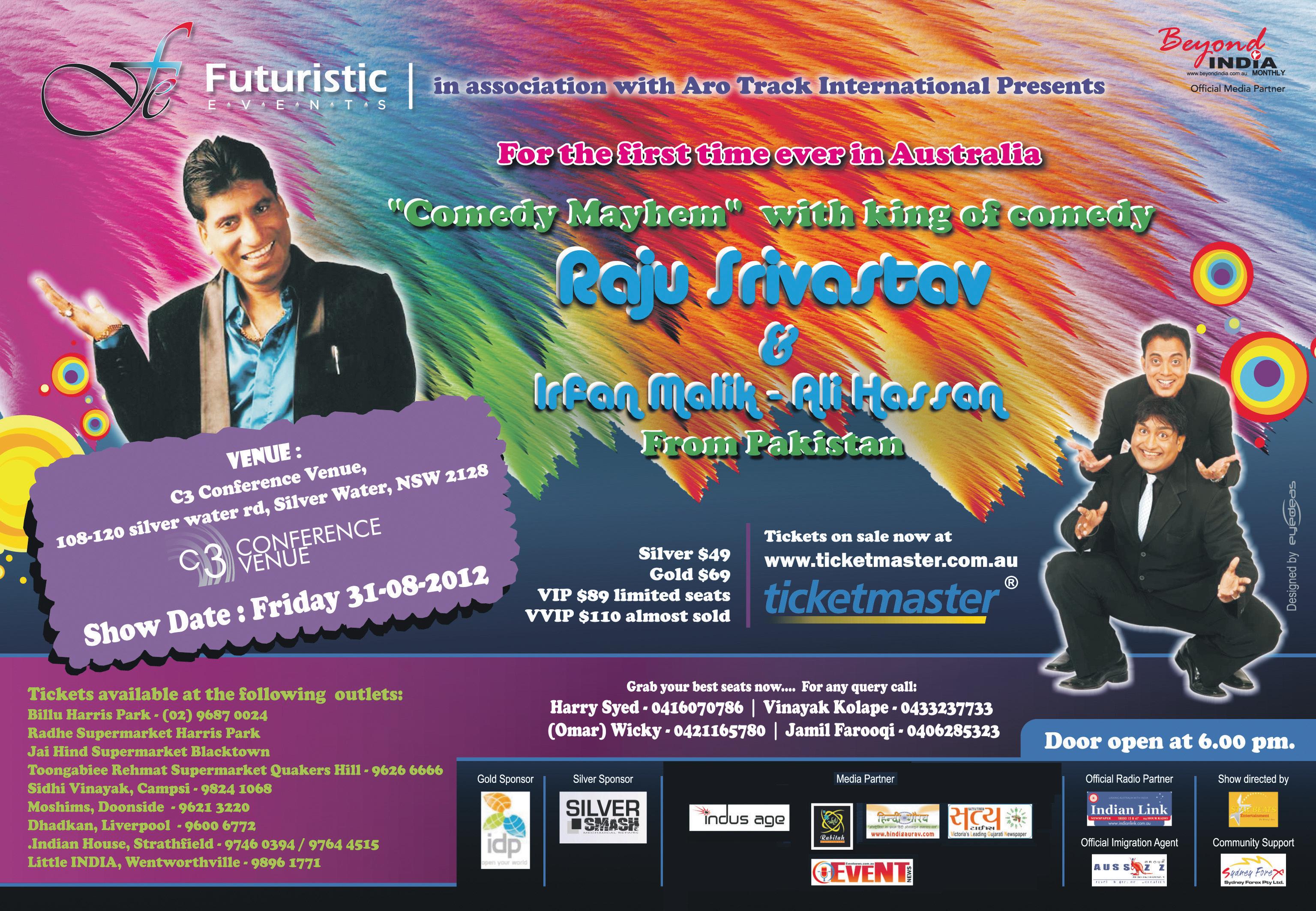
AUGUST (1) 2012 7 NATIONAL EDITION
How do you judge people?
By they way they look, or by what they say? A unique short film addresses racism in Parramatta
in Event Cinemas at Parramatta and most of the advertising for it has been free. “In that sense, this has truly been a community project,” concludes Ms BriceWeller.
How comfortable do people feel talking about the thorny subject of racism?
BY PRIYADARSHINI CHIDAMBARANATHAN
Hwalked down the street? Have you ever been denied an opportunity because of the colour of your skin, or the way you speak? Have you ever experienced racial abuse?

Would you like to see something done about it?
‘One Parramatta’ is a short film project targeting racial abuse in the Parramatta area. Partially funded by the Department of Immigration and Citizenship, this project is run by All Together Now, the first Australian nonprofit organisation dedicated to erasing racism. The project is envisioned as a series of seven films, interviewing passers-by on the street, to be released over the next one year.
The first film, What are Your Values? was released on July 19 at Event Cinemas Parramatta. In this episode filmed over the course of
two days, the crew spoke to 60 people of varied racial and ethnic backgrounds in the Parramatta area about their values. “The idea was to highlight the fact that the people of Parramatta have shared values,” says Priscilla BriceWeller, Managing Director of All Together Now.
As respondents list what is important to them, you realise that these people, who may look or dress differently from you, hold pretty much the same broad values as you do. (So do you judge people by how they look, or what they say, the film asks pointedly).
What emerged as the most important value across the board, was family, followed by community, and then education. If this is true, why is there such a high incidence of racism in this area?
“There is something very wrong here; we had to highlight the discrepancy between values and actual behaviour,” says Ms Brice-Weller.
The short film has already generated more than 500 views on YouTube. Watch it online at http://youtu.be/uVR_ dTMAeQM.
Parramatta is one of the most

multicultural cities in Sydney, with over half of its residents being born overseas and about 8% in India. However a recent study by the University of Western Sydney, titled ‘Challenging Racism’, found that this area has a much higher incidence of racial abuse than the national and NSW average. About 35% of the respondents felt they were treated with less respect due to their race and cultural background. Also, the


number of self-identified racists seems to be unusually large, at 23%. Compare this with the national average of 23% and 12% respectively, and we understand why Parramatta was chosen for this project.
“We wanted to use the results of the study in a positive manner and address the issue in a way that would get people involved,” says Brice-Weller. “We wanted to involve more mainstream people in this project too”.
This led them to approach the issue in a manner that would be “fun and different from the usual community projects”, appealing to ‘young adults’ in the 18-34 age group who “are the most likely perpetrators and victims of racism in Parramatta”. All Together Now uses social media and films effectively to reach this audience, and is one of the first non-profit organisations to do so.

There has been considerable community support for the project, with most of the 19-member film crew coming on board as volunteers. It was directed by Remi Luxford (of Shoot To Kill fame) and produced by Lex Luxford (UFO Films). The film has been aired free of charge
“Although about one-third of the residents of this area were supposed to have experienced racial abuse, we found that the number of people who actually admitted to being abused was much less,” replies Ms BriceWeller. “We think this may be because some people were too embarrassed or hurt to publicly admit to being racially abused. Racism is hurtful, and some people don’t want to re-live that hurt by telling their story”.
All Together Now was founded by Priscilla Brice-Weller two years ago. “When I lived overseas, people used to ask me questions about Australia and racism, about asylum seekers, refugees and Indigenous people. This gave me some insight into how Australia is viewed from overseas. When I returned to live in Australia I decided to do something about it,” she reveals.
The organisation has run two successful campaigns so far, Talk About Racism which encouraged people to have conversations about racism and Give Racism The Finger which saw over 50,000 people sign up to speak up against racism.
One Parramatta is a genuine attempt to introduce rational discussion about an issue that is usually subject to emotional responses, which will hopefully make a difference in the Parramatta region.
8 AUGUST (1) 2012 Partner Required in a Near NEW INDIAN RESTAURANT & CAFE Located in a small shopping village in residential area in Lower North shore. This profitable restaurant has Brand New Fit-out. RENT ALMOST 30% LESS THAN MARKET RATE. Long Lease. 70-75 seats. Easy to manage. Unlimited 457 work visa approvals. Operating as Cafe in the morning and Fine Indian restaurant in the Evening. Contact Saurabh on 0430113695 or saurabhrajbehl@gmail.com m AI ns TREA m




AUGUST (1) 2012 9 NATIONAL EDITION All types of function & c Atering AVARI Indian Restaurant www.avari.net.au B.Y.O • One Free Dish • On order over $60 (pick up only) Free Home Delivery Available • (Minimum order $35.00) 6:00pm to 9:00pm 7 days All pick up over $35.00 receive 10% discount (Monday – Thursday) Opening H O urs Lunch: Tue to Sun 12:00pm – 3:00pm • Dinner: 7 Days 5:00pm till late Contact – Hilary on 0415180060 GATEWAY PLAZA SHOP 4/2 OLD NORTHERN ROAD BUALKHAM HILLS Customer Parking Available Underneath the Restaurant Entrance Through Windsor Road *For Limited time only. Not valid with any other offer Aut H entic i ndi A n c uisine 9639 7597 or 9688 7400 Stockland Baulkham Hills Baulkham Hills Library Cosmo Lighting
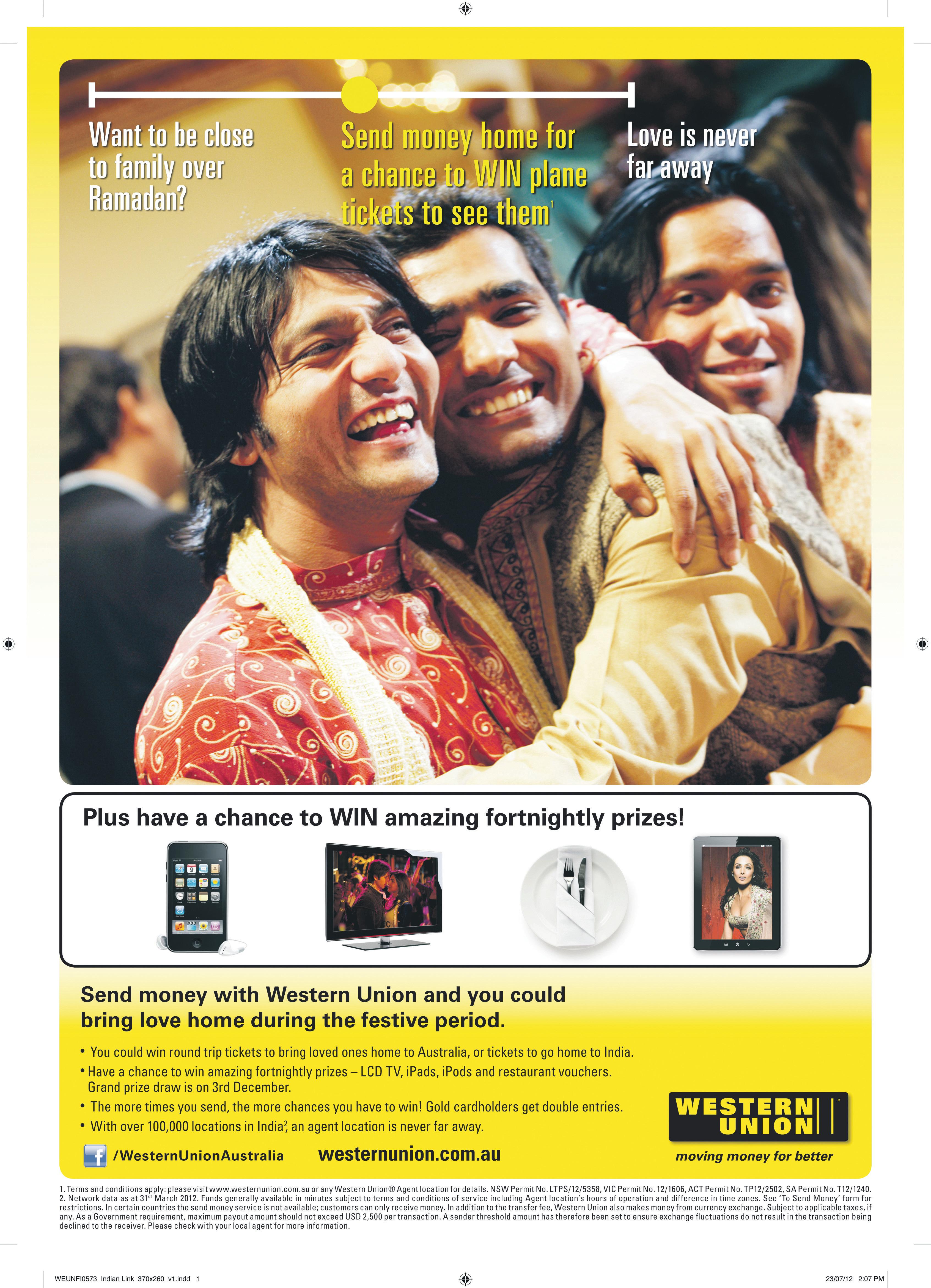



AUGUST (1) 2012 11 NATIONAL EDITION
Truth through fiction
The reality of the conflict between the LTTE and Tamil Tigers is chronicled through a compelling new work of fiction
a gripping fictional narrative revolving around the so-called ‘confessions’ of Tamil Tigers. Spine-tingling scandals and illicit love affairs between captivating characters are also woven into the plot to create an exciting thriller.
into prison after being accused of associating with the Tigers. The novel poignantly tracks the torture that Kumaran endures behind bars and the deepening agony of his family, particularly his Amma.
isakesa “Vissa”
Chandrasekaram beamed with pride at the official launch of his Tigers Don’t . Held at Gleebooks in Sydney on July 27, the launch date marked the 29th anniversary of Black July, one of the most tragic events in Sri Lankan history.

Friends and colleagues of the well-rounded human rights lawyer, playwright and author, joined together to applaud Vissa for his literary achievement.

But, the launch of Tigers Don’t Confess was not the only cause for celebration on the night.
Two weeks earlier, Vissa received his Doctor of Philosophy testamur from the Australian National University for successfully completing his thesis titled, Do Tigers confess? An interdisciplinary study of confessionary evidence in counter-terrorism measures of Sri Lanka.
Vissa’s project was a fundamental driving force behind the production of his novel.
“Not everyone wants to read a thesis, but many would read a work of fiction,” he said. “Also fiction shrouds the truth, so my book will evade censorship”.
Tigers Don’t Confess is set in the early 1990s, when the Sri Lankan government was at war with the Liberation Tigers of Tamil Eelam (LTTE). Using factual, wellresearched data from his PhD thesis, Vissa was able to construct
Joining Vissa to launch his novel were guest speakers Dr Yasmin Tambiah, Writer and Senior Research Development Officer at the University of Western Sydney; and Dr Vicki Sentas, a lecturer in Law at the University of New South Wales.
“Vissa is a playwright who pushes conventional boundaries,” said Dr Tambiah.
While she admitted that the novel would have benefitted from additional editing, her evaluation of the book was encouraging and overall positive.

Dr Tambiah commended the book for its ability to provoke compelling questions in the mind of the reader, such as why and how is the enemy constructed and explained; and, what is justice and how does one serve it?
She also praised Vissa for his ability to seamlessly integrate the very substance of Sri Lankan culture into the narrative itself.
Tigers Don’t Confess carries a cast of complicated characters within its pages. One such character is Tissa, the Singhalese Deputy Chief of the Terrorist Investigation Team. Tissa’s struggle to make difficult choices and grapple with his own moral conscience incites the reader to squeamishly question what they would have done if they were placed in the same position.
But it is character Kumaran that truly strikes an emotional chord within the reader. This Tamil university student is thrown
According to Dr. Tambiah, Vissa’s experience as a lawyer is greatly reflected in the careful deconstruction of Kumaran’s confession and the courtroom scenes that surround his case.
It was certainly no coincidence that the date of Vissa’s book launch coincided with the 29th Anniversary of Black July. When asked why it was so important to launch Tigers Don’t Confess on the same date, Vissa responded saying, “Both Singhalese and Tamils are in denial about their share in it and tend to blame only the other party - the enemy. Black July is a good starting point for any discussion about justice and reconciliation because it was not something completely denied by the Singhalese majority in Sri Lanka.”
Guest speaker Dr Vicki Sentas gave a brief overview of the history of Black July.
Black July refers to a series of anti-Tamil riots that took place in Sri Lanka from July 24 to 29 in 1983. The violence was triggered by the murder of thirteen Singhalese soldiers at the hands of the LTTE, and around 3,000 Tamil civilians were massacred in subsequent pogroms that were sponsored by the government.
According to Dr Sentas, Black July was considered “a critical turning point for spiralling violence and conflict between the LTTE and the army”, and many Tamils fled Sri Lanka because of it.
Dr Sentas acknowledged that

the LTTE also committed severe war crimes, namely using civilians as human shields and killing people who tried to escape the country.
But the Sri Lankan government is yet to take responsibility for the part it played in the massacre.
Dr Sentas also accounted for Vissa’s decision to create a fiction novel based on his thesis, which she called “the book behind the book”. She explained the dangers that Tamil and Singhalese people face in Sri Lanka for opening up about their experiences of the war. “By presenting his research behind the guise of a fiction novel, Vissa’s story can be shared in a manner that significantly evades risk,” said Dr Sentas.
Congratulations to Vissa on completing his PhD and novel. Well done, Vissa!
Using factual, well-researched data from his PhD thesis, Vissa was able to construct a gripping fictional narrative revolving around the socalled ‘confessions’ of Tamil Tigers
It was certainly no coincidence that the date of Vissa’s book launch coincided with the 29th anniversary of Black July
12 AUGUST (1) 2012 www.indianlink.com.au cO mmun ITysc E n E
ANUSHA MENON
Visakesa Chandrasekaram
FREE BUSINESS BRIEFING

Potential to earn +$100,000 p.a. while keeping your present job

Are you like most people who have studied various material on wealth creation, then got “fired-up” each time and pledged to go into business for yourself someday, but NEVER got around to it because you
• did not have the (large amount of) start-up capital that was required?
• Just couldn’t afford to give up your full-time job to do so due to existing commitments?
• Simply could not find the right opportunity (one with minimum outlay and maximum returns)?
If you are a motivated, self-starter who would seriously like to attain financial independence, earning a residual income with the potential to exceed *$100,000 p.a. in 2-4 years, starting part-time with relatively no financial risk, then call
(02) 82302521 (24 hrs)
And we’ll introduce you (without obligation) to one of the most lucrative business ventures of our time. This is a genuine, legal and high-integrity opportunity that is attracting people from all walks of life, including highly skilled professionals such as doctors, lawyers and business executives. It is definitely not for those looking for a ‘get rich quick’ scheme or rewards without effort-such things don’t exist.
Understand that if you don’t have, it’s because you don’t act. Call Now. (Serious enquires only)
CONTACT : DEEPIKA SHARMA

AUGUST (1) 2012 13 NATIONAL EDITION
Forging A future
The past is the foundation of the future; though it may seem like ancient history to some, India’s current relationship with Australia has been built on the rubble of political mistrust, diplomatic disruption and media misinterpretation. The reality is that the India-Australia relationship weathered many storms in the past two decades, and continues to harbour in still uncertain waters. The late 1980s and early 1990s were difficult times with little or no dialogue between the two countries, and the current cordiality that exists has been the result of changed perceptions and painstaking diplomatic efforts developed and enhanced only in the past few years.
Meet G Parthasarthy
Gopalaswami Parthasarathy was High Commissioner of India to Australia from 1995 to 1998. It was a particularly turbulent time when relations were strained because of a series of nuclear tests India had conducted in Pokhran, Rajasthan. While major global powers including the United Nations condemned the tests, the US went a step further and imposed economic sanctions on India. Australia joined the bandwagon of criticism, vociferously proclaiming its disapproval of what seemed to be Indian audacity at the time.
As High Commissioner of India, Mr Parthasarathy was caught in the crossfire between the two countries, and he was witness to the near breaking down of relations at that crucial time.
However, a lot of water has flowed under the proverbial bridge connecting India and Australia, and Mr Parthasarathy has followed the intricate and slow process of rebuilding mutual trust and respect over the past two decades.
Mr Parthasarathy was in Australia recently in his capacity as one of the six members making up the Australia India Institute’s Perceptions Taskforce created in September 2011. In brief, this Taskforce was formed to review Australia-India relations,
particularly in the light of uneasy past relations and more recent situations, as well as to make recommendations on how to respond to these challenges. The report titled Beyond the Last Decade, discusses the key issues arising from this process and presents them from Indian and Australian viewpoints. As a crucial member of the Taskforce, Mr Parthasarthy was here to present the report to a distinguished audience at the University of Sydney.
I took the opportunity to contact Mr Parthasarathy again, and continued the conversation which I had with him 14 years ago, a few days after Pokhran. He was then being grilled in Australia both by the politicians and the media about this “bastardly”act by India. Despite the passage of years, Mr Parthasarthy was just as friendly, warm, erudite, thoughtful and often outspoken as I remember him in 1998.
Raking up the past
We began with delving into past history, from the time of Mr Parthasarathy’s tenure as High Commissioner of India in Australia and the hostility that Australia harboured towards India. In his opinion, what were the reasons behind this openly abrasive attitude?
Mr Parthasarathy was charmingly candid as he firmly lobbed the ball into Australia’s court. Relations were already strained, he explained, but following the Pokhran nuclear tests, Australia’s overreaction to the situation prompted India to retaliate with a virtual diplomatic boycott. “Between 1998 and 2002 the Australian High Commissioner had no access to any major politician or decision maker in India. Even the Deputy Prime Minister Tim Fisher, who was a very well meaning minister, was not granted access to India’s PM,” he recalled.


“Australia’s overreaction to the nuclear tests completely mired the already tenuous relationship between the countries. Foreign Minister Alexander Downer felt that India would collapse under the weight of sanctions. And I told him that we will not deal with Australia; Australia did not count. We will deal and sort out matters with the US, which we did. I think Australia was punching above its weight at that point in time,” added Mr Parthasarathy.
Australia’s politicians set the tone after India liberalised
When India took the path of liberalisation in 1991, most major Western countries such as United States, the United Kingdom etc began to woo India. Where was Australia at this time?
“Keating (then the Prime Minister of Australia) was particularly symbolic of this policy of pretending India did not exist,” said Mr Parthasarathy emphatically. “There has been blame attached to Australian diplomats, but the reality is that they were quite professional.
I think this was the personal arrogance of the then Prime Minister Paul Keating, which was really responsible for the relationship India and Australia had in the early 1990s. I must say that the coming of John Howard and Tim Fisher symbolized change”.
I recalled that Gareth Evans, Foreign Minister in the Keating government had been vociferous in his criticism of India.
“Gareth was a person who was far too preachy, too full of himself. There is a report about a conversation he had with VP Naryanan, where all he could talk about was the great economic opportunity India would get if Telstra was allowed into the country. Telstra came in and did not stay a year!”
It’s evident that the Australian diplomatic corps did not recognise the true potential of India. And post-Pokharan, while relations with the US and the ASEAN countries improved, Australia’s relations with India remained mired in distrust. This shortsightedness resulted in relations taking even longer to heal, which affected the economic, social, business and diplomatic status between the countries.
A change of heart
I recalled that in our meeting in 1998, Mr Parthasarathy had expressed hurt in South Block at the words that India had committed an act of ‘nuclear bastardry’. Has Australia been forgiven for making that statement?
“Well, time moves on and you can’t live in the past,” observed Mr Parthasarathy. “Eventually as Indian influence grew, especially as the India–US relationship improved with the coming of George Bush, India began to be viewed as a strategic partner by the United States. And then Canberra saw the writing on the wall.”
The relationship took its time to change from openly hostile to grudging interaction to cordial respectfulness. But despite that change, no Indian Prime Minister has visited Australia for over 25 years, even at the Commonwealth Heads of Government Meeting (CHOGM), last held in Perth in October 2011.
“I think the relationship now is very good and there are no differences of any substantive nature,” stated Mr Parthasarathy. “The Indian Prime Minister could not come to CHOGM primarily because they really had pressing domestic engagements. Otherwise, an Indian Prime Minster will not miss a Commonwealth Head of Governments meeting. However, the Vice President attended, and this was indicative of the high symbolic importance that India attaches to the relationship with Australia”.
Good neighbours, but friends?
It’s clear that Mr Parthasarathy felt the time for change was well at hand, and that we should look forward to a more fruitful, positive alliance with Australia.
“Yes, we should now look to the future and leave the past behind us,” he confirmed. “And I would say that over the last 3-4 years the relationship has really improved”.
The Indo-Australian security issues are considered very significant, so is the perception of Australia being too close to China damaging the relationship at all?
“No, I don’t think so,” emphasised Mr Parthasarathy. “When Kevin Rudd was Prime Minister, what surprised all was his unilateral decision to withdraw from the four-power naval exercises which had Australia, Japan, United States and India participating without any prior consultation with India or any others. It did raise some eyebrows in New Delhi. But that’s the past, it’s behind us. And I think we’re looking to the future, and the future looks bright”.
Mutual media massacres
However, I wasn’t so keen to leave the past behind! There were questions which needed answers. I asked Mr. Parthasarathy about an issue that has dogged us through the decades, and continues to do so – the role of the media. The Indian media went berserk in 2009 and 2010, splashing every conceivable news channel with the students’ issue. Almost in retaliation, the Australian media’s reportage on the lead up to the Commonwealth Games in Delhi was vitriolic and derisive. What triggered off this media war and when will it end?
“I wouldn’t call it a media war,” Mr Parthasarathy replied. “You have a hyperactive, highly competitive, news channel development in India and any story which gives better ratings is welcome. Both Australia and India tend to go overboard with public reaction – that’s one thing that unites us. Yes, parents in India were concerned (when the news broke about the students in Australia); after all, they had accumulated their life savings to send their children to Australia, and they would feel compelled to ask them to return. And all because of the media exposure of the issue.”
Positive outcomes
So have there been any positive outcomes? “Certainly, because the Australian government has taken action,” Mr Parthasarathy was quick to respond. “The pressure has eased and people with
14 AUGUST (1) 2012 www.indianlink.com.au cOVER s TORy
Renowned diplomat and former High Commissioner to Australia G Parthasarathy comments on the past, present and future relationship between Australia and India
AWAN LUTHRA
Former Australian High Commissioner to India, John McCarthy AO and former Indian High Commissioner to Australia G Parthasarathy at the launch of the Taskforce report
garages posing as universities and colleges to lure Indian students and the institutions who gave a wrong impression of Australian education, have now been closed down. The fact is that Australian education standards are very high, and their institutions are very highly regarded globally.” However, he added, “Australia should not focus only on numbers and money, but with the quality of education for Indian students. Happily, the trend is moving in that direction. It is clear that Australia will have to make a decision: does it want quality in quality institutions, or does it want numbers. The rapid expansion of the middle class in India means parents can afford to send their children overseas to study – and Australia should offer their best in education for these students. They should advertise in India that the best quality of education overseas is available in Australia. This will compel good students to come here.”
Student shenanigans
I couldn’t resist asking, could the student crisis have been handled differently?
“No, it was a situation which broke out. If there were isolated incidents, it would have blown over. But the number of incidents increased and naturally, people in India began to worry about an emerging pattern of attacks,” said Mr Parthasarathy. “I always pointed out that it was confined to Victoria, which was rather surprising as Melbourne is one of the best integrated cities I’ve known. I argued that it was confined to lumpen elements reacting to the recession in employment and was not a factor or characteristic of Australian society. I made this clear
on Indian TV”. But should the diplomats and politicians have been stronger in their denial of any serious problems, I insisted. “The Indian High Commissioner Sujatha Singh was very careful with what she said on Indian TV, but there is only so much a diplomat or politician can do. Sometimes you are swept away by the tide of events,” explained Mr Parthasarathy. “It was a good story from a media point of view, but that’s the way the media functions. You get excellent coverage of Gilchrist and Steve Waugh, and now Watson, embodying all that is good in Australian society, and then a couple of lumpens get violent and things change!”
Dumb, drunk and racist?
Back to the immediate present, I ask Mr Parthasarathy if it is true that the Indian stereotype about Australians is that they are “dumb, drunk and racist” as a recent TV series suggested. “Let me be very clear that I consider Australia to be a vibrant, multicultural, multiracial society,” he noted in reply.
“It is integrating very rapidly with its immediate neighbourhood, rather than clinging to past relationships with the UK and Europe. In any society you will have a few people with prejudices. Even in India there’s no doubt that there are people with caste and religious prejudices. But that does not make the society as a whole prejudiced or racist”.
“I think it’s very wrong to stereotype Australia or Australians in such terms,” he emphasised, with feeling. “I have a great deal of admiration for the way
government over the next 12 months and Tony Abbott leads the country. How would that change the nature of the realtionship?
“I haven’t met Tony Abbott, but I was very happy with direction of the relationship while John Howard was PM,” said Mr Parthasarathy. “Yes, the Pokhran nuclear tests caused an upheaval, but I think Australia realised they overreacted and miscalculated. However, we’ve moved on and Howard was generally seen in India as forwardlooking. I also believe that with PM Julia Gillard, the relationship is looking up. I hope that when she visits India, she will come fully prepared to implement the Labor Party resolution on nuclear fuel. It does not make sense for Australia alone to move in one direction, and the rest of the world to move in another”.
The ultimate uranium question
Why then has Australia slowed down in regards to the implementation on uranium sales to India?
“Julia Gillard has a lot on her plate right now (to be expediting the sale of uranium to India), and we too, are not rushed. We’ve got other contracts with countries ranging from Namibia to Kazakhstan, our nuclear reactors are running at full capacity and we’ve got all the uranium ready to move on”.
G Parthasarathy
Australia is integrating, via both its population and its strategic and economic ties, with its immediate neighbours”.
Future plans
So now to the future: how do you foresee the India-Australia relationship in say, ten years’ time, I asked.
“I see a vibrant economic content,” said Mr Parthasarathy candidly. “Right now India’s investment in Australia is between $12 and $13 billion. Australian investment in India is much less, in the area of $5 billion or less. However Australian companies like Telstra and ANZ Bank, despite lucrative opportunities (and in the case of ANZ, substantial profits) couldn’t stay the course. Australian mining companies have a genuine problem getting into India, but that’s our fault. We need a transparent, forward-looking framework for investment into our mining sector. And I guess we’ll have to set our house in order”.

And politically?
“We have no problems with Australia politically, the future is quite bright. With the current problems in the South China Sea, both Australia and India - and Asia as such - are partners for the future; we can work together and we are working together. We are both members of the East Asia Summit and there is no difference in our views on those issues. We have a tendency to look back to the past, but it’s more important to look to the future”.
People change, but does policy?
But what if there’s a change in
“Julia Gillard has a lot on her plate right now, and we too, are not rushed,” revealed Mr. Parthasarathy. “We’ve got other contracts with countries ranging from Namibia to Kazakhstan, our nuclear reactors are running at full capacity and we’ve got all the uranium ready to move on. However, given the past, the nuclear issue has obtained a largely symbolic significance than any immediate need in India. It does not make much logic to see militaries co-operating together while Australia sells uranium to China and bars the sale to India. Compounding the sale will certainly send a very positive signal and increase the already substantial forward momentum on the improvement of relations. And there has been a continuous process of engagement. Governments are in touch and therefore I’m optimistic that this will be resolved”.
If Kevin Rudd were to be returned as leader of the Labor Party, would the decision change? After all, Rudd was always against the sale of uranium to India.
“No, I won’t speculate on that,” said Mr Parthsarathy. “We’ve had substantial negotiations when Kevin Rudd was Prime Minister. Also, these issues go by national consensus. The relationship has reached a stage where it should not depend on any political party or leader. The India-Australia relationship can transcend considerations of parties and individuals. In most mature democracies, there is a national consensus and relations with major countries are not guided by the fate of any single individual or political party”.
“Keating (then the Prime Minister of Australia) was particularly symbolic of this policy of pretending India did not exist. I think it was his personal arrogance which was really responsible for the (poor) relationship India and Australia had in the early 1990s”.
G Parthasarathy
AUGUST (1) 2012 15 NATIONAL EDITION
Forging a future
Taskforce wish list to bring Australia and India closer
The Australia India Institute’s “Perceptions Taskforce” recently released a report on the future of the India-Australia relationship, making 32 recommendations to improve relations between the two countries.
These include more cooperation in the areas of travel, education, defence, media, humanitarian aid, and specific suggestions for Australia’s Department of Foreign Affairs and Trade (DFAT) and India’s Ministry of External Affairs (MEA).
India-Australia relations have always been a confusing enigma, sometimes cordial, often hostile, occasionally tolerant. Starting with Pokhran in the late 1990s, relations stalled somewhat and reached an impasse in the late 2000s when the Indian students’ crisis erupted. Australia’s dilemma, in the wake of a vociferous response from Indian media backed by public protests by international students here, was to look beyond the lost decade, and make fresh attempts to improve relations with its neighbour who showed signs of becoming a force to reckon with in Asia.
Among other reforms, the Australia India Institute’s “Perceptions Taskforce” took ownership of a project to understand the state of relations between Australia and India, and to identify perceptions on how these two peoples and nations view one another. Have the conflicts irrevocably changed things for the worse, or is there opportunity to build bridges?
The six member taskforce set up in September 2011, consisted of senior diplomats Gopalaswami Parthasarathy and John McCarthy, political columnist Ashok Malik, journalists Maxine McKew and Christopher Kremmer and analyst Sanjaya Baru.
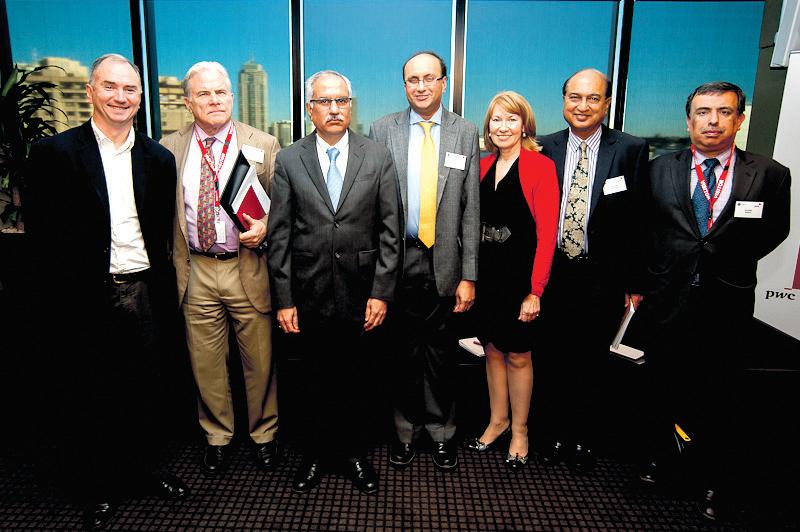
The report commissioned by the three-year-old Australia India Institute, entitled Beyond the Lost Decade and released in mid-July, is a must read for those who wish to have a deeper understanding of why the two countries have had such a fractured relationship in the past and the knife edge on which the relationship between the two currently sits.
Some of the recommendations made by the Taskforce are listed here.
What Australia can do
• Extend the visas of Indian students whose permanent residency prospects affected by changes to immigration regulations in 2008
• Offer to TAFE and vocational training students the same poststudy work entitlements as uni students
Facilitate the study of Hindi and Indian studies in schools and universities
• Initiate discussions to start visa-on-arrival travel for Australians in India
• Institute Australian awards for foreign nationals
• Institute scholarships for Australian students to study in India
Enable DFAT to raise awareness in India of exemplary initiatives such as the Australia-India Strategic Research Fund.
• Allow Australia’s broadcasters to provide content to Asian broadcasters
• Establish an Australia-India senior editors’ dialogue
Help prevent and/or speedily address problems that can damage Australia’s brand as an education provider by prioritising student safety, proper orientation, police liaison support, and the active involvement of local ethnic communities as contact points for international students, including Indians.
• Invite representatives of regiments of Indian troops who fought at Gallipoli to be Australia’s guests at the 100th anniversary commemorations of the campaign in 2015, and invite expressions of interest from film makers interested in stories about the shared experiences of Indian and Australian soldiers at Gallipoli.
• Establish deeper defence relations, with permanent positions in the Australian High Commission in New Delhi as well as joint training sessions between the forces
• Develop an online ‘one-stop shop’ website providing reliable information on all aspects of trade, diplomatic, educational, people-to-people cultural relations.
• Begin travelling exhibitions on art, history, heritage and sport between the two countries
• Expand the growing range of Australia-India annual lectures Increase interactions between Australian and Indian State and Federal parliamentarians
• Fund the Australian Institute of Criminology to undertake ongoing research into racism and crime, with an initial reference to inquire into the high profile incidents that impacted on relations with Indian in 2009-10.
• Encourage press to interact more, with exchange programs, for example
What India can do
• Propose regular Prime Ministerial visits between New Delhi and Canberra Establish a young political leaders program between India and Australia.
• Establish a naval attaché position at the Indian high commission in Canberra and open an Indian consulate in Brisbane
• Expedite the proposed restructuring of the territorial divisions of the MEA: split the 26-nation Southern Division and constitute a new Indo-Pacific or Australasia Division that could include Australia, NZ and the Pacific Islands.
• Have AusAID and India’s new Development Partnership Administration (DPA) combine efforts for humanitarian projects in less developed countries Encourage the setting up of taskforces and dialogues on Australia’s role in Indian energy and food security.
• Consider a policy of visa-on-arrival for citizens of Australia, which is currently available to citizens of NZ
• Encourage business associations such as CII and FICCI to interact with their counterparts in Australia, and institute short-term work and exchange programs for young Australian and Indian professionals.
• Encourage PTI and Doordarshan to establish a stronger presence in Australia, with a more robust network of stringers or fully fledged correspondents
• Explore joint possibilities of providing institutional and technical cooperation, including human resource training, to newly-emerging democracies in, for example, the Arab world.
What about the local Indian community?
Interestingly enough, while the report acknowledges the need for more involvement from the local Indian population to participate in mainstream debate, there has been no reference to the work which the local Indian community did to settle the fallout from the student crisis of 2009 nor the lobbying they undertook to persuade Australia to sell uranium to India. Input for the report was sought from diplomats who are on deputation for a few years, or from local academics who have not interacted in depth with the local community. That there was no local Indian Australian as part of the task force was surprising. One guesses that not one of 400,000 Indian Australians is amply qualified to offer suggestions to better the relationship between their country of birth and their country of adoption, with their unique long term perspective of both countries.
16 AUGUST (1) 2012 www.indianlink.com.au
Pawan Luthra and Sheryl Dixit
At the launch of “Beyond the Lost Decade” are (left to right) Christopher Kremmer, John McCarthy AO, Indian High Commissioner Biren Nanda, Ashok Malik, Maxine McKew, G Parthasarathy and AII’s Professor Amitabh Mattoo

AUGUST (1) 2012 17 NATIONAL EDITION


18 AUGUST (1) 2012 www.indianlink.com.au
How sustainable is the Indian miracle?
These have led to a fall in the usually quite high savings rate in India.

 BY CHITRA SUDARSHAN
BY CHITRA SUDARSHAN
Professor Meghnad

Jagdishchandra
Desai - or Baron
Desai of St. Clement
Danes - is an Indian-born British economist and Labour politician, who was awarded the Padma Bhushan in 2008. He was invited by the University of Melbourne’s Australia India Institute (AII), to deliver this year’s Satyajit Ray Memorial Lecture. Prof. Desai chose to speak about the economic crossroads at which India finds itself now, and whether India can pick itself up and keep going. Can the Elephant run any longer? was the title of the
lecture at the Law Faculty lecture theatre in early July.
Baron Desai gave his verdict to a rapt audience - eloquently drawing on a range of anecdotes, historic events and theories. Two things he made clear: first, that capitalism is here to stay, and for all practical purposes it is the only economic system that survives and will survive. Second, that all things said and done, politics is what matters, even when it comes to economics; that the decisions made by political leadership at crucial moments are what determines the direction of economic change in India.

Baron Desai began by briefly sketching the impressive economic growth trajectory of India and China in the last decades. Theirs - and the rise of the Tiger Economies of Asia, were based on the old model of growth: hard work, savings and
investment. Indeed, it is Asia that embodies the young, dynamic capitalism of today, while the one in Europe is an unenviable, aging and decrepit. India’s exponential growth is really a twenty first century phenomenon, and despite nostalgia in some quarters for the 1960s-style socialism or for a ‘third way’, there is a general consensus in favour of economic liberalisation. However, India is now at a crucial stage of growth - despite the fact that it rode the first wave of global recession without a great deal of trouble. Its growth performance since 2009 has been lacklustre with rates hovering well below 7%. It may well fall to 5% in 2012. Besides, inflation is unacceptably high, exceeding the growth rate. For the first time in post-Independence history, the Indian government does not have an active antiinflation strategy to combat it.
The reasons for the failure of the government to respond to the current economic challenges are several. The UPA-II government has been indecisive and has dithered in the face of major problems. Baron Desai believes that this has been induced by some major failures. One is their wrong reading of the reasons for their election victory in 2009; the Congress interpreted its election victory over the BJP as an expression of a popular backlash against the pace of economic liberalisation. This however, is quite incorrect. But as a result of this false belief, it has reneged on further reforms. Secondly, the UPA-II government has been riddled with corruption and scams which have eroded its credibility and its ability to be decisive. Third, the division of power between the Congress party headed by Sonia Gandhi, and the government led by Mammohan Singh is so skewed and stilted that it has led to several problems.
For all the above reasons, the government has been hit by a political paralysis of sorts: decisions on further reforms such as the liberalisation of the retail section for example, are being shelved; and the backflip on the 3G scam has introduced a feeling of economic and business uncertainty that has frightened Indian businessmen. The government is being seen as indecisive and cowardly. This has been at the root of the poor economic growth in the last couple of years in India.
What does Baron Desai see in the years ahead? Will the political impasse and paralysis be
Indeed, it is Asia that embodies the young, dynamic capitalism of today, while the one in Europe is an unenviable, aging and decrepit.
broken in 2012 when the next national elections are due? Will the UPA be elected again, or do the BJP’s prospects look better? His prediction is that both the national parties will do badly and together will secure less than half the seats in parliament, which will lead to a Coalition of Third parties. There are strong and performance-oriented State Chief Ministers such as Nitish Kumar in Bihar, Modi in Gujarat, Jayalalitha in Tamil Nadu, Patnaik in Odisha - and equally efficient ones in Rajastan and Madhya Pradesh as well - who may be the face of a new coalition at the centre. This may well lead to greater devolution of power to the states, and that may not be a bad thing at all.
AUGUST (1) 2012 19 NATIONAL EDITION sp E c IAL RE p ORT
One of the UK’s most prominent economists comments on India’s current economic growth
Photo: Australia India Institute
Bhakti that rings true even today
Meerabai’s story is not only about love and devotion, but equally about trust and determination
 BY USHA RAMANUJAM ARVIND
BY USHA RAMANUJAM ARVIND
In the Hindu lexicon, the words Meera and Bhakti are inseparable, as well as synonymous. A fifteenth century Rajput princess, Meerabai epitomizes piety, self-surrender and utmost devotion in its simplest, but purest form. But more importantly, she represents powerful feminine energy in the hitherto male-centric fabric of medieval India. Soft-spoken and diminutive, she was a towering beacon of faith, who singlemindedly stood by her beliefs and her steadfast love for Krishna.
Wrapped up in a cocoon, the naïve young princess is suddenly taken out of her comfort zone and into the real world. It is this exemplary journey of Meerabaifrom a selfishly possessive young girl to a revered Saint of the Bhakti Movement - that Vishwaas Productions’ latest offering Bhakta Meera celebrates.
The marathon dramatisation was staged at UTS’ Greenhalgh Theatre to raise funds for the construction of a Naamadhwaar for well-known community organisation Global Organisation for Divinity (GOD). Since its inception in 2007, the Australian chapter of GOD, which propagates Raama naama chanting and social service, has taken off in a big way.
In the words of their preceptor, Sri Sri Muralidhara Swamiji: “There are countless paths that take us to God, but the journey along the path of bhakthi is certainly the most beautiful and blissful.”
Bhakta Meera is a poignant and sensitive portrayal of a 500-yearold tale that is relevant even today.

Having set a very high benchmark for themselves with previous sellout shows (Gandhi: The Power of One and The Legend of Asoka), Vishwaas Productions (VP) has been pushing creative boundaries with every new project. Since its ‘humble beginnings’ as a university cultural outfit, the group has taken on the mantle of rural education champion, raising funds through thought-provoking and meaningful productions.
Their Sydney audience naturally, have come to expect a lot from Shankar Vasudevan and his extended VP family. And they certainly didn’t disappoint. As the elaborately told story unfolded, the audience was transported
from one city to another and one scene to another, without a glitch. The intricate stage props and backdrop only complemented the storyline as a dozen volunteers silently worked behind the scenes for a seamless transition. The ‘eternal gopika’ theme was ushered in at the entrance itself, as each member of the packed auditorium was personally welcomed with a tilak and farewelled with sweets by the actors themselves. Atithi Devo Bhava is a motto by which Vishwaas firmly swears.
The creative team researched their subject matter well and portrayed the milieu with great accuracy. In fact, the sheer scale of the production allowed the director and actors to explore in great depth and detail, not only the protagonist but those caught up in her life and times as well.
Bhakta Meera is a journey of self-discovery as the eternal gopika finds her true identity and purpose in life.
“Meera’s life is an inspiring example of how one should stay
strong despite many obstacles and is therefore, so relevant even today,” said Dinesh Ramanan, lead actor and the brains behind the production. “Her story contains a subtle truth, often overlooked. Unmoved by material pursuits, Meera had only one thoughther Krishna. Her struggle and surrounding discord could have been prevented, had she not been smothered by selfish judgements and expectations. Arguments, bullying and racial discrimination stem from our inability to understand another’s perspective. It is this truth that inspired the production and hopefully will resonate with our audience too”.
“We are all mad about something,” director Chiranth Wodeyar explained. “But we fail to understand someone else’s madness.”
Sanity and self-realization is a recurring theme in the drama.
The play opens with a young and innocent Meera clinging to her ‘toy idol’ Krishna. Her love for Krishna is already all consuming.
As she blossoms into a gifted young woman, this obsession becomes ingrained in her psyche. Her grandfather (played by Sabinesh Pottekatt) is helpless.
Lalitha alone understands the complexity and the completeness of this divine relationship. “To you, Meera’s love is madness, but to me it is perfect,” she says in defence of her friend.
It is this apparent “madness” that the play tries to portray. Her blind devotion threatens to destroy her already fragile relationships and her life. But Meera (Kavita Nambiar) remains devout and unmoved, seeking solace in Krishna (Akshay Bhatnagar), and channelising her energy to music.
Her trials and tribulations only strengthen Meera’s character and resolution as she even manages to win over the Mahamantri (Bhibu Aggarwal) and Rana (Dinesh Ramanan) to her cause. Naïve and simplistic as she is, Meera is able to duel the worldly-wise Mahamantri himself into submission.
Alas, her enemies prove too
clever for the unworldly Meera. Her husband’s siblings Uda Bai (Vruchi Waje) and Vikram Aditya (Shankar Vasudevan) mindlessly trample over her feelings and sanity in their quest for power. Unwittingly, the Rana himself becomes a victim of the juggernaut, while Meera emerges like a phoenix reborn. Blessed with self-realization (Gnothi seauton), the liberated Meera goes in search of her original mentor Guru Raidas (Nikhil Shivdas) to relinquish the very idol she once desperately clung onto – the source of all her apparent suffering. In doing so, she is truly free to become one with God and share His divinity with the rest of the world.
Scriptwriter Bibhu Aggarwal has no doubt put heart and soul into the blank canvas, painting threedimensional characters who come alive on a contemporary stage.
Clever juxtaposition of comic interludes and witty repartees provided a welcome relief to the heavy philosophical issues that weigh down the plot. Gautam
20 AUGUST (1) 2012 www.indianlink.com.au s TAGE
I am mad with love, And no one understands my plight. Meerabai
Ae ri mai to prem diwani, mera dard na jaane koi
Bhakta Meera is a journey of self-discovery as the eternal gopika finds her true identity and purpose in life.


(Neeraj Joshi), Lalitha (Sujatha Natarajan), Tansen (Abhijit Pathak), Akbar (Kanav Malhotra) and the playful Lord Krishna, himself the eternal truant, had the audience, particularly the younger children in splits, even though it was well past their bedtime.


As well, the script provided ample opportunity to boldly explore thorny relationship issues, particularly polygamy and matrimonial harmony.
Equally outstanding was Ashwin Bhaskaran’s live background score. Composing music for any production is no mean task; but composing soundtrack for a legend who is celebrated for her musical genius is a real challenge.
Most of those raised on a diet of MS Subbulakshmi’s renditions of Meera classics would certainly be harder to please. Ashwin and his in-house team deserve praise for some original compositions and renditions.
Speaking to Indian Link after the show, a relieved Ramanan was apologetic about the epic duration. “Unfortunately it was a bit a long but we struggled cutting down scenes because it was hard to develop the different characters effectively without those extra scenes!” he explained.
Another splendid effort, nonetheless, from the Vishwaas team leaves us already awaiting their next production.
Photos:
As well, the script provided ample opportunity to boldly explore thorny relationship issues, particularly polygamy and matrimonial harmony.
NATIONAL EDITION
Teapot Photography
Stage skills with Kannada film director
TS
Nagabharana and his wife Nalini are special invitees at IAAFA’s school holiday program
The Nagabharanas are felicitated

Nathan Rees took to the microphone to say how much he enjoyed himself. The guest appearance of Ian McCann, President of the Wenty Leagues Club, was welcomed equally.
BY SHERYL DIXIT
It is not often that children get to do a performing arts course in the school holidays with a famous Indian film-maker.
30 lucky kids honed their stage skills in the July winter holidays with Kannada and Telugu filmmaker TS Nagabharana and his choreographer wife Nalini.
The program was initiated by the Sydney-based Indian Australian Arts and Film Association (IAAFA), which has been organising kids’ workshops for a few years now.
Mr and Mrs Nagabharana travelled to Australia for three days, simply to conduct this workshop at which children were taught acting, singing, dancing and drama skills, in addition to confidence techniques and memory enhancement exercises.
Nagabharana is a film, TV and theatre personality who has many awards at the state and national levels, and has even presented at the Karlovy Vary Festival. His work, which has received commercial success as well as critical acclaim, is rich in Indian folklore and concern for children and women. He has worked extensively with children, having produced three children’s films.
At his recent Sydney workshop, the children attending were divided into two different groups, one for dancing and the other for acting, depending on their inherent skills.
The workshop concluded with a stage show on July 15, held at the prestigious Wenty Leagues Club at Wentworthville. It was a first for the club, to host an Indian event.
Nearly 400 people attended this event which unusually, fused Bollywood, Irish and Indian classical dance in a creative and thoroughly appealing presentation.
Children in the age-range of six to fourteen, under the guidance of the Nagabharanas, put up a fine
performance even after their short coaching program.
They performed a rendition of the Kannada song Harona Baa, about the fun and freedom in the life of a bird. This wonderful song and dance number was choreographed by Nalini.
Next came The Hat Seller and the Monkeys, directed by Nagabharana. The young aspiring actors put up an enjoyable performance, ably encouraged by their parents, family and other members of the audience.

Seven-year-old Vidushi Trivedi and her sister Siona, have attended the IAAFA holiday program for the second year in a row, and were thrilled to be a part of the performance. “We had a great time and learned so much about acting, dancing and singing,” she said. Garima, the girls’ mum was equally pleased with the program and the performance. “Not just my girls, but I too, along with other parents were very impressed with the workshop and the event. The children did a great job and they
“Our thanks to the Nagabharanas and IAAFA volunteers who made this happen,” she added.
Earlier in the evening, there was a traditional start to the proceedings, with the formal lighting of the lamp and a bharatanatyam prayer dance. This was followed by a variety of dances by the Irish Dance group choreographed by Kristen, and the Bollywood Dance group choreographed by Maxine.
One of the highlights was a performance to the famous Kannada language song Huttidare Kannadanadlli, made famous by the late Dr Raj Kumar from the movie Akasmika. This Irish, Bollywood and Sandalwood fusion dance was performed by the Irish and Bollywood dance groups, and although the performers were not familiar with the language, they enacted it extremely well, to the surprise and uproarious applause of the audience.
Other performances included those by Vijay Jogia, Sudarshan and Mr and Mrs Nagabharana singing theatrical Indian songs, each of which presented a new and unique approach to singing and dancing, making them all memorable.
Local MP for Toongabbie Mr
The classical tradition lives on
In a show that was aptly called Parampara, ie, ‘tradition’, Sydney danseuse Hamsa Venkat made it clear that our classical tradition continues to remain alive and well, even in a land far from home.

Students of her Samskriti School of Dance in Sydney performed recently to a packed audience at the Castle Hill High School.

More than a hundred dancers from among Hamsa’s students took to the stage that evening. They showcased their talent in an innovative format, incorporating many of the items usually performed in a more formal recital. Pushpanjali, Jatiswaram and Thillana were presented among others, but not Varnam. (In her
introductory speech, Hamsa explained that none of the dancers had reached the Varnam stage yet).
The participants were of a broad variety with young children, girls in school and university, working girls, young professionals, even young mothers - what a medley! Usually, it is children that dance before their parents and eagerly await their approval. Here was a situation where young mothers danced and sought a nod of appreciation from their kids!
The girls introduced their items themselves. They had memorised their lines well, needing no piece of paper to prompt them, displaying not only confidence but also pride in their artform.
The dances were presented
in groups of four to fourteen. Colourful costumes, interesting formations, pleasing expressions and gestures marked each sequence. Some of the girls were indeed very young, but their innocent dancing was appealing and their attempts were worth applauding.
In the joyous Jatiswaram, a group of fourteen dancers performed the abstract item with rich movements of the neck, eyes, ankle and limbs. It was a complex tala pattern and a delight to watch. In Jaya Jaya Shambho, the conclusion came out very well with young Shiva and Parvathi entertaining the audience, as the other dancers stood still.
Brochevarevarura was a treat to watch, and included the episode
of Gajendra Moksha which was presented in the abhinaya style. The youngsters brought out a very convincing Sringapuradeeswari with rich expressions. Thillana performed by the senior students was very noteworthy. What was admirable was that the music accompanying the performance was live, provided by young artistes, many of them born and brought up in Australia. The alumni of the school (and also teachers) Divya Sriram,
IAAFA has been conducting monthly workshops in the past, on a series of different subjects, ranging from Aboriginal Arts with the renowned Uncle Greg, to Irish and Bollywood dancing classes, to help children integrate with and understand their culture and that of others, here in Australia. Their school holiday programs are extremely popular with sessions from 8am to 4pm, held on a voluntary basis and enjoyed by children of school-going ages. Children attending are introduced to fundamental yoga techniques, while guest speakers such as the NSW Fire Brigade or Police are invited to demonstrate their skills. Afternoon sessions usually include some mildly strenuous but fun activity such as dancing, to keep the children happy and motivated.
“We have been running these workshops to help children learn and understand more of their culture through the arts,” says Jay Hosur, IAAFA Secretary. “They are run on a voluntary basis with the help of parents and the special support from our well-wishers, who come and teach the children for free. We are now looking at more support from the community, and more parents to come forward and help run this program,” he adds.
Sneha Rao and Vidya Bharadwaj gave Nattuvangam. Devika Krishnamurthy was effortless in vocals, while Shruti Balaji also sang for some of the sequences. The most essential Mridanga support was presented by Nirmal Ayyar, while Anita Das performed on the violin. Well done, Hamsa, for infusing new blood into the classical scene in Sydney’s Indian community.
Sydney Srinivas
22 AUGUST (1) 2012
STAGE
Harona Baa: Oh to fly like a bird…
www.indianlink.com.au
Photo: Lechatrouge Photography




AUGUST (1) 2012 23 NATIONAL EDITION $910.00 You’re Professional & Friendly Real Estate Agent…..! 2% INCL GST FOR SELLING! 5% INCL GST MANAGEMENT FEE!!! Are you planning to SELL? … Talk to me NOW!!! Are you looking to RENT YOUR PREMISES? … Talk to me NOW!!! WE ARE OFFERING “FREE MARKET APPRAISAL FOR SALE & RENTAL PROPERTY” Call: Parvinder Singh ON 0401 052 053 Email: parvinder@prd.com.au Web: www.prdnationwide.com.au/Parramatta PARRAMATTA (02) 9890 8988
Friends of the intellectually disabled
Founded in Australia, GHARA aims at helping and supporting the intellectual disabled in India
BY DOLLY SINGH MIRANDA
Intellectual disability is an endemic, yet overlooked problem in India, with over 2 million of the population vulnerable and without support because of their condition. As the country has several socioeconomic problems, this issue has perhaps not been given priority and the fact remains that there are few organisations that currently support adults and provide respite to families in these situations.
But now, a group of like-minded Australians has created a not-forprofit organisation called GHARA, (Group Home and Respite Association) to help support people with intellectual disability in India. ‘Ghara’ means ‘home’ in several regional languages, and incorporates the essence of the organisation – to provide the security and comfort of a home for the intellectually disabled.
GHARA is the brainchild of Athellia Dias, the founder and chairperson who grew up in Mumbai, and has worked in the disability sector in both India and Australia.
Member Trustee Kylee Davis told Indian Link more about the group.

“It’s Athellia’s passion and her
conviction that got this project off the ground,” said Kylee.
“Her vision for GHARA began 17 years ago with a ‘wish and a want’ to meet the needs of those intellectually disabled who had no support, and it’s coming to fruition in 2011 has her and the team raring to go”.
The current GHARA team in Australia consists of Kelvin Dias (Athellia’s husband), Diana Mascarenhas, Bianca Pudadera, Kylee Davis, Kamella Alcantara and Marianne Fernandes, all of whom are voluntarily contributing their skills and knowledge to the cause. Their backgrounds are varied but they are all involved with special care, the nursing and healthcare industry, and all have a strong commitment towards to goals of GHARA.
GHARA is based in Bengaluru, India and aims to build a network of support for adults with an intellectual disability and respite for their families/carers, while respecting their religious and cultural beliefs. It hopes to provide accommodation for adults with an Intellectual Disability, and intends focussing on re-integrating these individuals back into society, instead of segregating them.
GHARA’s intention to utilize local resources and hire local staff will generate jobs for locals.
So what made this group come together to aid those with intellectual disability in faraway India?

“We all know that Australia has a reasonably strong support system here for the intellectually disabled. However, research showed that this is not the case in India where care for the intellectually disabled is limited to a few charitable organisations and special schools mostly for children,” explained Kylee. “Athellia wanted to introduce at least some aspects of caring for these disabled people into the system in India, and help in the process of respite for their carers, who do an incredibly tough job.”
The team has been like-minded in their commitment to the goals of the organisation, and Kylee herself is enthusiastic about her role, which includes fundraising, marketing and awareness. “I have always had a high level of empathy with the disabled, and even in my childhood used to visit several homes with my nanna. My children are also incredibly supportive and very proud of my involvement with GHARA. In fact my daughter has gifted me a laptop to help me with my work,” she revealed proudly.
Kylee explained that the GHARA committee has created a 5-year plan with two phases. “Phase 1 is the set up and establishment phase over two years which includes creating awareness, establishing networks and tieups with different organisations such as hospitals, corporates and government bodies,” said Kylee.
“We already have a team of volunteers on board who will help in running things on the ground. They will go into the homes and understand what the family dealing with intellectual disability needs.”
Focusing on gaining acceptance and winning trust of the families first is the key to success.
“We have to understand that there are challenges which
individuals with this disability face within Indian society, which are primarily rooted in religious beliefs, cultural norms and misinformation, or a lack of information regarding disabilities in general,” she noted. It’s no surprise that the organisation has to be extremely mindful of current perceptions and challenges. Once the volunteers gain acceptance, they will then begin with teaching the intellectually disabled basics towards inclusion in the community, take them to appointments with doctors, get them involved in learning some craft, or just provide a muchneeded break to the carer.

In phase 2 over three to five years, GHARA aims at providing centre-based respite, where adults with intellectual disabilities and their families can come and stay at the centre.

The GHARA team here have already been travelling back and forth between Bengaluru and Sydney since April 2011, on their own expense. They are working tirelessly to establish networks and have already received positive responses from hospitals like St Johns, who will support GHARA by providing speech therapy and occupational therapy to the intellectually disabled.
They have also enlisted the support of the St. Josephs Alliance, whose Sister Junova is now part of the GHARA team, handling operations in India and currently taking lessons in Kannada to communicate more effectively across the community! The team meets up every Monday, with Sister Junova in India hooking up via Skype to report progress on the project.
As for Kylee, how were her personal experiences in Bengaluru?
“I loved the idlis and dosas!” she says enthusiastically. “I found
people to be extremely warm and helpful. Strangers often went out of their way to help me in many situations”.
“The only thing that took getting used to was travelling in rickshaws as well as crossing the roads without proper zebra crossings!” she adds, laughing infectiously. GHARA raises awareness and funds in Sydney through a variety of events in community centres, such as bingo or poker nights, and speciality fun event nights such as murder mystery solving, among others.
GHARA is a truly pioneering and committed involvement in the area of intellectual disability, and the volunteers who make up the organisation should be commended and supported for their work.
Visit www.ghara.org for more information, to donate or to volunteer.
Some facts on intellectual disability in India
• India has more than 2 million adults with an intellectual disability.
• Intellectual disability is commonly referred to as “mental retardation”.
• Persons with intellectual disabilities are frequently the most vulnerable group, they are exposed to human rights violations and even deprived of minimum services and dignity.
• Individuals with an intellectual disability lack
* Life skills and remain a liability on the family and community;
* Rehabilitation services to integrate them into the community;
* Respite and accommodation services;
* Support networks for their families/unpaid carers in the community.
24 AUGUST (1) 2012 www.indianlink.com.au fund r A i S in G
Athellia Dias at the home for the intellectually disabled at Bangalore
Kylee Davis with Sister Junova
Staff Required
Peninsula Motor Group has an immediate position available for a New Vehicle Sales Consultant.
Whilst experience in Motor Vehicle Sales is not essential applicants with Sales experience will have an advantage.
The successful applicant must be customer driven and a team player.
An attractive salary package with a fully maintained company vehicle is on offer to the successful applicant
Please send brief resume to MDOffice@kumargroup.com.au
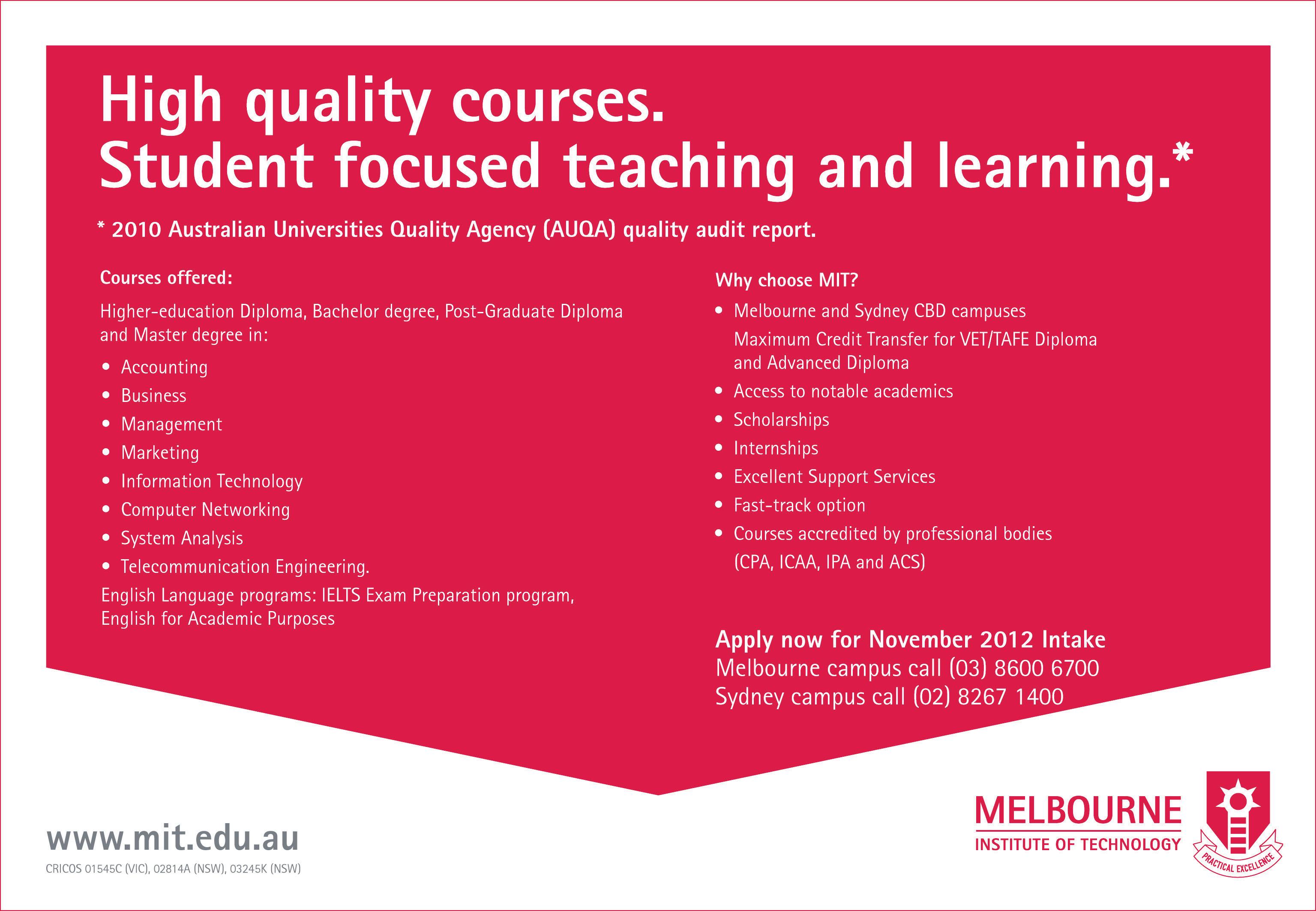


AUGUST (1) 2012 25 NATIONAL EDITION


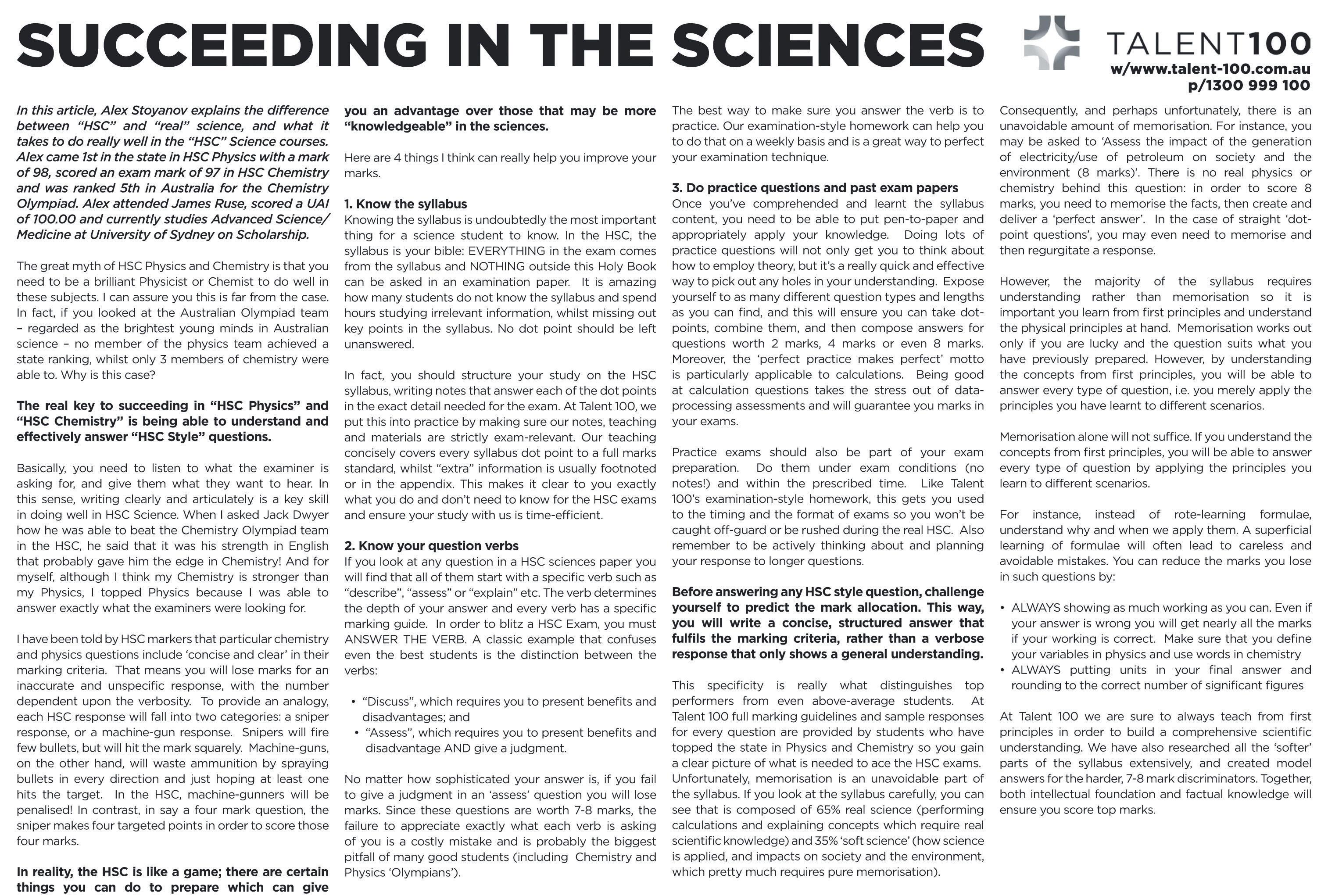
26 AUGUST (1) 2012 www.indianlink.com.au
Over 10,000 hits for new Sarangan single
BY USHA RAMANUJAM ARVIND

Transcending linguistic and cultural barriers, talented singer-songwriter and sitarist Sarangan Sriranganathan’s music is well known to mainstream audiences. Following his hugely successful show with Hariharan last year, Sarangan has once again collaborated with the Padma Shree awardee to produce a catchy Tamil single, Aval Oru Melliya Poongaatru (She is a fragrant breeze). The recording spans two continents and features artists in India, Australia and Sri Lanka.
Released on YouTube recently, the song crossed 10,000 hits in its first fortnight. Having tasted success across many genres of music over the past two decades, this time round Saarangan hopes to stir the social conscience of fans.
Using social media, particularly YouTube, Twitter and Facebook, Sarangan has been raising awareness about the plight of refugees in war-ravaged far north Sri Lanka.
“Everyone has a social responsibility. My goal is to publicise the good work done by welfare organisations in war torn areas,” explained Sarangan, speaking to Indian Link. “Many have supported these institutes during and immediately after the war. The sad thing is that, day by day, the support/funding and the focus are diminishing. With this particular project, I am supporting a children’s orphanage in Kilinochchi (in the north of Sri Lanka). They desperately need support”.
“When someone wants to purchase an audio version of the song I ask them to please call and support the organisation in kind or cash,” said Sarangan. “We have got great response from fans and friends. Most of the radio and TV stations across the globe are also playing our song. Some web based news sites have also supported us”.
it brings attention from the general public much faster. “The attention and popularity gained from these productions help me generate awareness and support these institutions,” he particularly emphasised.
Saarangan and Hariharan go back a long way, having performed together at many concerts in India, Australia and UK.

Hailing from musically inclined families, the duo has much in common besides their spoken language (Tamil) and love of music.
“Hariji and I have a strong classical music background, especially in Hindustani music. I have a BA in Sitar too,” he disclosed. “We vibe very well and have a great time. When I came up with the idea, Hariji was only too keen to collaborate. I composed the songs in Sydney in my private studio and then went to Mumbai to record Hariharan’s voice. We recorded the song in barely an hour!”
He then went to Colombo to record the dholak with percussionist Ratnam Ratnathurai. Sarangan’s vocals were then recorded in Sydney and all the postproduction work was done in Australia and mixed by Ganesh Singaram.
“I have used Australian and Indian female backing vocalists. The video was recorded in Sydney and my wife Shobana Meera did the post-productions of the video,” he revealed.
Local artists who have worked on this single include Australian Idol guitarist Rex Goh, bass guitarist Shane Gamage and percussionist Christopher Soulos. Wendy Angerrani did some additional programming.

While in Mumbai, Sarangan also recorded another duet with Shreya Ghoshal, which is to be released shortly.
Meanwhile, Sarangan’s calendar is busy as ever with another huge concert planned for next year, featuring some big names in the industry.
To support Sarangan Sriranganathan’s nominated charity Mahadeva Achchirama Children Home, Kilinochchi, please email rasa46@yahoo.com
AUGUST (1) 2012 27 NATIONAL EDITION
M u S i C
Sarangan (right) at work with Hariharan
President Pranab
After four decades of dedicated service to India, one of its leading politicians takes on a new and worthy responsibility
his knowledge and sagacity.
Pranab Mukherjee’s position in the Congress-led United Progressive Alliance party was indisputable - he had headed 83 of the 183 ministerial decisionmaking groups, known as Group of Ministers. He has, over a period of 25 years, presided over cabinet meetings when the prime minister has been away. But the top post in the government has eluded him because of what some feel is the Gandhi family’s wariness. This goes back to the time after Indira Gandhi’s assassination in 1984 when Mukherjee, a stickler for rules, is supposed to have pointed out to her son Rajiv Gandhi that convention demanded that the second in command be the caretaker prime minister till the Congress elected a new leader.
variety of portfolios in successive governments. He first headed the finance ministry in 1982, and holds the distinction of having presented budgets in both, the preliberalisation and post-liberalisation era.
There was a time when Mukherjee was derisively called a “rootless wanderer” by some of his party colleagues, as he had never won a Lok Sabha election till 2004. But when he won from the Jangipur Lok Sabha constituency in West Bengal in 2004, he literally wept with joy. “For me this is a dream come true, a dream I have cherished and nourished all my life,” he had said.
From the time he first became minister of state for revenue and banking under Indira Gandhi in 1973, Mukherjee has held a variety of portfolios in successive governments
Pranab Mukherjee was sworn in as India’s 13th President in a historic ceremony on July 23, 2012.
The oath of office was administered by Chief Justice of India SH Kapadia inside the central hall of parliament in Parliament House, New Delhi, where Mukherjee, 76, the country’s first citizen, swore to rise above partisan politics in the conduct of his high office.
The ceremony saw the president’s mounted bodyguards, resplendent in their livery of white and with dark turbans to match, give the national salute and 1,000 members of the three services lined along Raisina Hill road to give the Hazar Salam or thousand salute to the president - the supreme commander of the armed forces.
Mukherjee, attired in a black sherwani and churidar looked solemn throughout the ceremony, and broke into a smile only when waving to the media from a horsedriven presidential buggy after he inspected his first guard of honour as president in an open jeep.
In his first speech as president, Mukherjee, who has a five-year term, said his high office demands that he rise “above personal or partisan interests in the service of the national good”.
He said for India to progress and for “development to be real, the poorest of our land must feel that they are part of the narrative of rising India”.
In a brief speech marked by high prose, Mukherjee said, “I have seen vast, perhaps unbelievable, changes during the journey that has brought me from the flicker of a lamp in a small Bengal village to the chandeliers of Delhi”.
In his speech, Mukherjee dwelt
on hunger and poverty, saying “there is no humiliation more abusive than hunger”.
He also dwelt on terrorism, terming it the fourth world war with the Cold War being the third and stressed on education as the “alchemy that can bring India its next golden age”.
He touched on corruption, terming it as an evil “that can depress the nation’s mood and sap its progress”.
Mukherjee will move into the 340-room Rashtrapati Bhavan from his official bungalow on Talkatora Road. He will travel henceforth in a long black bombproof official Mercedes limousine - a far cry from the Ambassador car in which he used to travel.
A pro at politics
With four decades of politics to back him, Pranab Mukherjee won the July 19 presidential poll as the ruling United Progressive Alliance (UPA) candidate with a clear margin, bagging 527 to opposition-backed PA Sangma’s 206, while 15 votes were declared invalid. Mukherjee is among a handful of Indian politicians to have held three key ministries of finance, defence and external affairs through his 40 years tenure as a politician. He was a key member of the UPA and was chief troubleshooter for the coalition because of his excellent rapport with leaders of all political parties. Mukherjee headed almost all ministerial panels with his vast fund of knowledge. He commands tremendous respect across all factions of politics, and although Congress colleagues whisper that he is a Chanakya, ancient India’s fabled political conniver, Mukherjee is largely well liked for

That was interpreted as a sign of his vaulting ambition. Mukherjee has remained out of contention for the prime minister’s job ever since.
The man for the job
Pranabda, as the Bengali bhadralok is adoringly addressed, is a persuasive orator and a formidable negotiator, and is considered a walking encyclopaedia on virtually everything related to politics and governance - all due to his photographic memory of the fine print and negotiation details - which makes it difficult for any bureaucrat to hoodwink or trip him.
A trusted and able strategist, Mukherjee remains down to earth, lives modestly, and has admitted many a time that he cannot speak polished English. For one who is supremely self-confident, he can be humble.
But he has a temper - and has more than once apologised to MPs for raising his voice inside and outside parliament.
Born into a middle-class family in Birbhum district of West Bengal in December 1935, Mukherjee’s father, Kamada Kinkar Mukherjee, was a Congress politician. Politics came naturally to the young man. After degrees in history, political science and law, Mukherjee gave up his two initial loves - teaching and journalism - to take to politics.
His parliamentary career began in 1969 when his home state West Bengal was in ferment, with Naxalites (Maoists) on the rampage. He was repeatedly nominated to the Rajya Sabha until 2004 when he entered the Lok Sabha.
From the time he first became minister of state for revenue and banking under Indira Gandhi in 1973, Mukherjee has held a
“Pranab showed leadership even as a teenager, and he started honing his skills as a leader and orator since his school days,” recalls Mihir Chattopadhyay, Mukherjee’s classmate in Kirnahar Shib Chandra High School in West Bengal’s Birbhum district and his close friend till graduation. The 76-year-old, who has now retired as a teacher in his alma mater, recollected how in 1949 Mukherjee impressed and convinced a minister to renovate the school building. In a poignant moment, Chattopadhyay also recalled that Mukherjee used to play as a defender in football during his school days.
A devoted family man, Mukherjee is married to Surva, a Rabindra Sangeet singer of repute. The couple have a son and a daughter. Daughter Sharmistha is a kathak dancer. Son Abhijit, following his father’s footsteps, is a member of the West Bengal assembly. A deeply religious man and confessed workaholic, Mukherjee has not taken a holiday since the last 20 years except a trip to his village every year for Durga Puja, when he dons a priest’s robe and performs prayers for four days.
Celebrating with sandesh
Bengalis across the nation and globe absolutely exploded with joy as Pranab Mukherjee became the first Bengali to hold the highest office in the land. While Kolkata’s elite celebrated with a tea party at a posh five-star hotel, the common man simply took to processions of joy along the city’s streets as people smeared each other with gulal, danced and burst crackers. It’s not hard to figure out who had the better time.
At the state Congress headquarters Bidhan Bhavan, Bengal’s sweet delicacy sandesh was offered to all and sundry,
while motichoor laddoos, malai kulhars and the evergreen sandesh were distributed at Mukherjee’s residence on Talkatora Road in central Delhi. For the savouryinclined, khasta kachoris, dahi bhallas and idli sambhar were also lavishly distributed.
As President-elect, Pranab Mukherjee thanked the people for his election to India’s highest office and said he was moved by their overwhelming support and affection as he toured the country to garner support in his run for Presidency.
“I have deep gratitude and appreciation for the people of this great country for conferring this distinction of electing me to the high office,” Mukherjee stated after being declared President-elect.
“It would now be my responsibility to defend and protect the Constitution as president...I would try to justify in modest way to be trustworthy of my people,” he added.
He also thanked all sections of society, the political parties and parliamentarians for the support during his more than four decades of public life.
“I received much more than I gave them,” he said.
From Nobel laureate Amartya Sen, to former President Abdul Kalam and various heads of state across the globe, congratulations have poured in as Mukherjee takes on this new mantle of responsibility as the leading citizen of the world’s greatest democracy. As Pranab Mukherjee stands at the threshold of a nation on the ascent, we hope he ushers in and supports a time of change and progress for the betterment of its people.
From IANS reports
28 AUGUST (1) 2012 www.indianlink.com.au SPEC i AL r EPO r T
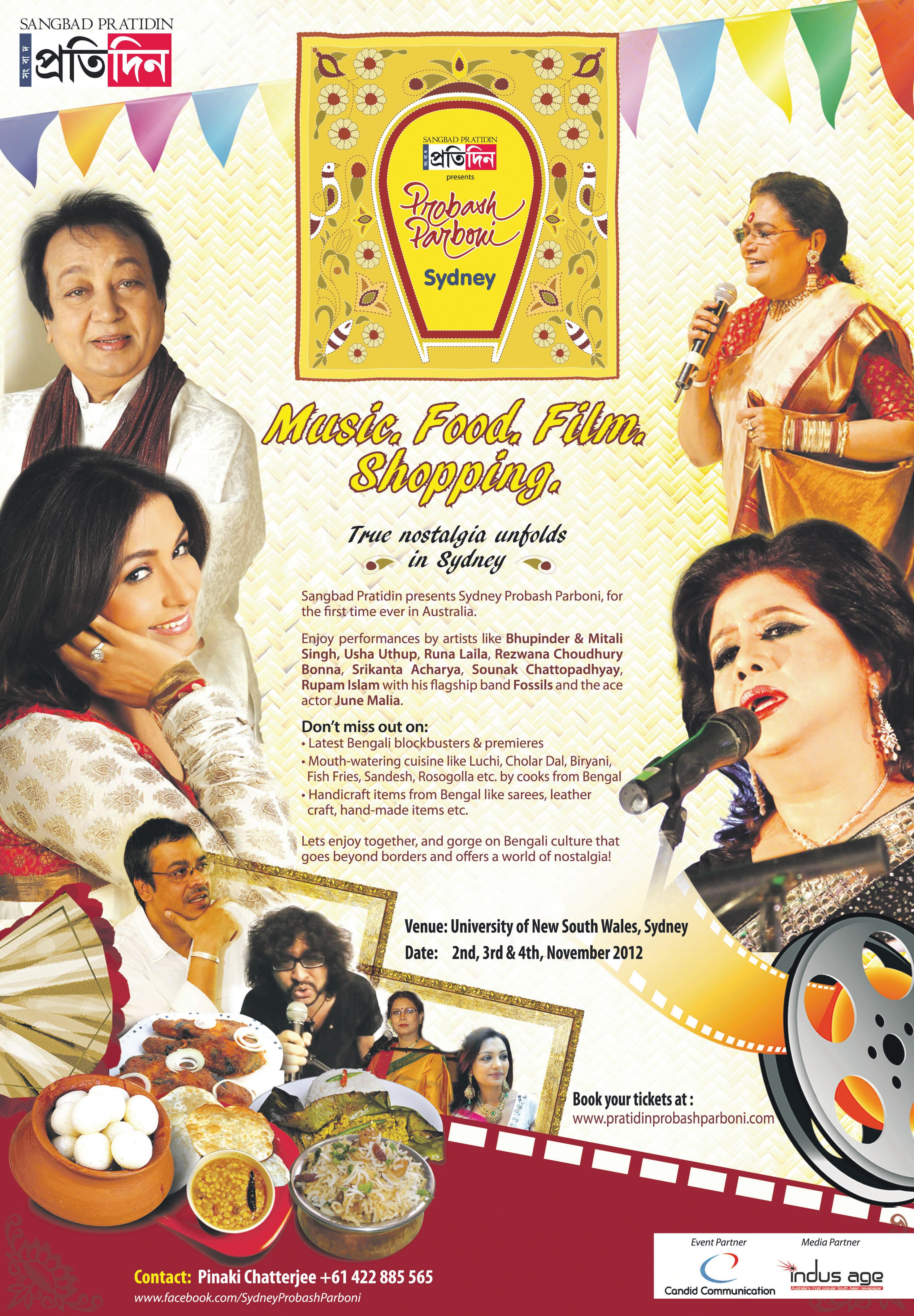
AUGUST (1) 2012 29 NATIONAL EDITION
Narang emerges out of Bindra’s shadow
India’s rifle shooter Gagan Narang clinched the bronze medal in the men’s 10-metre air rifle event of the 2012 London Olympics to give India its first medal.
The gold went to Romanian Alin George Moldoveanu and Italian Niccolo Campriani bagged the silver.
Narang’s illustrious compatriot and defending champion Abhinav Bindra failed to qualify for the final round at Royal Artillery Barracks in London.
Bindra’s unceremonious elimination at the qualification stage came as a heartbreak for India in the same manner as Australia’s men’s 4 x 100 relay debacle at the swimming pool. However, the 29-year-old Narang of Hyderabad, participating in his third Games, made up for his compatriot’s luckless show.
This is the third time in row that Indian shooters have won medals at the Olympics. Double trap shooter Rajyavardhan Singh Rathore won the silver in 2004, Bindra gave India a historic gold in Beijing, and now Narang has bagged a bronze in London.
“I had to complete the set in the shooting,” Narang said later. “We had a gold, silver and I got the bronze!”
Narang has always said the Olympic medal was the one that was missing from his cabinet as he has won every shooting medal worth the name.
Bindra, India’s only individual Olympic gold medallist, failed to qualify as he finished 16th out of 47 contestants.
Narang had missed the final round in Beijing Games on a countback.
This time round, not only defending champ Bindra but also former Olympic champion and Beijing Games silver medallist Zhu Qinan of China failed to qualify for the final round.
Gagan, who is also slated to take part in the 50m rifle 3-position and 50m rifle prone events, was always considered a big hope alongside Bindra after he shot four golds in the Delhi Commonwealth Games. He had given enough indications of his class in a
pre-Olympics event in Germany’s Hannover by scoring 704.3 - that was higher than the world record of 703.1 set by Thomas Farnik of Austria in the 2006 World Cup.
Meanwhile, congratulations are pouring in from all over for Gagan. Union Sports Minister Ajay Maken said his bronze will inspire other Indian athletes to do well in the sporting extravaganza. He was speaking with reporters outside the Royal Artillery Barracks when Narang shot an overall score of 701.1 to finish third.
“It would have been even better if Abhinav Bindra stood on the podium as well,” lamented the minister.
The Haryana government announced a reward of Rs. One crore for Narang.
Even though Narang does not belong to Haryana, he has been given the reward under the category of sportspersons from the state as his family roots are from the northern state’s Panipat town.
Chief Minister Bhupinder Singh Hooda said Narang has brought laurels to the state and the country.
The chief minister said players from Haryana winning a gold medal in the Olympics would get Rs.2.5 crore, silver medallists Rs.1.5 crore and those winning bronze Rs.one crore.
(As the Haryana government doled out cash rewards, cars, mobiles and other goodies for medal-winning players from the state in the CWG and Asian Games (2010), Narang, who won four gold medals in shooting in Delhi, walked away with a cash bonanza of Rs.37.5 lakh. This was the highest prize money among all the 35 players honoured at that time.
Each CWG gold medal winner had received Rs.15 lakh from the Haryana government. Those winning more than one gold medal got an additional Rs.7.5 lakh for every medal. Narang and all other gold medallists also got one Maruti SX-4 car priced around Rs.800,000, and a Nokia mobile phone).
Shooting became the second sport after men’s hockey to fetch India more than two
medals down the years at the Olympics, with the success in the discipline having come from three back-to-back games since Athens in 2004.
Narang’s success has added to India’s less than impressive medal count - which now stands at 21 comprising nine golds, four silvers and eight bronzes - in Olympics history.
Hockey alone has provided 11 metals (8 gold, 1 silver and two bronze medals). Apart from the three in shooting, the Indians have got two each in athletics and wrestling and one apiece from weightlifting, tennis and boxing.
Unlike others of his tribe, Narang,an Air India executive, has also given back something to the sport by starting an academy - Gun for Glory - at Shiv Chhatrapati Sports complex in Balewadi, Pune, to train the next generation of Indian shooters.
As his father said after his London triumph, Gagan is good for more.
Anish Kapoor’s Orbit becomes symbol of London 2012
Iconic sculptor Anish Kapoor, the Indiaborn winner of the Turner Prize, has given Britain its biggest public art installation in his ArcelorMittal Orbit – designed specially for the London Olympics.

The giant Orbit is a 115-metre high steel observation tower at Olympic Park in Stratford in London that is likely to help in the post-Olympic regeneration of the area. Kapoor designed the Orbit with Cecil Balmond with steel donated by India-born steel tycoon Laskhmi Mittal, who remains the richest man in Britain with an estimated fortune of 112.7 billion pounds as in April 2012, according to British estimates.
Supported by Sri Lankan-born British architect Cecil Balmond, Kapoor effortlessly put 1,400 tonnes of molten metal for the tower like kneaded dough.
ArcelorMittal Orbit is Balmond’s complex algorithm of a cellular structure combined with Kapoor’s ability to create a spectacle.
Both artists intended to create the largest piece of public art as an enduring legacy of London’s 2012 Summer Olympics.
The Orbit, which cost 22.7 million pounds, took 18 months to finish. About 60 percent of the steel used in the structure was from recycled scrap collected around the world, particularly Luxembourg in west Europe.
Kapoor, a familiar name in Britain known for his early creations such as Turning the World Upside Down (Israel Museum, Jerusalem), Cloud Gate (Chicago), Sky Mirror (London’s Kensington Gardens) and Leviathan (Grand Palais), now has achieved the status of a demi-god.
Kapoor, who sculpts futuristic forms in steel and glass, said in an interview to The Guardian that the making of the Orbit was a “series of discrete events tied together”. Kapoor said he did not want an icon, “but a moving narrative”.
“You start under this great domed canopy that sits above you, almost ominous darkness sucking you in. Then you come slowly to light,” he said.
Balmond, who also designed the quirky headquarters of China Central Television in Beijing, which is dubbed as ‘the big boxer shorts’ due to its shape, said that he was interested in designing eccentric buildings.
Towers are mostly symmetrical, but the
designers described the Orbit as unsettling and refusal of a singular image. Talking about the colour, Balmod said the park was mostly green and white, hence it was important to have other colours, like red.
Orbit has been satirized as the Eiffel Tower after a nuclear attack, or a catastrophic collision between two cranes, by many who have been against the idea.
“Victor Hugo once described the Eiffel Tower as hideously ugly,” said Anish Kapoor in defense. He also noted that as time passes the unusual becomes usual and the concept of beauty changes.
Recalling the project, Lakshmi Mittal says he “never expected” it would turn out this big. He said it was not just the supply of thousands of tonnes of steel but in reality ArcelorMittal “has given much more than steel”.
There are two other Indian touches to the Games.
Shobhana Jeyasingh, a Chennai-born contemporary dancer who works out of Britain, was approached by the committee of the Cultural Olympiad some time ago to present her new choreography, Too Mortal in the Old Churches of London during the London Olympics 2012 Festival.
Too Mortal, an atmospheric new work with Indian classical elements, was conceived for churches in London, Stockholm and Venice, Jeyasingh said.
Inspired by their dramatic architecture, the choreography contrasts and complements the rhythms and spaces of these historic buildings. Jeyasingh said she has tried to explore the “notions of the church as a sanctuary”.
Meanwhile noted graphic novel writer and artist Sarnath Banerjee, the author of the best-selling The Barn Owl’s Wondrous Capers, has taken his graphic textual art to Olympic billboards in London with a message: Games Don’t Just Deal With Winning.
The Olympic public art project commissioned by Frieze East is made of several billboards, graphic essays and posters. Banerjee says the project is against the sensibility of the Olympic Games which is about winning. “It is a campaign about people who fail”.
Banerjee said he has created characters like a boxer who is thinking of trying to duck a punch, a pole vaulter who realises that he chose the wrong discipline daunted by the audacity of the jump, a judoka who takes long-distance tips about his sport and a high jumper who lives, reads and eats light.
Banerjee is one of three artists chosen by Frieze East for the Olympic Public Art Project.
Second blackout in India hits 19 states, 600 million people affected
India was hit by a massive power failure on Tuesday July 31, bigger than the blackout a day ago, that crippled train, Metro and roadtransport services and left half the country’s 1.2 billion population without electricity for many hours.
The power failure, touted to be one of the world’s worst, hit 19 states across the north, the east and northeast of the country at 1.05 p.m. and was blamed on states overdrawing power from the northern and eastern grids.
On a day that over 600 million people were grappling with the electricity crises, the
30 AUGUST (1) 2012 www.indianlink.com.au
indi A n n EWS
P HOTO: IANS
Anish Kapoor’s Orbit
government moved Sushil Kumar Shinde from the power ministry to the more sensitive home ministry.
The power failure also left around 200 miners trapped in a mine in West Bengal’s Burdwan district. The miners of Eastern Coalfields Ltd (ECL) were rescued after emergency power supply was arranged.
Over 300 trains were also left stranded mid journey for hours, affecting around 300,000 rail passengers.
The power was restored to a large extent at around 7.30 p.m. after more than six hours. The first blackout had lasted from 2.30 a.m. to late morning.
“The grid incident occurred at 1 p.m., affecting the northern, eastern and northeastern grids. The system is under restoration,” said the official website of the Eastern Grid, among the systems managed by the state-run Power System Operation Corp Ltd.
The states affected second time round were Jammu and Kashmir, Himachal Pradesh, Punjab, Haryana, Delhi, Rajasthan, Uttar Pradesh, Bihar, West Bengal, Odisha, Jharkhand, Sikkim, Assam, Meghalaya, Tripura, Nagaland, Manipur, Mizoram and Arunachal Pradesh.
These states account for half of India’s 1.2 billion population.
Shinde, who had constituted a committee to probe the failure Monday, attributed the collapse to overdrawing of power by four states - Uttar Pradesh, Punjab, Rajasthan and Haryana. However, all four states denied the charge.
The capital’s popular Delhi Metro, which caters to 1.8 million passengers on a week day, suspended service on all its six lines due to the power trip, inconveniencing thousands of passengers. Metro services were resumed fully at 5.30 p.m.
There was chaos on the streets of the national capital as Delhi Metro commuters spilled on to the streets to look for alternative transport. With traffic-lights on the blink, over 4,000 traffic policemen manned the intersections amid the intermittent rain.
Hospitals in Delhi were unaffected by the crises due to their power back-ups, as was Delhi’s international airport. Flight operations remained normal.
Speaking to reporters, chairman and managing director of state-run Power Grid Corp of India R.N. Nayak, said the failure was due to overdrawal of power by some states and that a full inquiry would reveal the nature of the problem. He added that every effort was being made restore supplies fully by 7-7.30 p.m, but normalcy would return only by midnight.
He said the excess power drawn by the states had a cascading effect on the other states.
The Power Grid Corporation of India, which controls the country’s transmission network, said that situation across the country is expected to be normal by midnight.
“We are trying to restore (power to normalcy) all over the country by midnight,” Nayak said.
At present, the Northern Grid is getting power from Gwalior and Agra substations as well as from three hydel projects - Tehri and Vishnu Prayag in Uttarakhand and Nathpa Jhakri plant in Himachal Pradesh - he said.
According to Nayak, the demand across the three regions is around 55,000 MW.
Except for few areas in Kolkata and Delhi, and Narora (Uttar Pradesh), all three
regions were affected, he said.
At the time of failure, Northern Grid’s demand was about 32,400 MW, Eastern Grid (12,000 MW) and North Eastern Grid (1,100 MW), respectively.
Bihar Chief Minister Nitish Kumar said the central government should ensure that no state draws electricity beyond its sanctioned load. “For this, they will have to develop and strengthen the infrastructure”.
The US had faced a major power blackout in early July following a storm, that left large parts of the East Coast without power for a few days and affected two million people.
Bring Lokpal or go, Anna tells UPA
As his team’s indefinite protest against corruption entered its sixth day, Anna Hazare asked the UPA government to bring a stringent Lokpal bill or be swept out of power. The government, however, hit out at Team Anna, questioning its methods of struggle.
Team Anna stuck to its demand of bringing a strong anti-corruption bill on a fast track even as the septuagenarian activist entered day two of his indefinite hunger strike at Jantar Mantar.
“The way this wave of protest against corruption is building up in the country, I get a feeling that this government will have to bring a strong Lokpal Bill or else it will have to go,” Hazare said in his address to the gathering which swelled toward the evening.
The 75-year-old Hazare looked fit on the second day of his fast that he started 29 July.
According to the health bulletin issued by the India Against Corruption (IAC), the group that supports Hazare, the septuagenarian’s blood pressure was recorded normal with pulse rate stable at 89. His blood sugar level was normal at 98. People turned up in huge numbers at the agitation site, where Team Anna’s core members Arvind Kejriwal, Manish Sisodia and Gopal Rai have been fasting for over five days.
The fasting venue was abuzz with people from all walks of life even as it reverberated with loud slogans of Bharat Mata ki Jai, Vande Mataram and Inquilab Zindabad.
A frail looking Kejriwal, on his sixth day of fast, said that “even if 5 percent corruption could be reduced, the Rs. 33 per litre taxation on petrol and Rs. 16 per litre tax on diesel could have been exempted, resulting in a huge relief to the common public”.
“No political party in the country could be expected to provide clean governance and an alternative will rise from the people’s protest,” he said.
Meanwhile, on the lines of the protest outside the official residence of Prime Minister Manmohan Singh, over 50 people, said to be supporters of Hazare, protested outside the house of union Agriculture Minister Sharad Pawar.
Denying any involvement in organisation of either of the protests, Team Anna

claimed that the protest was a result of people’s anger against the government, but union minister Ambika Soni hit out at the activists for using methods that in no way enhance the cause of the fight against corruption.
“Do you think it beholds us to write chor (thief) outside the PM’s residence? Satellite transmits those images not only in New Delhi or Mumbai, but across the globe,” Soni said.
“I don’t think they enhance the cause of fighting corruption,” she added.
Congress spokesperson Manish Tewari said the government has already taken steps to bring about Lokpal by getting the legislation passed in the Lok Sabha. The legislation could not be passed the Rajya Sabha as the ruling party lacks numbers in the house, he added.
Apart from the government conceding the demand for a more stringent Lokpal law that would create an all-powerful anti-corruption ombudsman in India, Team Anna also wants the government to create a special probe panel to investigate graft allegations against 15 cabinet ministers, including Prime Minister Manmohan Singh.
Referring to the demand, Tewari said different courts have delivered verdicts on some of the allegations while in some cases, the ministers have given their responses.
Agreeing that they had a right to protest, the Congress also appealed to Team Anna to maintain self-restraint and not get swayed by emotions.
IANS
AUGUST (1) 2012 31 NATIONAL EDITION indi A n n EWS
Gagan Narang wins bronze in the 10m air rifle event at the London Olympics
do parents insist on EKC’s 5 Steps learning system?



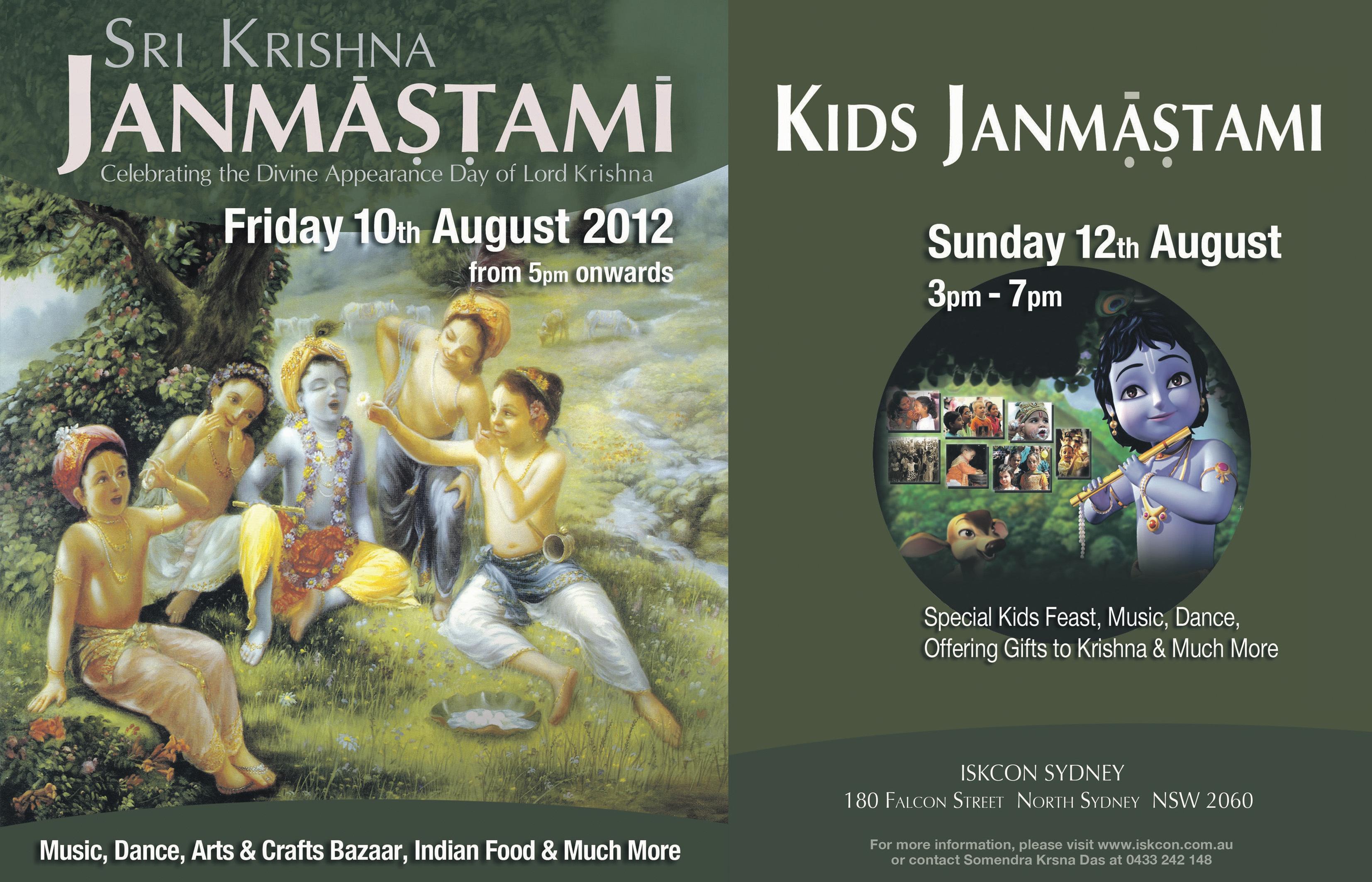
32 AUGUST (1) 2012 www.indianlink.com.au 09 8774 6160 Hallam 2013 EKC’s New TERM Program
Why?
PROFICIENT ACCOUNTING & TAXATION SERVICES





AUGUST (1) 2012 33 NATIONAL EDITION Australian Credit Licence No: 393264 Avinash (CPA) or Anand (CPA) Mob: 0425 330 826, 0412 617 819 Ph: 02 9687 5373, Fax: 02 8580 5124 3/154-156 Bridge Rd (Cnr of Bridge Rd & Byrne St) Westmead NSW 2145 15/30-34 Lydbrook St Wentworthville NSW 2145 Email: Avinash@profaccounting.com Website: www.profaccounting.com Timings: Weekdays 8:30 am – 9:00 pm Weekends 8:30 am – 9:00 pm (Book appointment for convenience) We are Reliable, Experienced, Friendly & Flexible Also available after hours & in weekends Home loan available from **Conditions apply Property Report helps you to give the right offer for the property which you are buying. You can also analyze recent sales of similar properties in the same area.
$45.00 5.74% PA* * ABN Registrations • Super withdrawals • Business plans • Book keeping Services • BAS/GST Returns • Business Takeover deals • All other Tax Returns • Incorporation of Companies • Business Tax Advice • Self Managed Super Funds (SMSF) • Trust Accounting • Internal Audit *Conditions apply We also do H OME LOANS
Perisher is a fantastic first-time snow experience
Snow shower
Cool stuff! Styling!
First time skiing?” Perisher Instructor John asked 12-yearold Ashim Tandon, who nodded somewhat nervously.
“Actually, first time we’ve even seen the snow!” his mum Priya revealed.
The Sydney family, spending a few days of the winter school holidays in the Snowy Mountains, had signed up for ski lessons.

“Don’t worry,” John said to Ashim. “Two hours from now, I’ll have you turning on those skis!”
Parents Priya and Sandeep kitted up too and gave it a go.
The Indian community in Australia is taking up skiing like never before. While only the very privileged can get to ski in the few resorts that India has, migrant families are thrilled to discover how easy it is to try this new activity in their adopted home. The Snowy Mountains trip is now becoming a regular in the July school holidays for many Sydney-based Indianorigin families.
Ashim, like many other desi kids of his age, heard about ski trips his friends went
on regularly, and brought up the idea at home.
Skiing is somewhat of an alien concept to Indians.
Winter to us has always meant handknitted jumpers, eating pinnis and gajak and fresh moolis, doing a bit of dhoop sekna, and perhaps the onset of the wedding season… but not driving to the mountaintops where it’s freezing, to come sliding down treacherous slopes strapped to long strips of metal!
But Ashim’s family could not find any fault with his logic: “You take me surfing in the summer, which we never did in India, why can’t we try skiing?”
And that’s how the three of them landed up at Perisher.
Actually, it was quite simple. They decided to make a long weekend of it and left Sydney at 4 pm on Thursday afternoon. Five hours later they took a night stop at Cooma, about an hour away from Jindabyne, the base of the Snowy Mountains.
An early morning start had them at Jindabyne by 10 am where they planned to
stay for the rest of the weekend.
Sandeep did have a choice of finding accommodation up at the Perisher ski resort, but decided to keep the family budget under control. For less that $200 a night, the family stayed at The Station, a property in Jindabyne owned by the Persiher ski resort, with over 1600 rooms. The rooms were comfortable and centrally heated, and a variety of dining options were available.
Next morning they drove to the Perisher Valley Ski Tube Terminal to take the Skitube up to the snow fields. But first stop was to hire out the gear - thermal clothes, boots, skis, poles, gloves and helmets.
Knowing that skiing can be intimidating when you’ve never tried it, they enrolled for lessons and met John, one of the nearly 500 instructors that work there. John had quick and easy tricks to teach them the basics such as how to stop (snow plough), do turns, ride a chairlift etc. “Don’t worry if you’re not loving it at first,” John told the Tandons, calming their nerves. “Falling on your backside
(or face!) every five minutes isn’t really an activity we’re all eager to follow. But, give it time and persevere – once you get a few basics down, you will enjoy it”.
Later that night, Ashim tucked heartily into his favourite butter-chicken at The Station, while mum and dad opened a bottle of wine to ease their aching limbs.
Next day they were back on the slopes but later in the afternoon wanted to try more of the activities at Perisher. They discovered Tube Town and realized that snow-sports are not limited to skiing or snowboarding! Located on Mt Piper, Tube Town had specially groomed lanes allowing all ages to enjoy a high-speed slide down the slopes and a ride back to the top, on purpose built lifts. This provided hours of entertainment for Ashim and older kids-atheart (Sandeep and Priya).
More advanced players can try crosscountry skiing, while snow-shoeing among the region’s beautiful snowgums is another popular activity.
Perisher is Australia’s most popular snow holiday destination. Located in the picturesque Kosciuszko National Park in




Apres skiing
Back to school
South Eastern NSW, it includes the ski fields in the 4 districts of Perisher, Blue Cow, Smiggin Holes and Guthega. Covering 12.4 square kilometres, its vast expanse makes it the Southern Hemisphere’s biggest alpine resort.

The Perisher season lasts from the NSW June Queen’s Birthday Long Weekend to the NSW October Labour Day Long Weekend. With average minimum temperature during winter being -3.7°C degrees Celsius, there’s sure to be snow all season long, but in case there’s not enough snow the Perisher snow guns ensure adequate cover for snow sports. There are nearly 50 lifts in operation. The percentage of fine weather days during winter is 70%, which makes for excellent conditions on the mountain.
The varied terrain is suitable for all ages and ability levels – Mt. Blue Cow and Mt. Perisher are popular with beginners and intermediates, the other two with advanced skiers.





Perisher staff will happily tell you that the skiing is much better here than in New Zealand’s South Island, even though the mountains are not as beautiful - a major
reason being that access to the ski fields is much simpler at Perisher.


Do you know how Perisher got its name?
It’s quite a literal interpretation, apparently. The Snowy Mountains region was used as grazing land for cattle in times gone by. The animals sometimes perished in the winter, and if it was going to be a particularly harsh season, the locals would lament, “This one’s going to be a perisher…”.
Similarly Mt Blue Cow is named after a particular breed of Scottish cattle whose thick black fur gave off a bluish hue in the distance. And Smiggin Holes gets its names from the mounds of salt that were thrown around for cattle to imbibe, which ended up making large holes in the ground.
On his third day out on the slopes, Ashim was swooshing down Mt Blue Cow’s Easy Rider green track, under John’s watchful eye.
“That was awesome,” he said as he finished, expertly clicking off his skis.
“I can’t wait to try snow-boarding next!”
We know what his family will be doing next winter holidays.
Abhilasha Sengupta
Snowboarding No
Too much fun!!
hands!
Uh oh!
The times they are a-changing
The avatar of the modern Indian woman is morphing into a confusing chimera of western values and local traditions writes MADHUSREE CHATTERJEE
Sohana Badshah is a carefree, rich ‘Bombay girl’, who moves to London to study interior designing. She falls in love with Jagdish Sachdev, a man of refined intellect. The dream match falls apart, with Jagdish blaming bad blood between the families.
Sohana returns home to discover Mumbai is full of her kind - girls with dyed brown tresses, plucked eyebrows, personalities scrubbed of distinct identities and fortunes to fall back on. She is unsure of her position in the family sweepstakes which pit her against her brother in an inheritance war.
Welcome to Bombay Girl (Harper-Collins India) by Los Angeles-based journalist-turned novelist Kavita Daswani’s new trilogy about a tale of new India that straddles several continents. It’s one of the new crossover novels that are making globalised lifestyle statements with live-in relationships and heartaches.


Daswani, a former fashion editor of the South China Morning Post in Hong Kong, may not be a household name on Indian bookshelves, but she has made the

smart Indian heroine a bestseller in the West and Southeast Asia with her previous books, For Matrimonial Purposes, Salaam Paris, The Village Bride of Beverly Hills (Everything Happens For a Reason), Indie Girl and Lovetorn.

Daswani writes about the communities in the Indian diaspora and how they fit into the traditional institutions of marriage, families and the opportunities for women. She captures the clash of cultures between East and West - and the change.
But why Mumbai?
“Because it is the only city in India I am connected with,” says Daswani, who grew up in Hong Kong. “My acquaintance with the city began as a child during a family wedding. I visited frequently as a child. In fact, before the book happened, I had not been to Mumbai for 11 years. The city had changed so much. I needed to get a sense of the city. This was the new Mumbai and I felt that I had to get a lot of time”.
She “spoke to people and read a lot of magazines”.
The women have changed in Mumbai, Daswani notes. “Mumbai girls were much more sheltered and conservative in the past. That part has gone. There is new wealth in Mumbai, girls are well-travelled and have more exposure”.
After her wedding at the Anand spa in the Himalayas - the first in the exclusive resort - Daswani did not return to India till 2010.
“I spent many days in Mumbai to research the book. I saw a lot of things that were not around in my childhood... the shopping malls. My first thought was I could be in LA right now...the quality of things, the bars, new restaurants and the sophistication. These were not mentioned anywhere in the book but made the backdrop,” she said.
For the little details, Daswani sent her draft to a friend who was an “editor at Vogue in Indiatrendy, wealthy and well-travelled”. Daswani’s friend picked on a few things that made a big difference, like her heroine drinking milk and eating Old Man cookies.
“My friend told me that girls in Mumbai were drinking espresso
and eating biscotti. Fifteen years ago, no one knew about biscotti!”
Daswani explores the idea of marriage, migration and freedom - in all six of her books featuring Indian women with diverging outlooks to life.
The defiant Anju in For Matrimonial Purposes escapes India for the US after she fails to marry, to find a career and to drop the “failure” tag. In Salaam, Paris, ambitious Tanaya Shah lands in her fantasy city to marry a man chosen for her but rejects him in the end for a life in high fashion

and glamour. Priya in The Village Bride of Beverly Hills balances her life as a dutiful daughter-in-law and a secret ambition.
Daswani writes about the communities in the Indian diaspora and how they fit into the traditional institutions of marriage, families and the opportunities for women.

36 AUGUST (1) 2012 www.indianlink.com.au Sales and repairs to all garden power equipment. Located just 1 km from m7 and m4 motor ways. Turn over for last financial year over $670000.oo and showing a great profit carmagnole over heads inc, low rent shop size is 180 meters app with a lot of parking. Asking $98000.oo plus s.a.v.training will be provided if needed. Mower and power equipMent shop for sale call peter on 0450736364 Idealshopfortwotothreepeople Dontmissoutonatopbusiness SHASHI HAIR & BEAUTY SALON AND BODY PIERCING CENTRE We use all dermalogica products Mobile: 0411 140 963 Blacktown Shop 2073, Level 2 Westpoint Shopping Centre Tel: 9679 9288 Mt Druitt Shop 222 Westfield Shopping Centre Tel: 9675 1200 St Marys Shop 26 St Mar ys Village Tel: 9833 3334 Merr ylands Shop 1014 Stockland Merrylands Tel: 9682 2002 NOW OPEN IN STOCKLAND MERRYLANDS • Threading • Facials • Waxing • Tinting • Body Massage • Acrylic Nails • Ear, Nose And Body Piercing • Ipl-Permanent Hair Reduction • Weight Loss • Body Treatments • Micro-Dermabrasion • Non-Surgical Face Lift • Painless Skin Tag Removal • Massage • Haircut, Perming, Keratin Treatment, Hair Colouring, Foils, Tint Regrowth, Full Colour, Chemical Straightening, Up-styles Yes we do Shahnaz Facials Hair Ser vices Gift Vouchers Available BOOKS
Sohana Badshah



AUGUST (1) 2012 37 NATIONAL EDITION Register you interest today: Mr Sanjay Agrawal Contact number: 03 9413 1481, Mobile number: 0402 023 502 Email: sanjay.agrawal@unitedpetroleum.com.au NOW OPEN 6 DAYS A WEEKS TILL LATE At Combined Automotives in Northmead let us take care of your motoring needs WE ALSO HAVE A FULL RANGE OF CAR AND TRUCK AND LIGHT TRUCK TYRES For All Your Motoring Needs Pinks Slips Blueslips (Coming Soon) Greenslips Breakdown Towing Log Book Services Engine Cooling Exhaust Suspension & Steering Brakes Balance & Alignment Call TUSHAR or GEORGEINDER on 02 8856 4742 and ask for our opening special discount 10% off on all services 195 BRIENS ROAD NORTHMEAD 2152 Opposite Coca Cola factory
COMPLETE MiGr ATiOn SErViCES
(ABN- 91 761 820 052)
WOrK, STudY, LiVE in AuSTr ALiA, nEW Z EALA nd, C A n A dA
For queries on July’12 changes, Skill Select and Expression of interest call now at 0433 986 780 0421 119 628
Free consultation for 15 minutes or via email
i) Advice on Migration pathways
ii) General Skilled Migrationspecialist
iii) Student Visas( new and extension)
iv) State Sponsored Visas / ENS / RSMS / 457
v) Business Migration
vi) Partner and Family Migration specialist

vii) Admission in Australian Colleges and Universities
• MRT Review procedures in Australia
• OCI / POI / Indian Passport Application / Renewal
We also specialize in Home / Commercial Loans (MFAA Certified) specialist
Contact:
Sonal Agrawal Syed Mohiuddin (JP) Ex-Visa officer MARN:1169617, MMIA:5385 MARN:1171248, MMIA: 1021, MFAA:54385


Level 2, Suite 8A, 48 Macquarie Street, Parramatta, Australia 2150
PH (02) 86775161, FAX: (02) 98916314
Email: contactus@completemigrationservices.com.au
(We Speak English, Hindi, Marathi, Urdu, Telugu)

For quick visa assessment fill the online visa assessment form on www.completemigrationservices.com.au
We help you achieve a better life and pursue your dreams
In democracies we grumble
India continues to be misrepresented by the Western media despite its emergence as a nation of stability in a world of economic unrest
BY NOEL G DE SOUZA
The ‘Arab Spring’ was not a revolution within democratic societies. Rather, it was a revolution to establish democracy in countries which had been under mostly military dictatorships. Those movements have yet to bear fruit, though some gains have been made.
In contrast, a similar type of movement with noisy demonstrations set up in India by Team Anna and its opposition allies took place within a democratic society, and were subject to the prevailing law-andorder rules. We then saw the spectacle of foreign press representatives drawing conclusions from surveys of less than 2000 people, to gauge the effects on 1.2 billion people. The analyses were sweepingly in favour of Team Anna though subsequent elections have shown that the Team had little or no effect.
Angela Merkel inherited her current position which involves both Germany’s financial muscle as well as the Euro mess. None of these were of her making. She has faithfully continued the German position and worked hard to try and save the Euro from oblivion. Europe is in economic shambles with negative growth rates being common.
Manmohan Singh has not inherited a mess. He is himself the architect of a new liberalised and industrialised India. The article is not sympathetic to him. For example, it points out that India’s growth fell to a nine-year low of 5.3%, without mentioning that it was the world’s highest. Manmohan Singh is not responsible for India’s reduced growth rate. If anything, his policies have helped India to have a growth rate which would be the envy of Europe.
(India’s) current growth rate, though fallen in conformity with the world economic situation, has been the world’s highest.
There have also been noisy European demonstrations, such as in Greece and in Holland, against proposed austerity measures. Such demonstrations (sometimes violent) have taken place within similar democratic contexts, but Western governments and analysts are surprisingly dismissive of these movements. European protests are often dismissed as promoted by minority parties, marginal groups or professional trouble makers. Contrast this with the Western press portraying Anna Hazare who led protests in India being portrayed as a virtuous saintly figure.
In democracies we grumble, and rightly so. That is the difference between India and China. In China, the government controls dissent. One may say that India is handicapped by dissent, but that is the way that its people want it to be. The Western (including Australian) press has often portrayed India as being in chaos and in absolute disorder. Yet India has emerged as one of the mostly rapidly industrialised countries of the world. Its current growth rate, though fallen in conformity with the world economic situation, has been the world’s highest.
TIME magazine’s new issue focuses on two world leaders, Angela Merkel and Manmohan Singh. The issue is given much importance. In Australia, TIME has Merkel on the cover with the words, ‘Why everybody loves to hate Angela Merkel and why everybody is wrong’, by Peter Gumbel. The Indian issue has Manmohan Singh on the cover with the title ‘A Man in Shadow’ by Krista Mahr. The titles betray the intent of the articles.
The TIME article blames Manmohan Singh for the reduced number of times that the Indian Parliament has met, but not mentioned the constant disruption and chaos that the opposition was creating. The Indian Government initially proposed to grant American supermarket giant Walmart license to open a limited number of stores. This was opposed by several members of the ruling coalition because of its effects on small traditional merchants. The article sees this as negative, but does not mention that the opposition was the most vocal in opposing the initiative.
TIME magazine seems to be following a double standard with one rule for Europe and another for Asia.
As India’s Commerce Secretary S R Rao has succinctly said, “It is quite distressing that from the past two months, the exports performance was not good. But the world over there has seen a tremendous dip in trade and this is going to be (the trend) in at least next one or two years”. He added that, “In Euro-zone we do not see any finality. The US market is also contracting and so is the Chinese one. Japan is again showing some distress. These are signs of recession all over the world.”

Grumbling, dissent and criticism are the essence of democracy. A democratic household does not stifle any of these essential aspects which ultimately lead to a more modern outlook. Australia has a high measure of public participation in dissent and looks with suspicion upon legislation which does not give them sufficient scope to appeal against arbitrary decisions.
The TIME article is not in resonance with the American government policy of treating India as a virtual ally whose navy is being encouraged by the USA to patrol the Indian Ocean, as the USA withdraws its vessels to the Pacific Ocean.
38 AUGUST (1) 2012 www.indianlink.com.au
Migration Agents Registration Number www.mara.gov.au 1169617
OP ini O n
Evil flourishes when good people keep silent…

The shocking attack on a young African student now in peril questions India’s antipathy towards race intolerance within its own borders
letter to the Punjab Chief Minister: “I sent him to your country to study. He was not out on the street to learn how to kill or steal. Whenever you (Badal) are with your own children, look at them and see my son Yannick who is dying here at such a tragically young age.”
Herbal Hair and Beauty (for ladies only)

Iam a trenchant critic of most of India’s countless television channels. A lot of them are unobjective, insulting, shrill, irresponsible, sensationalist and often unfair.
But, it warmed my heart recently to see them take up the matter of an African student who was mercilessly, viciously and without provocation, beaten up three months ago by some cowardly, drunken young goons in Jalandhar, Punjab. They were obviously well connected, as they managed to roam free for a couple of months after their dastardly deed.
Their victim, Yannick Nihangaza from Burundi was studying Computer Science at Lovely Professional University (yes, it is called that!), supposedly a leading private university with hundreds of overseas students.
The contrast between the sluggish (in) action of the Punjab and/or the Indian government and that of other countries could not be starker.
Two years ago, Indian student Shravan Kumar was a victim of what appeared to be a racially motivated attack. Australia granted him permanent residency status, entitling him to various benefits as a result.
Yannick survived the Burundian genocide and its 13-year civil war, but suffered such a fate in India where he came to study.
He has been in a coma for over 3 months now and not much hope is held for his recovery. As if that was not bad enough, his father Nestor Ntibateganya who flew in from Burundi in April to be by his son’s side, struggled to get help, justice or answers for two whole months from the callous Indian authorities.
Fortunately, the TV channels found out and then all hell broke loose for the perpetrators and prevaricators. Those who had hitherto ignored the issue finally sprung to attention and action:
1. The Police said they had made progress. Surely though, they must have known all along who the alleged culprits were? They were probably covering up as one of them, Romi Uppal, was the son of a Superintendent of Police. They have now made four arrests.
When an Australian teenager fatally stabbed Nitin Garg, an Indian student, the Victorian Supreme Court sentenced the teenager to 13 years in jail.
When Anuj Bidve was murdered in the United Kingdom and his family complained about delays in the processing of the case, the police sent two senior officers all the way to India to brief the relatives.
Punjab, on the other hand, took little action to address Yannick Nihangaza’s case, and the Indian public paid scant attention. It is unlikely that the reaction would have been so blasé had this happened to an Indian in Australia or in Burundi.

We don’t know yet if it was a racially motivated attack, but at the very least there should have been some sensitivity, urgency and compassion displayed by all concerned, and the wheels of justice should have been set in motion before the TV channels forced the State government and the Punjab Police to act.
If Nihangaza never wakes up, it will be hypocritical for India to claim that its honour has been besmirched the next time something like this happens to an Indian citizen overseas.
2. The Punjab Chief Minister Prakash Singh Badal at last found the time and the will to do something - after paying little heed to the matter for two months. He sent a top bureaucrat with Rs 5 lakhs for Yannick’s huge medical bills.
3. Even Burundi’s Ambassador to India, Rubuka Aloys (where was he for 2 months and what did he do?), publicly jumped into the fray. He went to India’s Ministry of External Affairs and requested assistance for Mr Ntibateganya to take his son home. What an unspeakable tragedy! Yannick survived the Burundian genocide and its 13-year civil war, but suffered such a fate in India where he came to study. His father Nestor made this point in his
The case betrays a mindset that tends only to the concerns of the rich and the powerful. It should have been a national outrage much sooner, and there needs to be serious public introspection on our own racist attitudes. Zero tolerance of xenophobia is imperative. It is hard to believe Yannick’s race and African origin were not factors in the tardy response of the system.
If Nihangaza never wakes up, it will be hypocritical for India to claim that its honour has been besmirched the next time something like this happens to an Indian citizen overseas.
Indians become very touchy and indignant when they hear about a person being attacked for being Indian or facing discrimination overseas because of skin colour or religion.
Should we not be as quick to respond when a guest in our motherland is treated with such shocking apathy?
AUGUST (1) 2012 39 NATIONAL EDITION
Specialised from Overseas (Shahnaz Herbal) and Australia • Threading • Hair cutting / Colouring / Streaking • Waxing / Nail / Body treatment • Beauty and Skin care • Simple Mehandi and Bridal Mehandi • Wedding and Engagements packages (Indian brides) • Facials Shop 34, 74 Genesis Building Rawson St, Epping 2121 (Entr y also via Beecroft Rd) Ph: 9868 4040 Mob: 0430 343 565 Monday closed Open from 10:00 am to 6:00 pm Shop 3, 22 Henley Road (inside the Arcade) Homebush West 2140 Ph: 8746 0400 Mob: 0413 062 984 Open 7 days Open from 9:30 am to 5:30 pm
inder Kaur
Beauty therapist & Hair stylist
Good Feel G ood
Harv
(Nenu)
Look
opinion
DARSHAK MEHTA
The ‘Right’ to bear arms

The process of changing the US Constitution to regulate ownership of arms
BY RITAM MITRA

Enshrined in the Constitution of America are a number of fundamental principles of democracy and freedom. The Bill of Rights, the collective name given to the first ten amendments of the Constitution, features many values that most modern societies take for granted. No laws can abridge the freedom of speech of the people or the press. No one may be searched, nor his or her assets seized, in an unreasonable manner. There is a strict prohibition on excessive bail and cruel and unusual punishments. Why then, amongst these quintessentially democratic ideals, does the right to bear arms appear as the second amendment of the American Constitution?
In a recent study, the United States saw 11,127 people killed by firearms each year – a rate of 3.6/100,000.
Late last month in Colorado, the release of the much-anticipated final movie in the Batman trilogy, The Dark Knight Rises brought with it a much more real terror than any villain in a superhero movie could have achieved. During a midnight screening of Christopher Nolan’s blockbuster, a gunman set off tear gas grenades before opening fire on the audience with multiple firearms. He killed 12 people and injured 58, some severely. He did not discriminate between men, women or children.
The man, James Eagan Holmes, had no criminal record. In fact, until he shot the firearms - the 12-gauge Remington Model 870 shotgun, the Smith & Wesson M&P15 semi-automatic rifle, and the .40 S&W Glock Model 22 handgun which he used during the attacks, Holmes had not been convicted of any crimes because these firearms were all purchased legally.
Holmes had purchased nearly 7,000 rounds of ammunition in the 60 days before the shooting. Legally.
The United States has the highest rate of gun-related injuries in the world. It also, however, has the highest rate of gun ownership. And it is this fact which is, to many, more concerning. A government’s main responsibility is the well-being of its citizens - and the question on many lips isisn’t the US Government failing its citizens?
The answer, unfortunately, falls into a grey area over which morally-conscious US politicians will be tearing their hair out. And here’s a sad, but real reality check:
When something is enshrined in the Constitution, it is infinitely more difficult to change it – just as is the case with the Australian Constitution.
In the US, changing the Bill of Rights is not as simple as passing a vote in the Congress. First, both houses of Congress would have to propose a constitutional amendment, requiring a 2/3 majority in each house. The proposed amendment would be submitted to each of the states for ratification, where the legislatures of ¾ of the states must then ratify the amendment (sometimes, within a certain period of time) before it becomes part of the Constitution. There is another method where the legislatures of the states can apply to Congress for amendments – but this is hardly likely with respect to the current issue, and requires a similarly laborious process. It simply will not happen any time soon, and repeated polling has shown that American citizens don’t want any changes. It is difficult for us in Australia, where we are subject to perhaps some of the strictest firearms legislation in the world, to fathom the US position on guns. The country’s early history lends a small clue: the American Revolutionary War of the late 18th Century saw the country fight for, and declare independence from Great Britain, and so the link between guns and freedom was born. Indeed, in celebration of Independence Day, early celebrations saw the origination of the 13gun salute (now 21-gun, the 13-gun salute was a reference to the 13 newly-formed United States at the time).
There is no need to mention the number of devastating shooting incidents that have taken place in the United States over the years, not to mention the thousands of daily incidents that do not make the news because of their normality. In a recent study, the United States saw 11,127 people killed by firearms each year – a rate of 3.6/100,000. In comparison, just across the border in Canada, 165 gun-related deaths were recorded – or 0.484/100,000.
Australia saw just 65 deaths in this period, a rate of 0.292/100,000.

Far-right gun lobbying organisation, the National Rifle Association of America (NRA) has been, since 1871, promoting firearm ownership rights. The main argument seems to be, “guns don’t kill people, the people that fire the guns do”.
The logic behind this statement fails to make an appearance to me. Freedom is a concept that is inherently linked with peace and equality. Many American civilians seem to be misguided by their own Constitution. The right to bear arms is one based on a context of revolution and battle, and what would then of course be a legitimate reason to own a weapon. What place does it have, then, in the most powerful nation in the world in a time of peace?
40 AUGUST (1) 2012 www.indianlink.com.au From Call 0430 087 262 or 0416 812 002 Register new companies from $550* * Do it online for visit www.goodwillaccountants.com.au (Open 7 days) GOODWILL TAXATIONS (Tax Agents)
VIEWPOINT
is not just difficult, but opposed by some of its citizens
Help us to help you get a better home loan that can potentially save you thousands!
By Navjeet Singh Matta, ASIC Licensed Mortgage Broker also Director- Gain Home Loans (Full member MFAA)
What is the definition of a good home loan? Is it low interest rate, better features or the security of dealing with a major bank? Most of the people do not review their loans after they have taken one. They get busy with their lives and for them it’s a very complicated exercise to start researching the several options available which they actually did very passionately when they initially took the home loan. Did you all know that the demand of credit has fallen in the last few months and the lenders have now started offering more discounts than what they were offering earlier? It is very likely that when you took the home loan, the rates banks offered you were higher than the one you can get now. So what should you do? The best thing is to contact a mortgage broker like us who can review your home loan and then suggest the best move forward. In most circumstances, you will be better off. As a thumb of rule, if your current variable loan is more than 6%, then there is a good chance, you might be better off doing this small exercise. So all you have to do is to visit our website www.gainhomeloans.com.au and click the tab which says “already have a home loan”, fill out a small form and then one of our experienced mortgage brokers will get in touch with you and assess your situation and can find a suitable loan for you, we can even negotiate with your current lender to get you a better rate, we do not charge for our services. This 2 minutes you spend can potentially save you thousands of dollars for the life of the loan. We do not just asses your interest rate, we can also find out whether you are eligible for buying an investment property which can also help you build up wealth and save some tax. You can also call us on 02 9676 3417 or visit our office in Flushcombe Rd, Blacktown. Being a mortgage broker for the last eight years, I have done lot of research and the experience of dealing with thousands of customers and dealing with mostly all major and non-major banks, it has helped me immensely to find the most suitable loan for our clients so I urge all of you to take advantage of this and help yourself get a better deal. ort !
Did you know RP Data is the most widely used system by the Real Estate professionals all over Australia? It’s a paid service and quite expensive for a layman as they do not need it on a regular basis. It is a very helpful tool if you are purchasing a property, refinancing your home loan or want to use equity in your property to invest in business or investment property. This is approximately a 20 page report which outlines approximate market value of the property, the suburb profile, the mix of people, their incomes, religion and lot of other attributes. This property costs $89 from elsewhere however we provide it free to all whoever wants it; and its very easy to get your hands on it, all you have to do is visit our web-site www.gainhomeloans.com.au, click the ‘free property report’ tab, fill out a small form and we will email this report to you within 24 hours, how easy is that ? This report can potentially save you thousands of dollars as you will have enough information about the property and suburb that you will be able to negotiate better both ways; selling or purchasing.
Is it the best time to fix your home loan ?
At the time of writing this article, the best 3 year fixed rate home loan is 5.59% (with an annual fee of $395). This rate is around 0.5% lower than the average variable home loan in the market, however the question is, is it the best time to fix the mortgage ? The last time Reserve Bank dropped the cash rate was in June 2012 and there is forecast that there is atleast one rate cut on the cards this year, or may be more. The problem with these predictions is that they are very short-term so sometimes it does make sense to fix your mortgage as you are definitely sure about your repayments, but then, it comes with lot of conditions, like you can not make unlimited extra repayments, you may incur a huge break-costs if you want to get out of it, etc. So if you really want to fix the rates, then the best way is to split your loan and fix a part of your home loan. If you want to get some advice on your personal situation, you are more than welcome to call me and I can help you make the decision. Thank you for reading this article and your continued support, as mentioned before if you are looking for a good deal on your home loan, please contact us at Gain Home Loans, Lvl 1, 15 Flushcombe Rd, Blacktown, Ph: 02 9676 3417 and 0412 452 429 or you can drop me an email at info@gainhomeloans.com.au

Disclaimer: Any advice given in this article does not take into account the personal needs and objectives or financial situation of the reader. The reader should consider the appropriateness of this and seek professional advice before making a decision whether to acquire or continue the products and services mentioned.
Free Visa Assessment* for Students & their Employers
Course Admissions (Australia wide), Student Visas, Work/Sponsorship Visas (457s, RSMS, ENS), Partner Visa, Family Visa, Tribunal Appeals & Waivers, General Skilled Migration.
• “I was on a Bridging visa for my SC885 visa application on 110 points. Mr. Ramneek made my 457 visa possible.” - C. Patel, Merrylands, NSW
• After 8503 (no further stay), condition waiver, my student visa was refused. Thank you Mr. Ramneek for a successful appeal at the Migration Review Tribunal without a hearing. P.D. Glenmore park, NSW
• “I got my 457 work-permit (from student visa) within 4 weeks. Mr. Ramneek done his work very accurately, on time, without any failure & provides perfect guidance. I am very happy with his work & very thankful to him” - Chirag Patel, Kew, Victoria.
• “I was able to negotiate through the complicated process & retain a baker full time in my business. For 457 working visas, Mr. Ramneek Madahar’s services are highly recommended. Definitely a 5 star service.” - Harry, Bakery Owner, Oatley, NSW
• “I was finally able to receive confident & correct advice in relation to my situation from Mr. Ramneek Madahar.” - G. Bastola, For SC457 Visa, Homebush, NSW
• “Thank you for your timely assistance with our restaurant sponsorship and 457 visa grant.” CH Patel & DC Patel, Restaurant Owners, Camberwell, Victoria
• “Ramneek Sir has made our 457 visa 100% successful. Thank you forever.”
- Shruti Shah, Merrylands, NSW
• “I was a student in Australia. Mr. Ramneek helped me for a 457 visa.”
- Chaudhari Prakash, Ashfield, NSW
• “For any complex cases, to anyone who needs help in immigration... don’t worry you are in safe hands.” - A.H., 457 Work Visa, Cronulla, NSW
“I sincerely recommend Mr. Ramneek’s services for immigration.” - K.K., Central Coast, NSW
• “Mr Ramneek Madahar, thank you very much for our PR. Your efforts are appreciated & thanks for looking after my case – D. Patel, Business Skills, Melbourne, Victoria

• “I am thankful to Ramneek for my permanent settlement in Australia.”
- Vikas, GSM, Parramatta, NSW
• “I applied for Regional - SC119 visa under the DRC on 15/11/2011, the visa was granted on 09/02/2012. Mr. Madahar has handled my application very well.” - Vijaya, Bourke, NSW
• “Thank you Mr. Ramneek for my ENS PR under exceptional circumstances.”
- S. Kumar, Croydon, NSW
• “Thank you for your support & help towards my ENS PR.” – S. N., Ingleburn, NSW.
• “I am very thankful to Ramneek Sir for his help & support for my ENS residency. I had no hopes left & was planning to go back to India with my family.”
- K. Shah, South Strathfield, NSW
• Thanks Very – very much for your help for extending my student visa and 457 and RSMS advice.
- A.Rani, Smithfield
please call 02-9745 3106 or 0412 764 600
The
6, 24-26 Morwick St., Strathfield, NSW 2135 (5 min. walk from Strathfield Station. Opp. Strathfield Recreational Club/Tennis Courts)
* Provision of complimentary advice &/or assessment for our eligible students &/or their employers is at our sole discretion.
AUGUST (1) 2012 41 NATIONAL EDITION
Great Learning Tree Pty Ltd (Ramneek Madahar, RMA# 0428459) UNIT
Just some of our many satisfied clients: Education, Career & Visa Solutions @ The Great Learning Tree
appointments,
or email: enquiries@tglt.com.au Calling all Students, Employers! There has never been a better time to apply for a SC 457 visa (Employer Sponsorship)
For
Higgs boson breakthrough
One of India’s leading scientists has been recognised in a ground-breaking discovery
significantly toward the recent discovery.

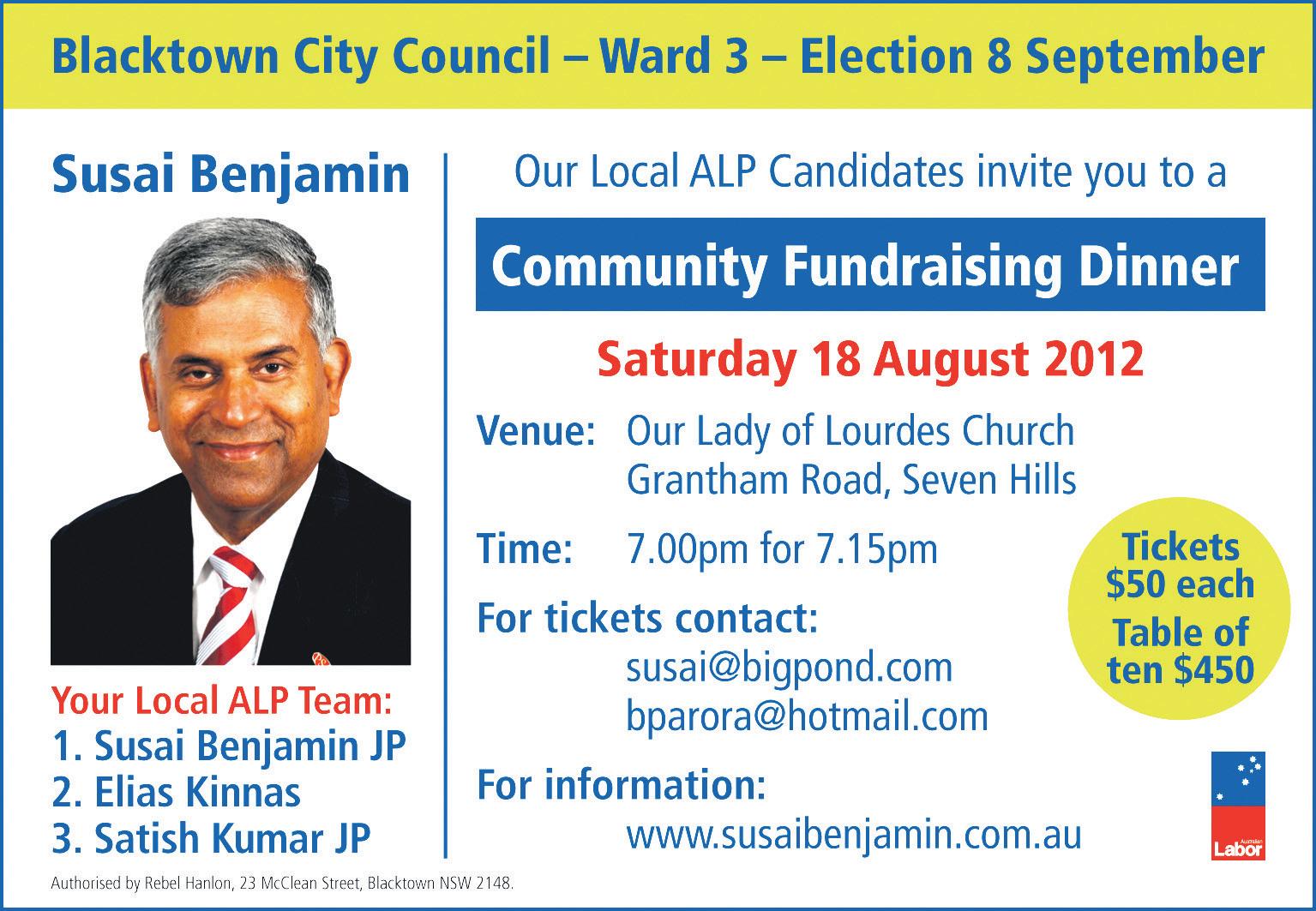
The answer to this question tells us that the ‘boson’ identity was not a direct contributor to the recent discovery, however was responsible for a number of significant advances in science and has consequently been recognised and remembered through the naming of the Higgs boson particle. The identity that the term ‘boson’ refers to is the Indian Physicist, Professor Satyendra Nath Bose (1894-1974).
Bose’s connection with Einstein came about in 1924 when he sent a physics paper he had written to Einstein for his opinion. Einstein had been awarded a Nobel Prize in 1921 and was the recipient of many letters and requests for his opinion on all topics relating to science, culture, art, even food! Regardless, Bose’s paper caught Einstein’s attention, and with the scientist’s approval, it was soon after published in the top German physics journal of the time.
which appeared to have mass, only did so because they were in the presence of other Higgs boson particles. It took until 2012 to prove these particles existed, and this was no mean feat.
BY LEANNE WOODWARD

There has been an enormous amount of worldwide media reporting the recent discovery of the so-called Godparticle, which we now know as the Higgs boson particle. When a physics story tops all headlines in the media, we can be sure that the discovery was exceedingly significant.
From reports, we know that we can attribute the discovery of the Higgs boson particle largely to physicist Peter Higgs, and also to the research team in Switzerland at the European Organisation for Nuclear Research. The discovery is so significant many are talking about a Nobel Prize for Peter Higgs. I heard much about Higgs in the media but I wondered about the other namesake of the Higgs boson particle, ‘boson’. This identity appears very less in the media, but I wondered, had this identity also contributed
Satyendra Nath Bose was born in Kolkata, and was one of seven children. He was an exceptional student, accomplishing top grades in BSc Mathematics and MSc Mixed Mathematics. In his professional career he specialised in the fields of quantum mechanics and mathematical physics. From 1917, Bose taught at the University of Calcutta where he worked in a poorly funded facility, but with an inspiring group of worldclass mathematicians such as CV Raman, and Meghnad Saha. In 1921, Bose left Calcutta University and took up a position as a lecturer at the University of Dhaka, and became the head of the physics department for 25 years. In 1945 he moved to the University of Calcutta, and continued his research and teaching until he retired in 1956. Throughout his career, Bose’s knowledge and understanding of quantum physics was such that he had the opportunity to collaborate and deliberate with physicists of equally high stature, including the renowned Louis de Broglie, Marie Curie and Albert Einstein. It was in particular Bose’s collaboration with Albert Einstein that helped generate some of Bose’s most significant work.
In 1925, Bose took 2 years study leave from Dhaka University and travelled to Paris. There he worked in Madame Curie’s laboratory on X-rays and radiation. The following year, Bose moved to Berlin to meet and work with Einstein. There, he was amongst the likes of Niels Bohr, Werner Heisenberg, Erwin Schrödinger, and many other extraordinary scientific scholars.
Satyendra Nath Bose’s work is of Nobel Prize stature, many believe, as the concepts he derived and defined are today considered physics fundamentals. The three most notable contributions by Bose include 1) Bose statistics, 2) the Bose-Einstein condensation phenomenon, and 3) Bosons, a class of subatomic particle he defined, which includes the particles Gravitons, Photons, Gluons and Higgs bosons.
The Higgs boson, ‘Godparticle’, was only just recently proven to exist, using the world’s largest particle accelerator, a Large Hadron Collider, this, even though Physicist Peter Higgs had postulated the idea way back in 1964. Higgs hypothesized that all subatomic particles were entities with no mass, except for his speculated Higgs boson particle. Higgs believed that any particle
Now having proven such a feat, it still does not mean that the story is complete. Where new discoveries are made, there are always areas that require further explanation. One such case involves the Neutrino particle, believed to be the constituent of dark matter, the thing that makes up most of our universe, (and proudly first detected in India, at the Kolar Gold fields in an underground lab). Neutrinos are supposed to be massless, if you follow the Higgs boson theory. However in some experiments, neutrinos seemingly do have some mass and science is thus yet to prove how this could be the case. Work is being done at the India based Neutrino Observatory (INO) near Madurai in Tamil Nadu to try and answer this question. The discovery of the Higgs boson is a good sign that the research at INO, into atmospheric neutrinos, is on the right track.
So the story continues, and it is great to know that science in India is playing its part, and is at the forefront of research. Indian scholars and research teams are contributing substantially on a worldwide stage, in many fields of science. It’s wonderful to see that an Indian scholar has been honoured in this most recent groundbreaking discovery in physics. Satyendra Nath Bose, a remarkable physicist, his story both fascinating and motivating, and should be told more often. I wait in anticipation for the next discovery, and wonder, will it come out of India?

SN Bose was not a direct contributor to the recent discovery; however he was responsible for a number of significant advances in science and has consequently been recognised and remembered through the naming of the Higgs boson particle
Bose’s work is of Nobel Prize stature, many believe, as the concepts he derived and defined are today considered physics fundamentals
42 AUGUST (1) 2012 www.indianlink.com.au science



AUGUST (1) 2012 43 NATIONAL EDITION • Preparation of BAS, IAS & GST Statements • Individual Tax Return • Partnership/Company/Trust/ Super Fund Tax Returns and Financial Statements • Negative Gearing CALL 0433 827 933 Registered Tax Agent & Accountant Tax Made Easy...
A journey down the Mekong river in Cambodia is a time to reflect and enjoy nature’s best, albeit in man-made luxury

Mekong Musing on


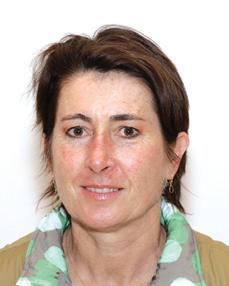 BY PETRA O’NEILL
BY PETRA O’NEILL
Cambodia is a land of contrasts – an ancient civilisation with the majestic temples of Angkor; the loss of the country’s cultural elite as a consequence of atrocities committed by Pol Pot; the serenity of a Buddhist temple; and the raucous din of tooting trucks and tuk tuks.

One of the most beautiful countries in South East Asia, it is a destination to which I fondly return. This time I continued my journey on the Mekong River that winds through six countries from China, Myanmar, Laos, Thailand,
the confluence of the Bassac, Mekong and Tonle Sap rivers, and one of South East Asia’s most charming cities. Broad tree-lined boulevards, French colonial architecture interspersed with domed Buddhist stupas and a smattering of buildings included the Railway Station and Central Market reflecting the Art Deco style. The French influence is still evident with cafés serving baguettes, croissants and coffee.
Wandering along the grand halls of the National Museum provided an overview in the Khmer aesthetic with giant statues dating from the 8th century. Next door is the Royal Palace with its magnificent Throne Hall and Silver Pagoda.
The historic Raffles Hotel Le Royal is lovely with well-heeled tourists lounging by the poolside, some never leaving the confines
Pavilion Hotel, once home to a Cambodian princess and now an exquisite boutique hotel, spending my days exploring on foot many of the neighbourhoods close by and enjoying wonderful Khmer Amok curry at Sugar Palm.

On my final morning I walked along the riverside promenade, past locals engaged in Tai Chi and vendors setting up their carts to sell drinks and snacks. Then along came an elephant, which in any other context would appear quite extraordinary, but in such a city of enchantment, seems not out of place.
I joined the RV Tonle Pandaw for a cruise upstream destined for Siem Riep. While Pandaw Cruises commenced operations on the Mekong in 2003, many other companies now cater to the increasing number of travellers

who prefer a more relaxed way of travelling between Ho Chi Minh City in Vietnam and Siem Riep in Cambodia. Compagnie Fluviale du Mekong and Bassac are boutique, while larger ships include the Jayavarman, Jahan, La Marguerite and AmaLotus. The RV Tonle Pandaw is reminiscent of the original Burmese paddle steamers built by the Irrawaddy Flotilla Company. Beautifully hand finished in brass and teak with rattan furnishings and an informal ambience, it cruised at a leisurely pace.

We cast off with most of my time spent on the Observation Deck that provides an uninterrupted panoramic view of life on the river - rice fields, Pagodas, riverside towns and villages that come into view.
We took an excursion on a small boat up the Tonle Sap River to discover the vast wetlands and its many fish traps. We travelled by ox cart to Kampong Tralach Pleu Pagoda with outstanding mural paintings along a bumpy dirt road. Over the next few days we visited floating villages where timber houses are built on stilts, explored ancient temples and villages including Chong Koh renowned for silk weaving, monasteries and local schools, before arriving at Kampong Cham, a charming town with a busy market. Perhaps the most
memorable part of the journey was at dusk watching a tall line of clouds turn pink, then brilliant orange at sunset, while enjoying the heady cocktail of the day.
In 1859, French explorer Henri Mouhot set out to explore Indochina. It took him a year of hacking through jungle and fending off leopards, leeches and elephants before he arrived at Angkor Wat, the largest religious monument on earth completed in 1175 AD. The Buddhist temples of Angkor cover a vast area of around 200 square kilometres with more than 100 temples, requiring a stay of several days. Other great monuments include the Bayon, the vine-covered Ta Prohm and Banteay Srei, the oldest temples dating from 835 AD.
As captivating as the temples of Angkor may be, Cambodia’s sun in May is scorching, the air dry and gritty. Fortunately Siem Reap, the town that lodges and feeds Angkor’s visitors, has evolved from little more than a village into a chic haven of rest and relaxation with excellent cafes, restaurants, bars and a vibrant contemporary art scene, providing the perfect final destination to end my journey. My favourite was the galleries of John McDermott, known for his mystical images of Angkor. For silk and gifts, head for Senteurs d’Angkor, Artisans d’Angkor and Rajana.

TRAV e L
Left: Phnom Penh Market Village house
Its pot-holed roads have gone, the boutiques, restaurants and hotels are so sophisticated, they are almost destinations in themselves. Many affluent tourists do little more than fly into Siem Riep for a chauffeur driven tour to Angkor Wat. At the airport I asked an American from Las Vegas what she had remembered of her stay. “Gorgeous Hotel!”, was her response. But for me, there is no better way of experiencing a country than to cruise on its rivers and in Cambodia, after a journey on the Mekong you feel that you know just a little of it, with way more to

Wandering along the grand halls of the National Museum provided an overview in the Khmer aesthetic with giant statues dating from the 8th century
Main Image: Mekong Sunset

Clockwise left to right: Tonle Pandaw

Cabin

Riverside village Chamkar stir fry Elephant


Angkor Temples Gibbon Royal Palace.



Travel noTebook
MEKONG

GETTING T h E r E
You can reach Cambodia with Singapore Airlines, Malaysia Airlines, Air Asia, Thai Airways or Vietnam Airlines. Jetstar Asia and Bangkok Airways also fly there.
Acco MM odATI o N
In Phnom Penh, the historic Raffles Hotel Le Royal is spacious and charming with a large swimming pool. The more affordable Pavilion Hotel is exquisite the staff are welcoming and breakfast taken poolside is a treat. Website: www.thepavilion.asia Email: reservation@ thepavilion.asia Phone: + 855 0 23 22 22 80
Siem Riep has undergone a building boom in recent years, with many huge hotels on the road towards the airport. Most cater to tour groups and should be avoided. The hotels in the centre of town are far preferable with La Residence and Raffles Grand Hotel d’Angkor at the high end. I love the affordable Golden Banana Boutique Hotel which offers 6 types of accommodation. Staying here makes me feel like I’m back in Bali in the 70s. Website: www.golden-banana.com Email: goldenbanana2@gmail.com Phone: +855 0 12 654 638
GETTING A ro UN d
There is no better way to travel than to cruise on the Mekong River. Pandaw Cruises website: www.pandaw.com. The most common means of transport is the tuk-tuk. Hotels can arrange transport. In Siem Riep, Barang will arrange taxis and tuk tuks at reasonable prices. Email: barangangkortour@yahoo.com Phone: + 855 092 425 959

c UISINE cho I c ES
In Phnom Penh, head for Sugar Palm at 19, 240 Street for great authentic Khmer food. Many other good restaurants and boutiques are found here. Have a meal or hand massage at Friends that provides training to former street children at 215, 13 Street. In Siem Riep, head for Pub Street and Pub Street Alley. Chamkar has great vegetarian Khmer cuisine.
TIP
Carry a wad of crisp US dollars in small denominations since most restaurants, hotels etc., charge in US currency. Credit cards are not widely accepted. Canby Publications has free guides available from leading hotels with maps and info.

46 AUGUST (1) 2012 www.indianlink.com.au
Sensible snacking
It’s hard to stick to three meals a day, so healthy snacks are a solution
 BY GEETA KHURANA
BY GEETA KHURANA

Snacking is not always bad, if you choose the right foods on which to snack. In fact, snacks can help to fill the gap between meals and prevent you from having larger portions at meal times.
Adolescents, especially those who are very active in sports and burn more calories, tend to feel more hungry and are not satisfied with their regular three meals, so they snack a lot more. After school activities, other interests and long hours spent studying can all involve extra snacking. Therefore, it is very important to make sure that the snacks consumed are good quality, wholesome and filling which will provide the extra energy and nutrients we need. It is also important that we know how to choose healthy snacks when eating away from home. Here are a few examples of ‘power snacks’.
Dairy
• Milkshakes and smoothies made with fat reduced milk and by adding a small amount of flavorings or fruits are an excellent and filling snack for the afternoon.

• Reduced fat custard, low fat yoghurt or raitas made with low fat yoghurt are also excellent snacks, as well as help in fulfilling our requirement of 3 serves of dairy every day.
• Small serves of low fat ice creams without the addition of too many high calorie toppings can also be good desserts, provided we stick to the portion sizes.
Nuts and dried fruits
• Raw or dry roasted unsalted nuts and seeds such as almonds, Brazil nuts, cashews, chestnuts, hazelnuts, macadamias, pecans, pine nuts, pistachios and walnuts are excellent snacks that are energy dense and good sources of PUFA and MUFA (poly and mono unsaturated fatty acids).

• Dried fruit such as dates, apricots, figs, prunes, and sultanas are good as desserts, as well as good sources of fibre. Packets of nuts and dried fruits can also be kept in school bags or handbags as a reserve snack, as these have a better shelf life than other snacks. (Know your school’s nut policy, though).
Fruit and vegetables
• Cucumbers, tomatoes, lettuce, and avocado can be used as toppings on biscuits. Carrots and celery sticks can be used with low fat dips.
• Fruits can be versatile as these can be eaten as whole fruits or added to milkshakes, smoothies, yoghurt, raita and custard. Fruit platters or cut fruit on skewers are also healthy options. But try to avoid fruit juices and have whole fruit instead.

Breads and cereals
• Wholegrain crackers or biscuits topped with tomatoes, cucumbers, lettuce, or avocados and low fat cheese are filling snacks.
• Plain unsalted popcorn without the addition of butter can be another healthy option.
• Raisin or cinnamon toast or banana bread, if shared with a friend over a cup of tea or coffee, can take care of your cravings for cakes and doughnuts.
• Go for wholegrain bars instead of chocolate cookies.
• Also try baked tortilla chips with salsa instead of sour cream.
• Microwave papads instead of frying, as snacks.
• Half a cup of high fibre breakfast cereal is also a healthy snack.
Lentils and beans
• Legumes such as soy, red kidney beans and chana are all low GI, rich in proteins and contain fibre as well as phytochemicals.
• Salads made with sprouts or chana chaat with lots of salad veggies is a very filling evening snack, and also can be used as a substitute to papdi chaat fried Indian snacks.
• A can of baked beans or baked beans on a slice of whole grain toast or crackers can be quite filling.
Soups
• A hot bowl of soup that is nutritious, comforting and filling can be an excellent snack.
• Soup is an excellent way to add healthy beans, vegetables, legumes, grains and meat, fish and chicken to your diet, and also an inexpensive way to add proteins, carbohydrates, vitamins, and minerals to your daily diet.
• Avoid processed, canned or commercial soups as these may be very high in sodium and carbohydrates. They are also more expensive than homemade soups.
Drinks
Water is the best drink but you can have nimbu pani, lassi or jal jeera
(avoid adding a lot of salt in these). Restrain yourself from too many fruit juices, cordials, or fizzy drinks.
But as with everything, moderation is the key. A snack should not substitute a meal, neither should it be the size of a meal.
TiPS For SMar T SNacKiNg
• Snacks should not replace a meal.
• Keep healthy snacks available to avoid looking for the wrong foods. Also keep healthy snacks handy at work.
• Keep a variety of foods available with you to avoid boredom.
• Don’t skip meals, because this increases the tendency to nibble on snacks during day, which can be a problem if those snacks are junk foods.
• Avoid snacking while watching TV, working on the computer or doing some other work. You tend to overeat.
• Parents should be good role models for their teenagers and friends by eating nutritious snacks themselves and by making these snacks readily available.
• Avoid high calorie snacks which should only be eaten as treat foods.
AUGUST (1) 2012 47 NATIONAL EDITION we LL ness
cheers for couscous
acid. Couscous contains a 1% fatto-calorie ratio, compared to 3% for white rice and 5% for pasta.
BY MITAL PAREKH

Elite food circles consider it one of the healthiest grainbased products today, and it is an easy substitute for rice or pasta. Yes, couscous is here to stay, and its various options of grain lends it a versatility that adapts to many different recipes. Couscous has been around through centuries of Middle Eastern cooking, but my first acquaintance with it was on supermarket shelves where its resemblance to the more familiar sago or sabudana drew my attention. I finally summoned up the nerve to try and cook it after viewing various dishes being prepared using couscous on as many TV shows. And it was not just easy to cook, but also healthy and very tasty.
Couscous contains 3.6g of protein for every 100 calories equivalent to pasta and is well above the 2.6g for every 100 calories of white rice. Its vitamin profile contains twice as much
Of the many varieties of couscous available, I use Pearl couscous which is a small round variety made from wheat flour and semolina. Other popular types are Moroccan couscous (which looks just like semolina but the grains are slightly bigger in size), Israeli couscous (which has more medium sized grains which take longer to cook) and Lebanese couscous (which is the size of baby peas). Here are different recipes that bring out the best of couscous.
couscous gratin
We’ve heard of potato gratin, so how about trying the healthier couscous version.
For the filling
4 cups couscous
4 cups water
1 medium eggplant, cut into circles
1 red capsicum cut into circles
1 green capsicum cut into circles
2 medium tomatoes cut into circles
1 medium zucchini cut into circles
Salt and pepper to taste
For the white sauce
4 tbsp butter
2 tbsp plain flour
3 tbsp sugar
2-3 cups full cream milk
Salt and pepper to taste
For the topping
2 cups grated cheddar and mozarella cheese
1 cup breadcrumbs
Few pineapple rings
Boil the water with a tablespoon of oil. Stir in the couscous and turn off heat. Cover and leave for 10 minutes till the couscous absorbs all the water. Stir with a fork and keep aside.
To make the white sauce, heat the butter in a non-stick pan and add the flour. Cook till the flour turns golden brown. Take off the gas and add the milk slowly, stirring constantly to make sure there are no lumps. Add sugar, salt and pepper. Take a baking tray and spread the cooked couscous evenly across the base of the tray. Spread the white sauce evenly over it. Cover the top of the white sauce with the cut vegetables, spreading evenly over the surface. Keep aside. In a bowl, mix together the cheese and breadcrumbs. Spread evenly over
the vegetable layer and decorate with the pineapple rings.
Bake in the oven at 160 degrees for 45 minutes or till the vegetables are cooked.
Vegetable couscous
Simple and healthy, great for kids.
2 cups Moroccan couscous
2 cups water
2 cups cubed vegetables (potato, French beans, red capsicum, pumpkin)
1 ½ cup roasted ground peanuts
1 small tomato, cubed
Few curry leaves (optional)
2 cloves
1 stick cinnamon
½ tsp cumin seeds
½ tsp turmeric powder
½ tsp cumin-coriander powder
½ tsp chilli powder (optional)
Oil for cooking
Salt to taste
1 tsp butter
Yogurt for serving.
Boil water in a saucepan with 1-2 tablespoon of oil and 1 teaspoon of salt. Pour in the couscous
and stir. Allow to stand for 2-3 minutes. Add butter and cook again on low fire to separate the grains. Heat oil in a non-stick pan and add cloves and cinnamon. Next, add cumin seeds and curry leaves. Once they crackle, add all the vegetables and cook till tender. Then add the couscous with the spices and tomato. Cook on slow fire till all the ingredients are well mixed. Serve with delicious thick yogurt.
Another method of cooking this recipe is to use 2-3 cups of vegetable or chicken broth instead of water. For an interesting accompaniment, (see pic below) blend together 3-4 medium roasted tomatoes, 1 tsp lemon juice, 4 garlic cloves, ½ tsp chilli powder and salt to taste with 6-7 tbsp of olive oil. Mix this puree with the couscous, adding a handful of cooked green peas to the mix. Serve hot or cold, as you prefer.
Berry and Saffron
couscous Pudding
1½ cups couscous

3 cups milk
2-3 tbsp honey
½ tsp vanilla extract
4 tbsp chopped nuts of your
2 cups berry mix (frozen berries
2 tbsp brown sugar
½ tsp ground cinnamon
Pinch saffron, dissolves in a tbsp ½ cup thick cream for serving Nuts for serving.
Boil the milk, then add the couscous, nuts, honey, saffron and vanilla extract. Let the couscous absorb the milk for 20-30 minutes. Keep aside and let the mix cool down. Heat the berries and brown sugar together in a pan till they form a thick and saucy consistency. Place both bowls in the fridge to cool.
To serve, scoop some couscous mixture into dessert bowls and top with a dollop of cream, berry sauce, nuts and sprinkle with a pinch of cinnamon powder.
Tip: for a healthier option, use yogurt instead of cream.
food
This little-known food is gaining growing popularity for its easy of cooking, taste and as a healthier option than pasta or rice
If you have been refused by the Refugee Review Tribunal you may be able to rely upon our proposed court action – based on NEW LAWS.
It may not matter if you are illegal or that Ministerial Review Requests or other applications have been refused. You may qualify for a Bridging Visa and become legal!



AUGUST (1) 2012 49 NATIONAL EDITION oPen 7dAys PHone BooKinG PHone BooKinG onlyphonebookings available till 10.00pm available till 10.00pm worldwide sales@royalflights.com.au www.royalflights.com.au www.royaltravel.com.au Licence # 2TA 4670 1300 798 999 PERMANENT RESIDENCE – AUSTRALIA REFUGEE COURT ACTION!
FREE CONSULTATION Please supply refugee and R.R.T. decisions Phone (02) 9360 3103 or (02) 9361 6213 Email adrianjoelco@yahoo.com.au ADRIAN JOEL & CO. SOLICITORS M.A.R.N. 9357728
BUSINESS FOR SALE
Indian Restaurant / Takeaway
Established and reputed for over 20 years. Near Sydney CBD. Completely renovated recently. Selling at fitout cost.
NOT SUITABLE FOR INVESTORS. Suits family with high equity in own house. No experience in cooking required. Full training provided. Once in a lifetime oppurtunity for the right family!
Price: $590,000 + stock
Apply via email: recklaw2012@gmail.com

or call Mohinder 0409 19 2035
Please call between 11am - 3pm Mon - Fri

Property ownership necessary
m AT Rimoni AL s
SeeKiNg grooMS
Seeking suitable Hindu/Jain match for our daughter, 5’1”, 22 years. Born and brought up in Sydney with Indian family values. degree in IT. Working as a software consultant in Sydney. caste no bar. contact father in Australia on Email: rlagrawal55@ gmail.com
Gujarati Patel (native Sunav), ‘87 born, 5’6”, dentist, good looking, unmarried girl (presently in Mumbai) looking for a smart and highly educated Gujarati boy. Send biodata and kundli to kaushikpatel2602@ gmail.com
Parents seeking match for Australian-born (1975) good looking Punjabi girl, medical professional working in SA. Prefer Australian citizen or long-settled residents with good profession. Serious proposal only contact mandy_sing@hotmail.com
Well educated Punjabi family seeks professionally qualified well settled match for their Australian citizen daughter, 27 years, 5’ 4”, fair, slim, traditional Indian/ Western values, highly educated, Master of Teaching and MBA from Australian universities. Working as project officer in well reputed company. Please email particulars with recent picture to schanderchopra@hotmail.com or call 02 9760 1832 / 0431 289 442.
Well settled Sikh family in Australia seeks good natured, educated, professional match from a cultured family for their good looking, slim, fair daughter. completed medicine (M.B.B.S), currently doing internship. Please contact singh195950@ yahoo.com
SeeKiNg BriDeS Australian citizen, Indian gent, educated, late 40s, seeking Indian / Fiji Indian lady for marriage Email – tamavu@hotmail.com or call 0406 688 262.
Parents seeking match for Punjabi cleanshaven Australian, 1980 born, 5’9”, good looking Business Analyst working in SA. Prefer Australian born or long settled citizen, positive outlook. Serious proposal only contact singh16@live.com.au
Seeking suitable match for 29-yearold, 5’ 6”, South Indian boy, Australian citizen, permanent job in Sydney, very fair complexion. Please email prama978@gmail. com or call uncle 0433 426 841. Seeking graduate Hindu girl for well established 5’10”, very fair 21/11/1968 born Australian citizen. Never married. BE(Electrical) self employed. Vegetarian non-smoker teetotaller. Please email profile with photo to anandrao68@gmail.com
Compatible match for 1975 born, handsome, clean-shaven Sikh Khatri boy, 5’9”, two post grad degrees from India and recently finished Masters in IT from Australia. Applied for temporary resident visa (currently with full work rights) and working as Vehicle Service Agent for hertz multinational car rental company, earning $4000 per month. Girl should be tall, well-educated with pleasing personality, and must be form Sikh background. Early marriage; serious proposals only please. Phone 0422 102 242 or email jas_ghai01@gmail.com
50 AUGUST (1) 2012 www.indianlink.com.au
When your tomorrow comes, remember I fought for you today
It is the ones without conscience who take advantage of the elderly and lonely, but help is at hand for the future
 BY RANI JHALA
BY RANI JHALA
Yesterday, I officially became a senior. How I had waited for this moment!
The time when I would become a ‘respected’ elder and valued ‘senior’! My husband and I had planned to go around the world and visit all the places that we had dreamed about. We had saved every penny towards that dream, and to our retirement. But as our dream edged itself closer to becoming a reality, reality took a different turn and took with it my soulmate and my strength.
I chose not to move from the home that held all my memories. Between my friends, my books and my work, my days were happy. Only the nights saw my tears. As time flew by, even those tears abated. I still miss my husband and though time could not take away the pain, it did lessen the sorrow.
For five years after his death, I tried to maintain my independence, but six weeks ago I finally gave in. It just became too hard. It was battle after battle, and disappointment after disappointment. I think all seniors go through this, but when you are a single, aging woman it is as if you suddenly become a punching bag that everyone decides to practice their jabs on.
It was not the loneliness that broke me, nor was it my ageing bones. It was man and his unexplainable need to amass ‘unethical’ wealth. I say unethical, because these people work within the law, but misuse their position to gain a profit.
My first experience with these cheats began two years ago. I received a courtesy call from my telecommunication company; one of the two major players in this field. As we chatted she spoke of the various promotions they had on offer. I declined every upgrade. As a single person, I did not need the ‘extras’ she recommended. Yet somehow an hour later, I bid goodbye, having agreed to a phone plan that included the internet. The lady assured me it was the way of the future and
that I would be able to see my relatives and friends as I spoke to them. The modem arrived two days later. As I looked at the various attachments and cables, I knew I would not be able to work it out on my own, so I rang for assistance. The man on the line spent an hour trying to help me but somehow nothing worked. They suggested I call a technician. I was unable to get hold of anyone for the next month. Finally a neighbour had a look at it. And I learnt then that like me, my husband’s old computer too had aged, and did not have the capability for the latest technology. I rang the company back to cancel the order. But they say it was past the cancellation period and refused a refund. And so for 24 months I paid for an internet connection that remained unused. Should there be a law that prevents the sale of products over the phone to the elderly, who can’t see what they are buying and if it will really work? Yes!
Around that time my 11year old hot water system finally called it quits. It was the time when the government was offering rebates for energy conserving alternatives. I too opted for this. The latest model with a full 12-month warranty. 13 months later, it blew up! I rang the company, but the warranty had expired. They sent the same technician out and I paid him four hundred dollars. As he was leaving, he calmly told me that it was a common fault that people were not aware of at the time of sale. My old electric hot water system had lasted eleven years, the new one, just over a year. Should there be a law to ensure that the warranty period does not end just before the breakdown period starts? Yes!
Six months ago, I had a problem with the electrical power point. The estimated $100 dollar expenditure ended up costing me $15,000. Why the difference? Well, he assured me, the entire wiring was faulty so they rewired the entire house. That led to the installation of co-related
‘necessities’. I unhappily parted with my money but went to bed that night, safe in the knowledge that all was well. Not even a week later I had to call him for the power point blew up. I found out that he was away on an overseas trip and that I would have to call another electrician. I got hold of a local one this time. Ten minutes after he stepped into my home he gave me the bad news. Not only had I been overcharged by $6000 but worse still, the work had not even been done properly. I was living in what he called a ‘hot zone’ where there was a real possibility of a fire or electrocution. This time I
contacted the local ombudsman and as directed, took legal steps to prosecute the company and its sole ‘director’. I paid the new electrician another seven thousand and got everything rewired. I have been given no guarantee that I will ever see anything of the money taken, but I was given an assurance that without his license, that man would never wire another home again.
The same thing happened with my car. After a standard service, a screeching sound appeared when I turned corners.
I was charged for every new ‘check’. Hundreds of dollars later that noise never went away.
Five years after my husband’s death, I had had enough. I sold my home and moved into a retirement village. I no longer need to organise electricians, plumbers or mechanics. The village has their own technicians and because the cost of maintenance is built in, the tradespeople only fix what really needs to be fixed. I even sold my car. The village van takes us to the shops or I call for a taxi. I have taken one action that will hopefully stop this ‘unethical’ behaviour. I have begun a campaign for all local councils to keep a list of ‘honest’ technician and tradespeople, who are willing to adhere to a standard rate and who are prepared to have their work randomly checked by council inspectors.
I no longer need this safeguard, but the new generation will soon step into ours. ‘Our’ vulnerability should not be used for ‘their’ profitability. When your tomorrow comes, remember that I fought for you today.
i learnt that like me, my husband’s old computer too had aged, and did not have the capability for the latest technology.
i contacted the local ombudsman and as directed, took legal steps to prosecute the company and its ‘sole ‘ director


AUGUST (1) 2012 51 NATIONAL EDITION fic T ion
to Time
Flower power is big in fashion now, so add a blaze of blooms to your wardrobe for a cool, trendy look
 BY TALIA KAUR
BY TALIA KAUR
Don’t let the weather fool you, because florals are big this season! As spring approaches, it’s a great time to lighten up our style and embrace fresh and feminine fashion. Up and coming blossoming flowers provide perfect inspiration for the floral trend, which will take you right through to summer.
Floral fantasy prints showed up on runway clothing from Prada, Valentino, Rodarte and Ralph Lauren. They’ve also made an impact in affordable stores such as Sportsgirl, Forever New and Dotti. From jeans and sweaters to dresses and shoes, this look is a complete floral explosion, and there are plenty of opportunities to add some flower power to your look.
The great thing about this trend is that there are so many different styles, from delicate and feminine floral prints to bolder and brighter prints, so you can adapt whatever look suits your mood and personality. Here are a few ideas on how to rock with this super trendy print.
Picking a size
Although the traditional “ditsy” floral print will always be popular, this season you can also expect to see more large contemporary, statement-making graphic florals on clothing – perfect for those who want to stand out from the crowd. Unsure of where you want to land? You can never go wrong with medium-sized florals, but remember, the scale of your floral pattern should align with your figure.
combining florals with solid colours
If you have a printed skirt, you can wear it with a one-coloured shirt; it can be the colour matching the pattern on the skirt, or you can go for a totally different colour to add edge and contrast. If you wear a printed top, you can go for single-coloured pants. Floral pants are a firm favourite – wear flats for a casual look, or slip on heels and

a blazer for a night out. If you’re wary with prints, this is a great way of adding the trend into your outfit.
Pairing floral on floral
You can either go for the classic matching floral suit – pants and a blazer, or you could pair two different styles of florals in the same outfit. Either way, no-one says that you can’t wear a floral-onfloral combo. However, I would suggest sticking with medium-sized florals and going in for clean lines and a more structured look with capri style pants, to avoid looking overdone.
going girly
Floral print is a definite staple in the girly-girl or dress

flirty, Try a maxi dress, which is flattering for all body shapes, or if you want to show off your figure more, choose
going edgy
With the right outfit, floral print can also have an edgy feel. Try going for larger prints in
Think of a floral print dress with a leather jacket and oxfords, or floral print leggings and a black tunic.

Floral accessories
Make a statement with floral print accessories, which are a great way to enhance the floral print trend as the season transitions. A floral print umbrella, sunglasses or pair of shoes will brighten up your day without looking over-the-top. You could even try incorporating the floral into your outfit by wearing a statement accessory piece such as a necklace or oversized pair of studs. This way you’ll make an impact, but still remain subtle.
Floral print accessories are a great way to enhance the floral print trend as the season transitions.




52 AUGUST (1) 2012 www.indianlink.com.au fA s H ion
A wear
Asos
chanel
Aldo
caroline Herrera
dolce & Gabbana
Paul smith



AUGUST (1) 2012 53 For expert coaching in Lowest Fee Guaranteed IELTS ENGLISH GURU Suite -1, 71 A Macquarie St, Parramatta, Phone 0411 520 546, 9687 9741 www.englishguru.com.au • Power Packed Sessions. • One and Two Weeks Crash Courses Available. • Money completely refundable, if not satisfied with the first tuition session NATIONAL EDITION Visit friends and relatives and also explore other places of interest in India. Witness the Purna Kumbh Mela at Allahabad from 27 Jan to 28 Feb 2013. Experience the royal Luxury train tour in India on return spread a good word around among your Aussie friends. www.ramworldtravel.com.au email: ram@ramworldtravel.com.au Experience, young, energetic Indian chef required for Lunch only for a reputed Indian restaurant. Knowledge of Tandoor essential Pl. call on 0424 051 115 Chef Required

54 AUGUST (1) 2012 www.indianlink.com.au
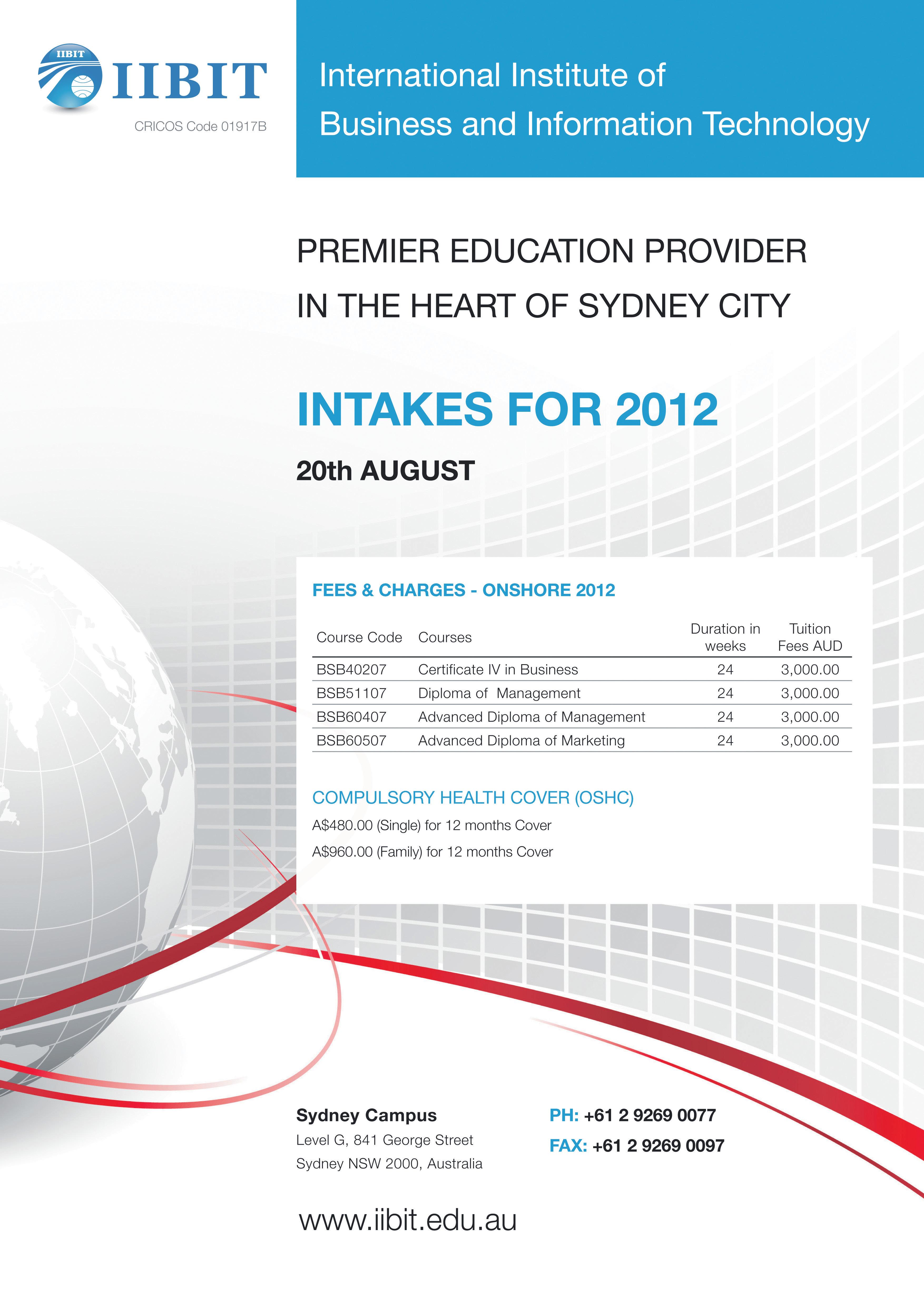
AUGUST (1) 2012 55 NATIONAL EDITION
in Bollywood
the Buzz
Satyamev ends with aplomb
From garnering overwhelming TrPs to getting prominence on social networking websites, the impact of Aamir Khan’s Satyamev Jayate has been colossal. The talk show, which started with the issue of female foeticide, traversed over various burning social issues informing, educating, sensitising and touching audiences’ hearts. The last episode highlighted the right to equality, ending the show’s incredibly successful
So much has been said about Satyamev , but the fact remains that it could only take the power of Aamir Khan to bring forth unknown facts related to child sex abuse, medical malpractice, manual scavenging and dowry – hitherto issues that have always seemed safe swept
But what’s amazing about Aamir’s journey is that he followed up off-screen by meeting concerned leaders to ensure the problems are resolved.
The actor-filmmaker met rajasthan hief Minister Ashok Gehlot to request the creation of a fast track court to decide the cases of the doctors, none of who have been penalised in the female
oincidently, the Protection of children ffences Bill 2011, that was earlier cleared by rajya Sabha, got the nod from the lower house after the second episode of Satyamev Jayate
The grand finale highlighted the basic tenets of the constitution that promises equality for all; however, ironically the people in the country are still subjected to discriminations on the basis of caste and
“When India’s leaders envisaged building a new nation after independence, the constitution was the foundation stone of this endeavour. We had resolved to establish a sovereign, secular, democratic republic with justice,
SS WHo ?
liberty, equality and fraternity for all. After 65 years of Independence, are we actually living up to those principles,” Aamir asked. The episode saluted the courage of the Sarvodaya Trust, which sheltered both hindu and Muslim children after the 2001 devastating earthquake in Gujarat, as well as Sunitha Krishnan, a social worker who looks to rehabilitate prostitutes and rape victims through her anti-trafficking organisation Prajwala.
Sunitha, one of the rape victims, said that the irony is that “people want to make documentaries and movies on these girls, but no one wants to own them.”
The episode also appreciated the work of Naseema hurzuk, a wheelchair bound lady who runs helpers of The handicapped, an organisation that helps the disabled.
despite the controversy that the show has raked up, Satyamev Jayate has been a winner across India and the diaspora, with its well-researched topics, sensitive case studies, pithy interviews and often heartwrenchingly poignant stories. Prior to the series, the actor had said that he wanted to replicate the phenomena created by epic teleseries of yore Mahabharata and Ramayana, and there’s no doubt that he has done so. Big brands have also supported the series, a first for a reality show that puts the spotlight on the invisible people in the country.
Kudos Aamir, for a sensational and sensitive series, and let’s hope there will be a second season.
oMg! Sonakshi and Prabhu an item!
or to be accurate, Sonakshi Sinha and Prabhu deva will be dancing together to Go Go Govinda for Akshay Kumar’s home production, Oh My God directed by Umesh Shukla. The pair are not a part of the film, but will only make a special appearance for the song, clarified Akshay.
“Sonakshi and Prabhu sir are not in Oh My God. They are doing a short cameo role in the film,” he said at the dVd launch of his previous film Rowdy Rathore recently.
There was also speculation about Sonakshi hurting herself during the shoot, but Sonakshi clarified that it was just a minor ‘neck sprain’ and she is fine now.
culture scene, apna Sallu will join the industry’s best in the section that is designed to create the experience of being on a Bollywood film. Salman’s waxwork will certainly feel at home in there, although the experience of having SrK for company may dampen his enthusiasm! Salman personally chose and donated the black top and denim jeans for his wax figure. You can bet Facebook will explode with photographs of star-struck fans posing with Salman. The unreal one.
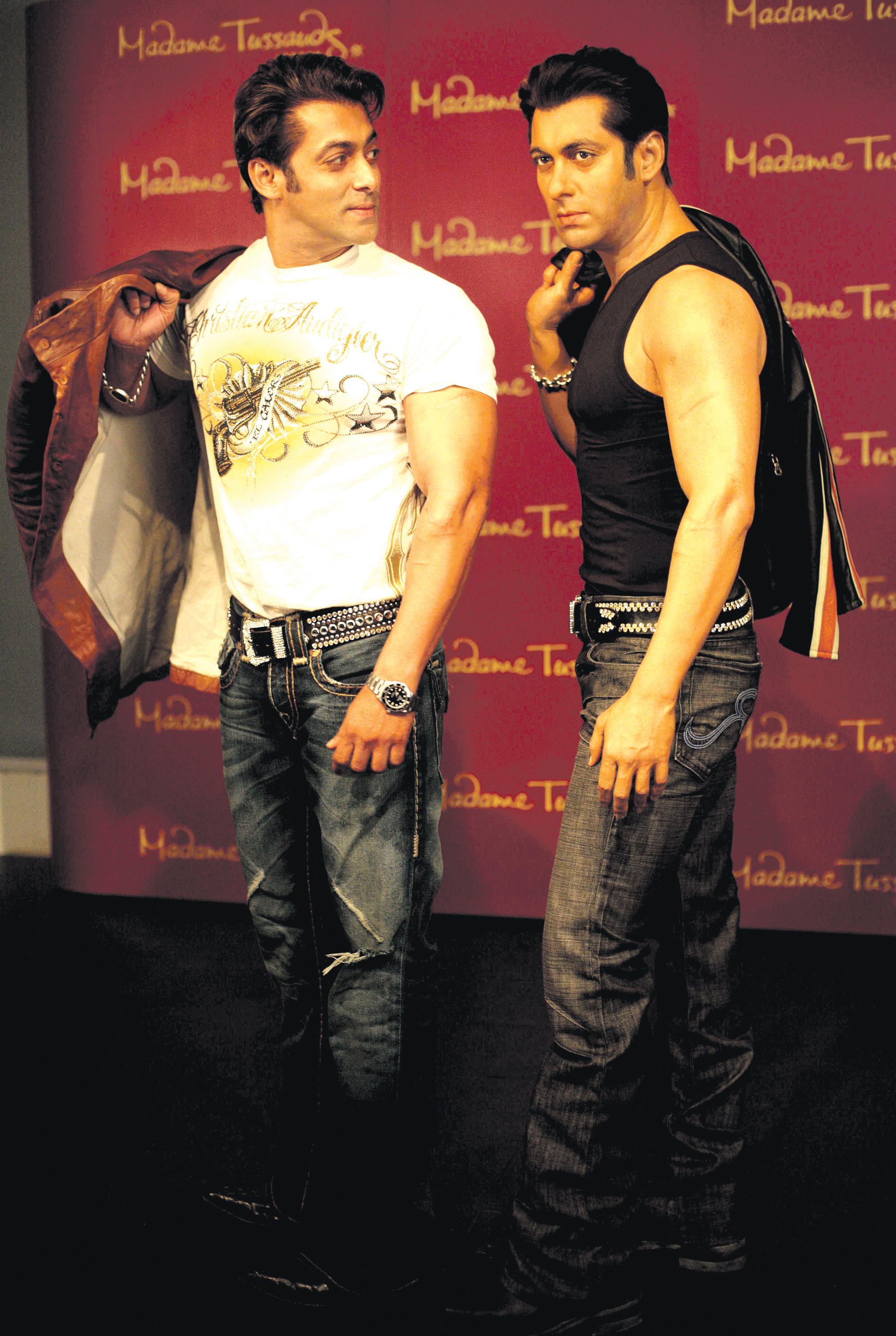
She’s got an MBA, has acted in offbeat Hindi films, even a Chinese film, is married to a construction baron in Mumbai, and owns one of the city’s leading restaurants

Rowdy Rathore smashed the box office by crossing the rs.100 crore, and Akshay attributes its success to director Prabhu deva for whom he has great regard. of working with Prabhu he said, “he gets angry if someone does not give a good shot or doesn’t do his work properly. he is very shy otherwise and does not talk too much,” he said.
Looks like Akshay wants to keep a firm hold on jodis that work for him and the box office. And what could be more exciting that sensational Sonakshi and pirouetting Prabhu? Bet it’s a must-see!
entertainment a BH i L aSH a S en
GUPta brings us up-to-date on what’s hot and happening
56 AUGUST (1) 2012 www.indianlink.com.au
(Find the answer under Caption Contest)
Farah’s fandangoes
Moving on to another Khan, a female this time, Bollywood is buzzing at the seemingly bizzare behaviour of choreographer-turned-director Farah Khan, who recently made her acting debut with Shirin Farhad Ki Toh Nikal Padi But she agreed to star in the movie only if its makers agreed to remove a kissing scene from the script.
The movie, directed by Bela Sehgal, narrates the story of two 40-plus lovers. The kissing scene would have involved the 47-year old Farah and actor Boman Irani. But neither was Farah comfortable, nor did she think it was important. And I suppose, she didn’t want any controversy from her seeking-thespotlight hubby Shirish Kunder, already famous for his bust-up with Shah rukh Khan. The movie will release in late August.
But that’s not all – Farah is now going out of her way, literally, to promote her home production Joker, by trying to get Indian-American astronaut Sunita Williams to watch the movie which is based on aliens, while in space. According to Farah, whose husband Shirish Kunder has directed the Akshay Kumar and Sonakshi Sinha-starrer, the team is in talks with officials of NASA to see if it can be made possible for Williams to watch the film. Although whether she would want to watch it is anyone’s guess!
And finally, actress chitrangada Singh, who has grooved to an item song in Joker reveals the filmmakers changed the lyrics of the song “I want fakht you” to “I want just you” to avoid any unwanted reactions. She says “Fakht” is actually a Marathi word, meaning “only” you.
“Everyone doesn’t understand it. They can interpret it in some other way also. So, to save that situation, they (filmmakers) decided to go with ‘Just you’ and it is just as much fun,” said the 36-year-old. Thank goodness, it’s difficult to imagine the extent of controversy that ‘F’ word would have created. or perhaps that was the intention of the original version?
After all, anything associated with Shirish has the potential for high drama and controversy.
So let’s look forward to watching chitrangana flaunt her stuff, and let’s hope the film won’t be a bad joke!
Pooja on the prowl
Mahesh Bhatt couldn’t be happier with the success of his daughter Pooja’s career, specially since the one-time and not-so-successful actress turned her talent to directing.
And now Pooja Bhatt says she is keen to revisit her father’s 1974 ‘radical’ and ‘shocking’ film, Manzilein Aur Bhi Hain

Needless to say, Mahesh Bhatt has welcomed his daughter’s decision.
“I would love to look at my father’s Manzilein Aur Bhi Hain. It was banned by the censor board at that time and he broke a table in frustration. I was very young and we didn’t have money. he walked back home from there (censor board office) to Shivaji Park. It was the dead end in his life,” Pooja said.
Forty years ago, a 20-something Mahesh Bhatt made Manzilein Aur Bhi Hain, starring Kabir Bedi, Gulshan Arora and Prema Narayan. After several censorship hiccups the film finally hit the
screens, but neither the critics nor the public appreciated it. But Indian cinema has now been revolutionised by movies like The Dirty Picture and Delhi Belly. Bhatt’s film was ahead of its time, but the concept could be revived by Bhatt junior.
Pooja is perked about the release of her adult film Jism 2, which she says, will be a game changer for her, just as the 1982 Arth was for her father Mahesh Bhatt. She has directed four films - Paap, Holiday, Dhokha and Kajraare, but none made any impact at the fickle box office. But with the erotic thriller Jism 2, Pooja is hoping for success, fame and acclaim.
“It’s a coincidence that even I am at the same stage (as my father). Even he had made around four movies (before Arth) and none of them did well. he was at a point in his career where nothing was
Pooja also finds a common thread Jism 2
“The specialty of Arth is that a lady makes a choice not to be with her husband and neither with her , Isna, who is a porn star, makes a conscious choice for her life too. The choices they make are the similarity, and in is contemporary with a world view,” explained anadian porn star Sunny Leone plays the lead in the film, which has, ironically, received an ‘A’ rating from entral Board of Film ertification (cBFc).
Pooja admits that her film has an adult theme, and doesn’t mind it being aired on the post 11pm slot.

“I have made an adult film; you can’t really sell alcohol on a children’s channel! So if one is making a film with the adult title, how can I water down and release it in prime time in the afternoon?” she asked.
“I am very clear I want the 11 pm slot or I am open with the home video market. I have to look at new ways to look at the market for my product,” added the director, who was smart enough to release promotional videos of only those songs on TV that had no sexual content.
The rest were marketed online, “a more than worthy competitor of TV”, according also features randeep hooda and Arunoday Singh alongside Sunny. Let’s see if Pooja makes the grade, and firmly steps into her father’s shoes.
international awards
While we wrap ourselves in the glitz, glamour and bling of Bollywood, some lesser-known Indian productions have been winning on the international film circuit. Like the documentary Big in made by Indian-American actor mi Vaidya, which was declared the best foreign film at the recently concluded Las Vegas Film Festival. The documentary mi’s struggling days as an actor in Los Angeles and how he lands a dream role in blockbuster 3 Idiots

And now filmmakers Prashant Nair ahake have won the irectors Vision Award at the 9th edition of Indian Film festival of Stuttgart, Germany for their films
What’s Salman saying that’s making Katrina laugh here?

Salman: i’m reconnecting with all my ex-girlfriends: Katrina, Sangeeta…. You listening, aishwarya?
Katrina: Yeah right, dream on, boofhead!
Gurnam Singh

Altona North, VIC
Delhi In A Day and Shala respectively.
The director’s Vision Award is given to a film that looks at life with an incisive perspective.
While Shala is a story of school children coming of age in a repressive small-town society, Delhi In A Day is about capital’s urban rich and their servants seen through the eyes of an NrI.
“The entire team is delighted to have received this award as an endorsement of the message and theme of the movie. It was really wonderful to see the film resonate with German audiences in such a positive way. The Indian Film Festival of Stuttgart had a wonderful selection of films, watched by extremely enthusiastic audiences and we’re proud to have been a part of it,” said Nair in a statement.
Let’s hope Bollywood wakes up and takes notice of the wealth of untapped talent out there on its doorstep. Literally!
 Perizaad Zorabian
Perizaad Zorabian
CaPtiOn
to
COnte St Answer
GUESS ?hoW
What’s Gauri saying to Shahrukh and Aamir here? Send in your responses to info@indianlink.com.au and win a surprise prize
aaMir KHaN
oMi VaiDYa
Pooja BHaTT
SoNaKSHi
Last issue Caption Contest winning entry
AUGUST (1) 2012 57 NATIONAL EDITION
Gurnam wins tickets for the new hindi film, Ek Tha Tiger



58 AUGUST (1) 2012 www.indianlink.com.au

AUGUST (1) 2012 59 NATIONAL EDITION
Cine Talk
Delicately-threaded morality tale
Films with children as the main characters are no longer a rarity. Thank god for that! It’s imperative that our cinema cultivate a culture of entertainment that children can empathize with without the content becoming overpowering in its messagemongering motivations.
Gattu is a delicately-threaded morality tale about a poor little boy, never sorry for himself except when play-acting the role of the bereft waif to get his way, who is taken in by his uncle (Naresh Kumar, brilliantly in character).
Now here’s where the subtle often slyly humorous film gets tangled. It tells us that contrary to stereotypical expectations the uncle is no slave-driving villain. he has his good and bad moments with the kid.
Gattu tells us there are no black and white zones to bring up underprivileged children. While child labour is prohibited, it can also be a way of providing sustenance for homeless kids. While Gattu longs for a school education, he uses the academic premise to hoodwink
the students and teachers to implement his own devious plans.
While on the surface Gattu is a breezy blithe and effervescent look-see at the pangs and pinpricks of growing-up at the grassroots, under the surface it ponders sensibly on the question of raising a poor child with dignity outside the rarefied precincts of a school.

All the kids, specially Mohammad Samad in the title role, are delightful in their natural ability to own the camera space.
director rajan Khosa enters the world of innocence with devious intent. he penetrates the surface of juvenile guilelessness to explore the cunning that often underlines the machinations of the the very young.
Gattu portrays heart-warming moments within and outside the school premise. While making a fervent pitch for every child to attend school, the narrative never misses out on a chance for a bit of fun on the fringes.
Gattu is an endearing peep
into a child’s life as he struggles with intuitive intelligence to bring together the two incompatible worlds of poverty and the solace of schooling.
Mohammad Samad as the boy who would fly higher than a kite is a prized find.
Sandesh Shandilya’s ebullient songs and music brings its own spot of sunshine in this not-to-
Pretty uncool
can’t. Now, get a load of this. Sid (riteish deshmukh) is a struggling musician. Adi (Tusshar Kapoor) is a struggling actor. And they’re part of a sex comedy struggling to be funny in every single line that these two chaddi buddies utter to one another and to the world at large.
after all the official sequel to a 2005 comedy that defied every rule of good taste.
of age.
Gattu carries forward the recent trend of sensible, intelligent funny and moving films about child protagonists, namely Taare Zameen Par, I Am Kalam and Stanley Ka Dabba Add one more film to that luminous list of cinema on little wonders.
Subhash K. Jha
Sach mein, boss. Kya superkool film hai
There are these two jobless, aimless, witless guys one of who can’t act to save his life, and the other one who can act but has to pretend he can’t to keep pace with the one who
So the real hero of this masterpiece of murky mirth is the dialogue writer. he uses every possible occasion in the dialogue draft to slip in sexual puns. Not a single human orifice is spared in the furious fusillade of double innuendos. In that sense, this is a very democratic comedy. It insults every one and everything from dogs to humans, from gays to gurus.... And why shouldn’t it? This is
Kyaa Super Kool Hain Hum multiplies the filth manifold. The packaging and presentation are this time updated. The glamour quotient is enhanced with the presence of two engaging eye-candies Neha Sharma and Sarah Jane dias who join in the vulgarity with a gusto that suggests a deep bond between risque humour and sex appeal.

So is risque sexy? Is raunchy cool? You decide. As far as I am concerned I am still too numbed by the ceaseless torrent of verbal obscenity to figure out if a barrage of dirty puns and phallic objects being stuck into every conceivable hole, strung together in a succession of gags and episodes, can be called a film.
delhi Belly, here they come?
There are some good comic actors here, giving really bad performances. The gay jokes are stretched to limits beyond offensiveness that climaxes with the two ladies dressed as chandramukhi and Paro singing Dildo la dildo la That pun on the original song Dil dola from Sanjay Leela Bhansali’s Devdas was sms-ed ad nauseam when the film was released in 2002.
Most of the pssst-pssst jokes in this farce-fest come across laboured and tired. deshmukh, a comic actor of impeccable aptitudes, does his best to breathe life into gags and situations that elevate puerility to an art form. he succeeds in making us titter when we aren’t busy squirming over the onslaught of obscenity.
The rest of the cast takes the cult of crassness to hammy heights. Anupam Kher, for example, plays a millionaire in Goa who believes his dead mom has been reincarnated as
a canine. And when he catches his alleged ‘mom’ doing what doggies do when they are in a film of this sort, he assumes his mother is now getting on her four legs what his father never gave on two legs.
If you think the above situation is funny, then go ahead. Go for the film and laugh your head off at the frenzy of phallic jokes.
Subhash K. Jha
FiLm: Kyaa Super Kool
Hain Hum
CaSt: riteish
Deshmukh, Tusshar
Kapoor
DireCtOr: Sachin Yardi
ratinG: No stars
entertainment
FiLm: Gattu
CaSt: Mohammad Samad, Naresh Kumar
DireCtOr: rajan Khosa
Achcha to hum chalte hain
Rajesh Khanna, Bollywood’s first superstar, bids a quiet adieu
From the dizzying heights of fame to quiet shadows behind the arclights, Rajesh Khanna’s life had a theatrical sweep, almost like one of his films. Bollywood’s original superstar - simply the phenomenon to some - died in Mumbai on July 18, leaving behind memories cast in celluloid of that famous crooked smile and head tilt. He was only 69. In an era long before this age of instant connect of mobile phones and internet, Rajesh Khanna was the man who sparked a frenzy never seen before and never since, not even by the likes of Amitabh Bachchan.
His very name spelt magic in the 1970s. He sparked hysteria, particularly amongst his legions of women fans, who would line the road for a glimpse, chant his name, cover his car with lipstick marks and even write him letters in blood. They got married to his photograph, cut their finger, let the blood flow and applied sindoor
Truly, O mere dil ke chain!
Kaka, as he was popularly known, was one of the highest paid actors of his time, his record of consecutive solo super hits still unbroken. Who can forget the years between 1970-1979 when he starred in mega hits like Safar, Kati Patang, Sachaa Jhutha, Aan Milo Sajna, Anand, Amar Prem and Mere Jeevan Saathi. Ever the urbane, suave romantic who wooed like few others.
Rajesh started his career with the 1966 film Akhari Khat. Glory and fame galore came his way with the two 1969 films - Aradhana and Do Raaste - where he teamed up with two of his best co-stars, Sharmila Tagore and Mumtaz, respectively. Both the films were super hits. Hindi film’s first superstar was born.
Between Aradhana in 1969 and Prem Kahani in 1975, Rajesh enjoyed god-like status.
It was all about charisma - a certain something that went beyond the art of acting. He had that unique way of delivering a dialogue, of crinkling his eyes and that interesting head tilt that were all his own - and designed to get fans swooning.
Describing the charm of Rajesh Khanna, Amitabh once said: “I got famous purely because I was working with Rajesh Khanna in Anand. People asked me questions like, ‘How is he to look at? What does he do?’”
The mega story had a small beginning in Amritsar. Born Jatin Khanna on Dec 29, 1942, he was adopted and raised by foster parents.
He went from being Jatin to Rajesh, thanks to his uncle who changed his name, when he decided to join films.
In 1965, the journey to filmdom started after he won the All India Talent Contest organised by United Producers and Filmfare He made his debut with Aakhri Khat in 1966.
It was a fairly easy road to superstardom after that. He became the heartthrob of the nation, singing timeless melodies like Mere Sapnon Ki Rani... in Aradhana, Zindagi Ek Safar in Andaaz or Yeh Shaam Mastani in Kati Patang. Singer Kishore Kumar and composer R.D. Burman were amongst his closest friends.
In his four-decade career, he appeared in about 160 films, of which 106 had him as the solo lead hero and 22 were two hero projects.
Rajesh proved his mettle in offbeat films too. He teamed up with Hrishikesh Mukherjee for the critically acclaimed Bawarchi and Namak Haram. The quintessential romantic also did the intense Avishkar, directed by Basu Bhattacharya. But then age caught up and the star began fading away.
He moved to television and played the main lead in two serials - Ittefaque and Apne Paraye during 2001-02 and also featured in Raghukul Reet Sada Chali Aayi between 2008-09.
The decline to B-grade films was inevitable. There was also the sorry Wafa with Laila Khan, who was found murdered this July.
He dabbled in politics, being Congress MP from the New Delhi constituency from 1991-1996.
Grandson Aarav performs last rites
At his funeral at the Vile Parle crematorium on July 19, it was Khanna’s nineyear-old grandson Aarav that put the pyre to torch, as family, friends and fans watched. he was gently guided by his actor-father Akshay Kumar who is married to rajesh Khanna’s elder daughter Twinkle.
An eyewitness reported that Amitabh Bachchan hugged and consoled an emotional dimple Kapadia and her second daughter rinke at the funeral. Kaka’s ex-girlfriend Anju Mahendru was also present and was seen crying.
daughter Twinkle was missing from the funeral procession as she is in the family way. Keeping the security issues in consideration, the police officials suggested the late superstar’s family members not allow too many people inside the crematorium, as a result not even media were allowed in.
The legend’s final journey started around 10 a.m. from his home Aashirwad. his body, in a glass casket, was placed on a mini-truck decorated with white flowers. The procession went through carter road, Turner road and S.V. road before reaching the Vile Parle crematorium. The original plan was to have a longer procession, but due to rain it was cut short.

despite rain, thousands, including the superstar’s friends, film fraternity members and fans gathered to say a tearful goodbye to rajesh Khanna.
The frenzy was perhaps just what the Bollywood’s first superstar had been missing in his last years. It was a farewell that the superstar deserved. Among the Bollywood bigwigs who attended his last rites were Sudhir Mishra, rani Mukerji, Karan Johar, Sajid Khan, Abhishek Bachchan, Vinod Khanna and Aadesh Shrivastava.
Khanna’s last words before his demise, according to megastar Amitabh Bachchan, were “Time to pack up” in true Bollywood style.
Like the Hollywood legends of yore, the personal life also had a larger than life dimension.
He fell in love with Dimple Kapadia, who was only 16 and whose first film Bobby was yet to release. She was 15 years younger to him but the pull was strong and they got married after a whirlwind romance in 1973.
It was the stuff of tabloid headlines. They had two daughters Twinkle and Rinke. The marriage lasted only 11 years.
It was a lonely life for Rajesh after that. He disappeared from
the headlines and appeared to be a shadow of his former self in his rare public appearances.
But the family came together in his last days. His estranged wife was the one who took care of him during his illness. Sonin-law Akshay Kumar was also a great comfort. When news of his critical health first came out on June 20, legion of his fans expressed concern. A day later, he stepped out in the company of Akshay Kumar and estranged wife Dimple Kapadia to tell his fans that all is well.
But clearly it wasn’t.
He was a shadow of himself, gaunt and ravaged by illness, with glares covering the famous face that would once reduce women to a swoon.
On June 23, Kaka - as he was popularly known in the film world - was in the hospital, and the stay stretched for 15 days. Just a week after he was discharged, he was back to the hospital bed due to “weakness”, but was allowed to go home soon after.
Though family members maintained he was “fine”, Rajesh was said to be critical and breathed his last at his Bandra home Aashirwad.
Film celebrities like Amitabh Bachchan, Shah Rukh Khan, Salman Khan, Abhishek Bachchan, Shabana Azmi, Sajid Khan, Farah Khan and Prem Chopra came to his residence to pay their respects after news of his demise spread.
Prime Minister Manmohan Singh, West Bengal Chief Minister Mamata Banerjee and Information and Broadcasting Minister Ambika Soni were amongst the political leaders who condoled the death of the star.
His last screen appearance was an ad for Havells fans, with which he once again became the talk of town. But it was an eerie intimation of what was to come. In it, Kaka reminisced in an empty auditorium with music from his films echoing in the background. He was clearly unwell but the zest in his voice was intact.
“Babumoshai,” he intoned deeplythe affectionate Bengali address he made all his own after Anand Like Anand from the film, the man is gone. But the memories will live on.
IANS
AUGUST (1) 2012 61 NATIONAL EDITION T R i B u T e
Photo: AP

62 AUGUST (1) 2012 www.indianlink.com.au
tarOt
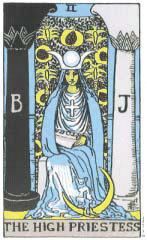
ArIES March 21 - April 19
Your card of the month is the Five of Swords. tarot predicts you will be a little short tempered: watch your sharp tongue, as you may upset others. there may be some miscommunication. You are unable to let go of some anger that has built up. take care with your valuables as you may find that you are a bit scatterbrained and forgetful. there is also some news on the job front, possibly a change of department or location.
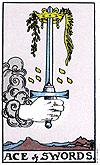
TAUrUS April 20 - May 20
Your card this month is the empress, representing the Goddess of Love. there will be some ideas of growth, creativity, luxury and nurturing. if you want to get pregnant, this is a fortunate month. Work and family pressures will be mounting, but you will get some good news around work. Promotion could be yours to have. You will feel fitter than normal, and watch your diet and food intake. rest is essential this month: watch out for those late nights.
GEmINI May 21 - June 20
Your ruling card this month is the Page of Pentacles. this month you will find around you a person who will be very important to you, perhaps an admirer, which will be a happy surprise. You may find that this person is rather shy so you may have to make the first move: don’t hold back! tarot also suggests a new job opportunity or a pay raise. Family issues may trouble you as an older member is not too well.

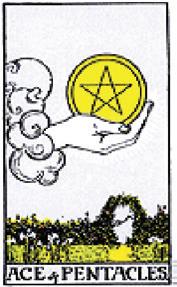
cANcEr June 21 - July 20
Your ruling card this month is the King of Pentacles. this is an influence of a dark haired man: your boss, father or possibly a lover. the month will bring you many opportunities such as a new business venture which you have been thinking about for some time. Keep your eyes open and stay focused as you may feel a little inclined to not want to do much. the rest of the month sees you feeling quite settled.
LEO July 23 - Aug 22
Your ruling car this month is the two of Pentacles. tarot suggests there is a strong need to learn how to balance your home/work life. You will find that you will be in great demand this month and you will feel quite stressed out and tired as a result. Be careful of flirtation this month as you will have more than one lover around you. money may be a concern too this month. Learn to organise your finances better.
VIrGO Aug 23 - sep 22
Your card this month is the King of Wands. there will be a strong, aggressive, demanding yet lovable lover in your life. if this person is not around you yet, they are entering your life. Watch out for charming people as you are easily taken in by words. Career is going well. You will have increased responsibility or be moved to a new department or office. there is a good chance of news of a baby around you or your family.





predictions for AUGUST 2012
 By NANcy JADE ALTHEA www.nancysood.com
By NANcy JADE ALTHEA www.nancysood.com
LIbrA sep 23 - oct 22
Your ruling card is the Queen of Wands. You are feeling very energetic and motivated, and in the mood to be more sexy and giving towards your partner. treat your lover well and you will be rewarded with joy and contentment in your relationship. You may look at moving to a new property or planning for the future. You see life differently now, and feel it is time to be more responsible and settled. Be careful of a troublesome ex.



ScOrpIO oct 23 - nov 21
Your ruling card this month is the Knight of Wands. You are feeling very enthusiastic, full of sexual energy and very aggressive where your work is concerned. You want to reach the top and are determined to get there. there is a strong chance you will receive a good job offer and change your job. there may be a whirlwind romance, but it will just be fun. take care of your health, as you have been over-indulging of late.
SAGITTArIUS nov 22 - dec 21
Your ruling card this month is the Wheel of Fortune. You are full of questions about your future, as things seem to be very uncertain around you. there will be some struggles. Luck will be on your side. You have always managed to get sorted out in the past whenever you find yourself in any difficulties. Your mother or an older lady in your family may be going through some health issues, and tiredness. tarot suggests trips to the hospital.
cAprIcOrN dec 22 - Jan 19
Your ruling card this month is Strength. there will be a huge amount of sexual energy around, and you will be most compatible with your lover. For singles, this is a great time to meet someone who you feel at ease with, and you will strike a very interesting balance with this person. an old flame may rekindle feelings and bring about changes. You may be feeing upset about the past. You are going to find out some shocking truths.
AqUArIUS Jan 20 - feb 18
Your ruling card this month is the Chariot. You will be more in control of your life. People will try to tell you what to do, but they should not organise your life. You will be thinking of travelling, stop holding yourself back, just go with the flow and enjoy life. there is a lot in store for you so take your chances with life and let things flow. You have not had time for yourself for a while.
pIScES feb 19 - March 20
Your ruling card this month is the three of Wands. You are ready for a relationship but you need to do things before allowing someone to come into your existence. Be patience and you will find someone special as they are waiting for you. You may think selling your home or buying a new one – it is a great time for property matters. there is an indication that a surprise is waiting, this could be at work or financially. Have fun.
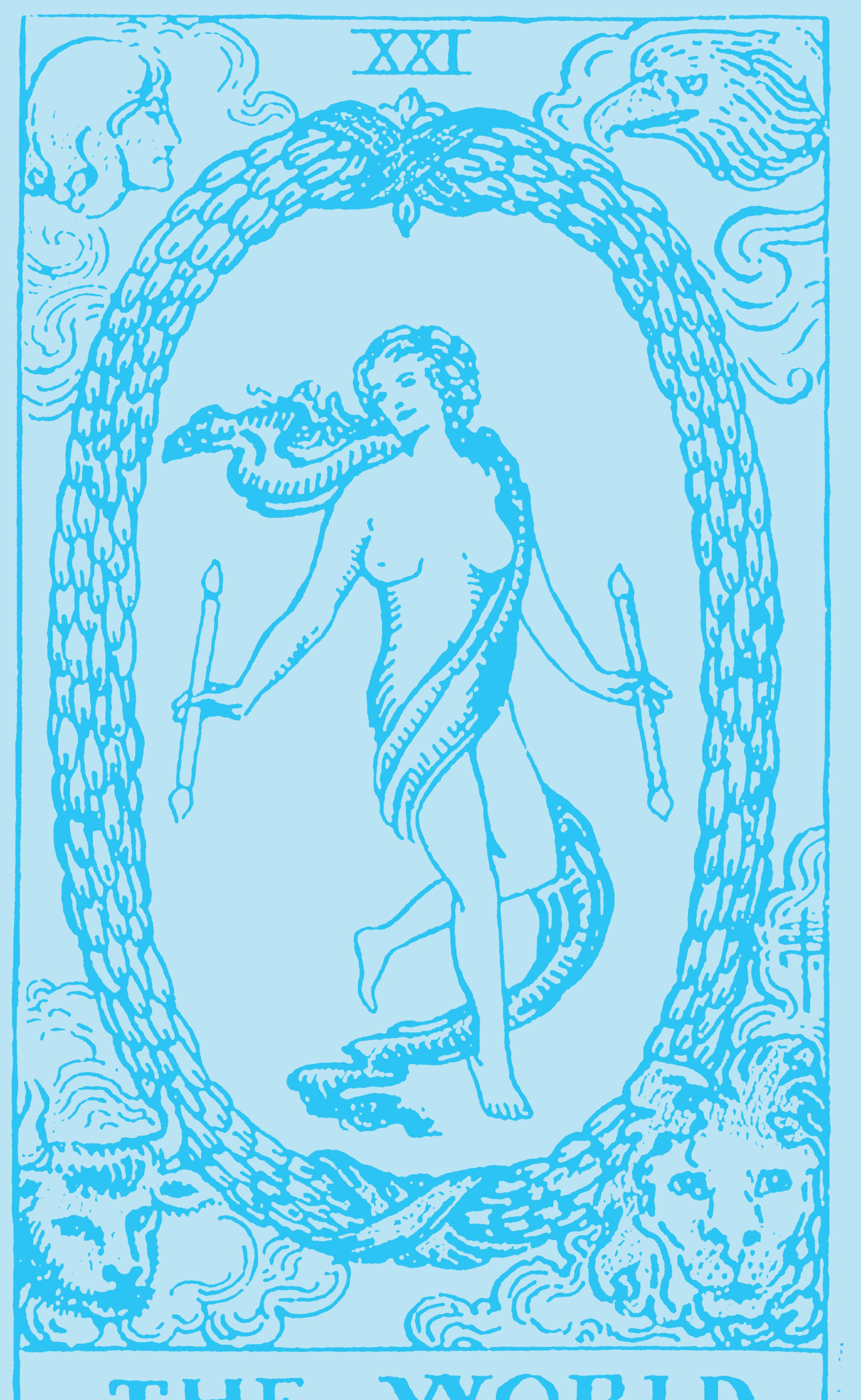
STARS FORETELL
A new kind of manliness
It’s a funny world with globe-shaking events like cults and fries dominating lives
BY NURY VITTACHI
The right to revv
Motorcyclists are claiming that the right to be macho is part of the human rights of every male. A fight started when US authorities recently banned a gathering at which bikers lock their brakes and rev their engines to see how big a cloud of dust and smoke they can generate. Angry bikers took out a lawsuit saying that men’s right to “express their manliness” was “protected by the First Amendment”.

What a wonderfully broad excuse for doing stupid, pointless things. I plan to use it frequently. “I’m sorry I ate your dinner/ seduced your wife/ falsified the interbank lending rate. I was merely exercising my right to express my manliness.”
I was forwarded the story above by a reader who did not wish his name to be printed as he had been ‘chicked’ (which means beaten by a female at a sport). “Everywhere, the male sex is in crisis,” he said. He’s right. “Maschismo On Wane” cried a Wall St Journal headline not long ago. In India, sales of motorbikes (male vehicles) are way down, while scooters (female vehicles) are soaring.
China invades Japan, but rescue comes when a New Saviour is born. The second is a feature-length anime cartoon in which Japan is attacked but salvation comes when a New Saviour is born. If you asked these guys to make a TV ad for soap powder, it would say:
Strange cults are back in the news

Every few weeks, one needs to step aside from the chaotic hurly burly of modern life, quieten one’s heart, and focus on deep matters of the spirit or, as we scientific types like to say, “evil wacko cults”.
assault with a deadly French fry
In a global outbreak of violence, evil criminals are assaulting innocent civilians with deadly weapons such as French fries, in some cases, unsalted. In recent times alone, there have been at least 10 cases of food-assisted robberies, according to cuttings sent to me by readers. In the US, a man “attacked and robbed a Brockton man using stolen sausage links”, according to the press in that country. In Croatia, a footballer was attacked with a banana, and in the UK a man was arrested for throwing lasagna.
Police are taking this seriously. A man who threw a packet of McDonald’s French fries at his stepdaughter was arrested for “felony assault with a dangerous weapon”, according to a June 26 police report in the US state of Massachusetts. James Hackett was “charged with assault and battery with a dangerous weapon, to wit, a French fry”, police said.

I was reminded of the time reader Stephen Birkett told me his mango was confiscated as he boarded a domestic flight in India. Why? “For security reasons,” staff told him.
What happened to good old guns and knives?
The best theory I heard was from my mentor/bartender, who said the United Nations worldwide gun control crackdown was accelerating in the run-up to the global summit on the subject being held this month.
“Since guns are harder to get hold of, people are going for whatever is at hand, including French fries, sausages, etc,” he said. But can you really hurt someone with a French fry? He thought for a moment. “Sure. French fries kill. But you don’t need to hit people with them. Just feed them to them at regular intervals.”
As everyone knows, brave Katie Holmes rescued her innocent little girl from Tom Cruise’s weirdo cult and retreated back to the modelling community, a nice, safe world where women with severe eating disorders earn fortunes by striding down catwalks with pineapples on their heads. Wait. Mr Cruise’s weird cult sounds way more sane!

A reader whom I shall not name tells me he was tempted to join Scientology after seeing Mr Cruise walk up the outside of the Burj Dubai skyscraper in the recent Mission Impossible movie. I informed him that if he actually believes what he sees in the movies, he’ll be a very happy Scientologist.
But I also urged him to consider Asia’s equivalent to Scientology, a religion called Happy Science, which sends me press releases. Happy Science promotes itself by making astonishingly bad movies, and is about to launch two new ones this season. Final Judgement is an action movie in which
“Buy this soap powder! And by the way, let’s watch together as a New Saviour is born!” Happy Science started in 1986 when banker Ryuho Okawa (the new saviour) told the people of Japan that he was the reincarnation of the Buddha, and his wife the reincarnation of Aphrodite. Did people just laugh and tell them to lay off the sake for a while? Of course they didn’t. This is Asia. Thousands of people signed up from across the region.
The cult went through a bad patch last year when the Buddha and Aphrodite had a big fight and got divorced. But Mr Okawa seems to have got his groove back, according to his latest press releases.
The Happy Science founder is currently wowing people by revealing the addresses of celebrities after they have died. “Currently Beethoven lives in the lower area of the Bodhisattva Realm of the 7th dimension in the Spirit world,” he says. Charles Darwin is in ‘Abysmal Hell’, which is pretty bad, but not quite as bad as ‘Deepest Hell’, the present address of Frederick Nietzsche.
At first, I wondered why a philosopher should be in the bottom part of hell. But then I remembered what Nietzsche once said: “God is dead.” Mr Okawa took that as a personal insult.
64 AUGUST (1) 2012 BAc Kc HAT

AUGUST (1) 2012 65 NATIONAL EDITION

66 AUGUST (1) 2012 www.indianlink.com.au

AUGUST (1) 2012 67 NATIONAL EDITION
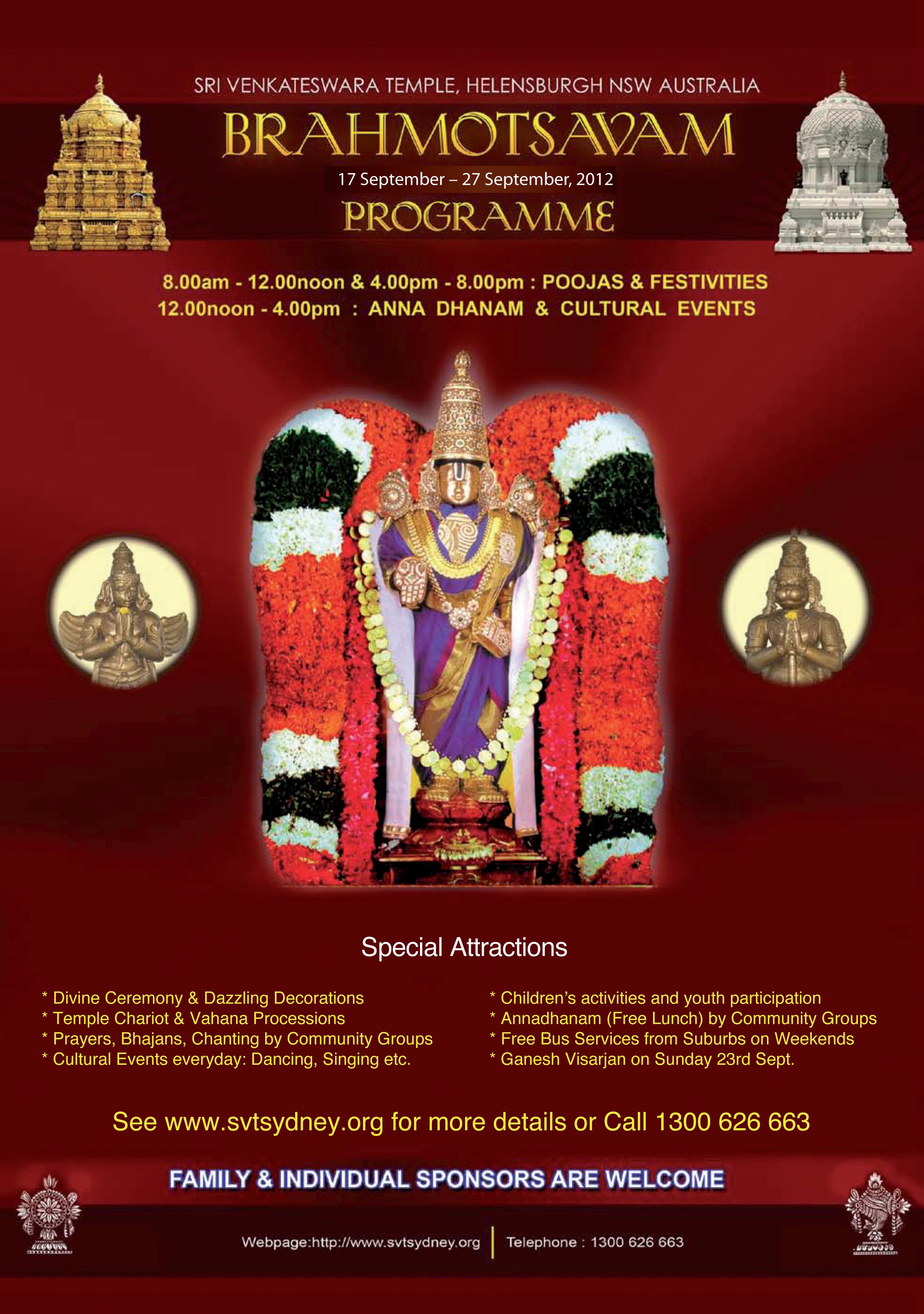
68 AUGUST (1) 2012 www.indianlink.com.au











































 BY CHITRA SUDARSHAN
BY CHITRA SUDARSHAN


 BY USHA RAMANUJAM ARVIND
BY USHA RAMANUJAM ARVIND















































































 BY PETRA O’NEILL
BY PETRA O’NEILL












 BY GEETA KHURANA
BY GEETA KHURANA











 BY RANI JHALA
BY RANI JHALA


 BY TALIA KAUR
BY TALIA KAUR



















 Perizaad Zorabian
Perizaad Zorabian
















 By NANcy JADE ALTHEA www.nancysood.com
By NANcy JADE ALTHEA www.nancysood.com











